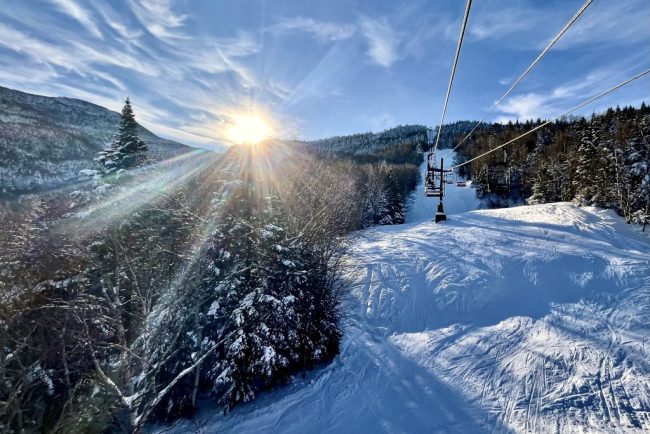
This Space is Getting Hot
Conditions & Atmosphere Weather: Sunny and hot, with a high near 92. Light southwest wind. Vibes: It’s a sizzler at Smuggs today, and the perfect excuse to make a splash! You should take full advantage of our pools, nearby reservoirs, and hidden swimming holes to keep cool. […]
ViewsGet your 2025/2026 Season Pass or Bash Badge – NOW!
Pass It On: Smuggs Best Deal Ends Labor Day! Winter might feel far away, but your best ski days start now. Lock in your Smuggs Season Pass or Bash Badge before 9/1/25 and score the lowest prices of the year. From unlimited access to midweek-only […]
ViewsThis Weekend is Full!
Conditions & Atmosphere Weather: A 30 percent chance of showers and thunderstorms, mainly between 2:00 pm and 5:00 pm. Partly sunny, with a high near 82. Calm Wind. Vibes: We’re excited for a Full Moon weekend that’s full of events and activities for many different interests. The weather […]
Views
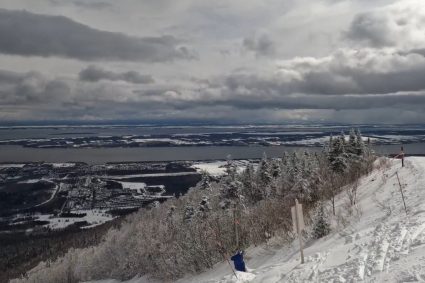
Mountain Review: Mont-Sainte-Anne
MOUNTAIN SCORE #4 East Coast 61 #67 Overall WRITTEN REVIEW MOUNTAIN STATS CATEGORY BREAKDOWN See our criteria 6 Snow: 6 Resiliency: 4 Size: 6 Terrain Diversity: 6 Challenge: 7 Lifts: 7 Crowd Flow: 6 Facilities: 6 Navigation: 7 Mountain Aesthetic: GOOD TO KNOW […]
MountainMOUNTAIN SCORE
61
CATEGORY BREAKDOWN
6
Snow:
6
Resiliency:
4
Size:
6
Terrain Diversity:
6
Challenge:
7
Lifts:
7
Crowd Flow:
6
Facilities:
6
Navigation:
7
Mountain Aesthetic:
GOOD TO KNOW
1-Day Ticket: $73-$105 USD ($101-$104 CAD)
Pass Affiliation: Epic Pass (full pass only)
On-site Lodging: Yes
Après-Ski: Limited
Nearest Cities: Quebec City (1 hr), Montreal (3.5 hrs)
Recommended Ability Level:

+ Pros
-
Terrain diversity
-
Fast lifts
-
St. Lawrence River views
-
Available night skiing
-
Value
– Cons
-
Much more difficult to reach than other Northeast ski resorts
-
Some navigational challenges, especially around the summit
-
Some frontside snow reliability issues
MOUNTAIN STATS
Skiable Footprint: 547 acres
Total Footprint: 1,609 acres
Lift-Serviced Terrain: 100%
Top Elevation: 2,625 ft
Vertical Drop: 2,050 ft
Lifts: 9
Trails: 71
Beginner: 21%
Intermediate: 46%
Advanced/Expert: 33%
Mountain Review
Are you looking for a comprehensive ski resort experience in the Northeast, but don’t want the crowds of resorts further south? Well look no further than Mont-Sainte-Anne. With terrain for all abilities to enjoy, abundant and affordable lodging options, and easy access from nearby Quebec City, Mont-Sainte-Anne is a standout for visitors of all abilities and inclinations. So how does it compare to other resorts in the region?
Size and Terrain Layout
With 547 acres of skiable terrain, Mont-Sainte-Anne ranks among the largest ski areas in Quebec—and holds its own against some of the biggest resorts on the East Coast. 360-degree skiing and riding is available off the summit across half a dozen distinct terrain pods, giving the mountain a true big-mountain feel. Terrain is generally divided by ability zone, allowing lower-ability skiers and riders to enjoy much of the mountain without frequent interference from faster-moving experts; that said, a few shared junction points do exist.
360 degree skiing off of Mont-Sainte-Anne’s summit adds to the resort’s big-mountain feel.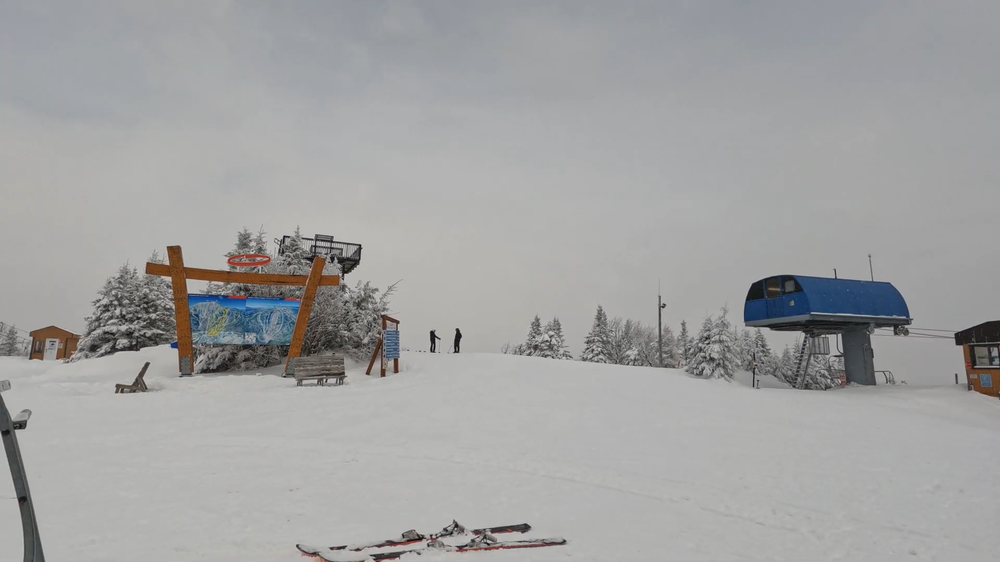
Beginner Terrain
Mont-Sainte-Anne offers a diverse and enjoyable beginner experience. Beginner terrain is spread across multiple areas of the resort, though most first-timers will find themselves descending east off the summit toward the north side base. These green trails feature long, gently-rolling pitches with a pleasant sense of isolation, offering serene views of the largely undeveloped woodlands to the northeast. Thanks to their higher elevation and northern exposure, these zones typically maintain snow quality far better than the base-area beginner zones found at many other resorts.
One of the resort’s most unique features for adventurous beginners—particularly children—is the Forêt Enchantée (Enchanted Forest), a beginner glade located in the backside zone. This area features interactive elements, including toys and wind chimes, creating a whimsical atmosphere rarely found at other resorts. The glade area itself is widely spaced and in some sections groomed, offering a choose-your-own-adventure experience that’s accessible to a broad range of ability levels.
Once visitors are ready to return to the front side, the long but scenic La Familiale trail provides a wide, straightforward route back to the main base without requiring a lift download. For true first-timers, Mont-Sainte-Anne also offers a magic carpet learning area near the base, set apart from the main skier traffic to ensure a safer environment for learning.
TRAIL MAP
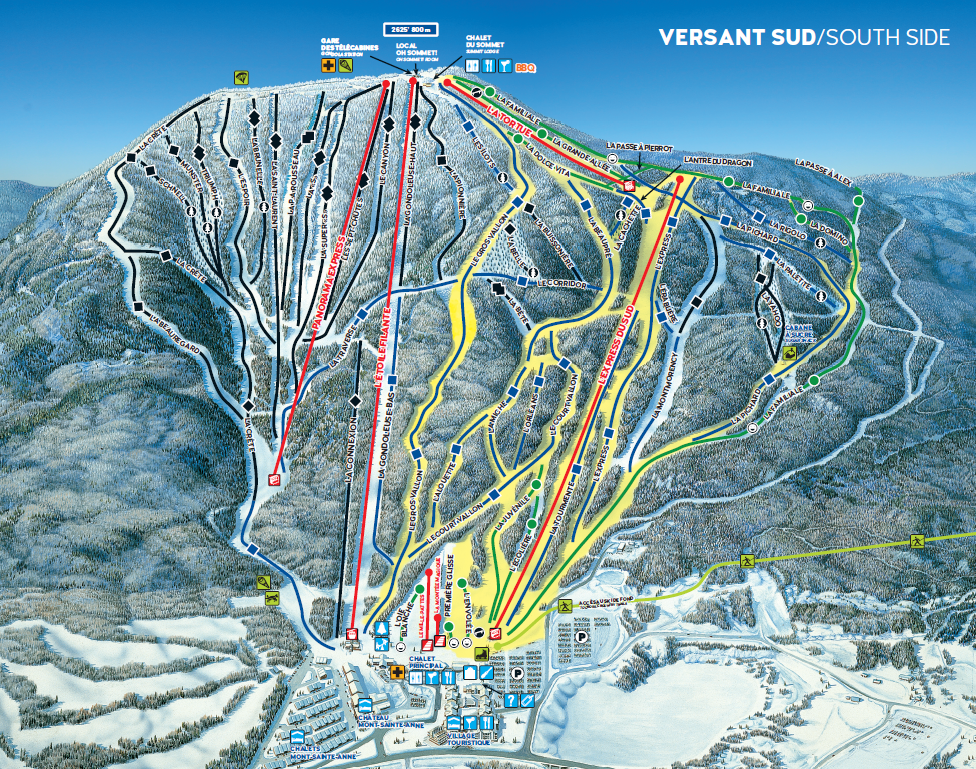
Intermediate Terrain
From the first glance at the trail map, it’s clear that Mont-Sainte-Anne is heavily catered toward intermediate skiers and riders. Aside from the expert-focused Panorama Express bowl, every terrain pod at the resort offers a wide range of blue trails, covering nearly every style of intermediate skiing. For those seeking fast, lower-angle groomers with wide cuts, the north-facing backside trails are the best option. This zone also features two excellent blue-rated glade trails with sustained vertical drops and some of the best snow preservation on the mountain.
Intermediates looking to progress from the north side will find the frontside blue trails particularly appealing, with these runs offering steeper pitches than those on the north side and often incorporating ungroomed sections that would earn a black diamond rating at many other resorts. And on busier days when the Corde Raide T-bar is running, Mont-Sainte-Anne’s often-overlooked west side offers a handful of isolated blue trails that sit well away from the masses.
Advanced Terrain
While Mont-Sainte-Anne offers fewer single-black diamond trails compared to its broad selection of blues, there’s still plenty for advanced skiers and riders to enjoy across every terrain zone. Each major pod at the resort features at least one advanced-level trail, and none feel like an afterthought. On the backside, the Mélanie Turgeon trail offers a long, rolling groomed pitch that’s perfect for those looking to pick up speed.
Mont-Sainte-Anne caters most heavily towards intermediate skiers, but there are plenty of options to keep beginner and advanced skiers occupied.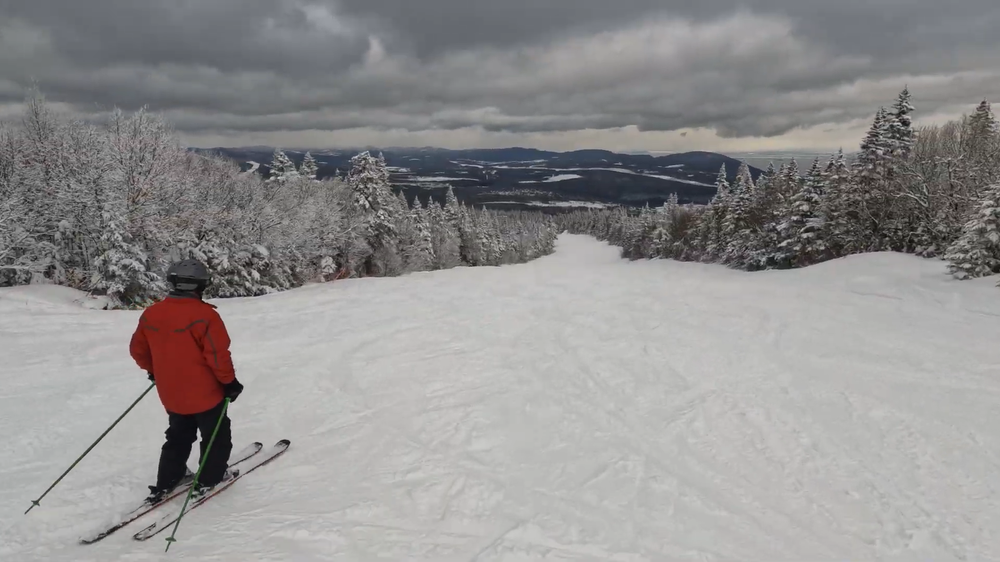
On the front side, advanced visitors will find the Panorama Express pod particularly appealing, with a variety of steep groomers, bump runs, and glades. However, caution is warranted in this zone—many trails carry a legitimate double black diamond rating, and even some single blacks can become treacherous in adverse conditions. Thanks to the sustained pitch throughout this pod, skiers can expect a serious leg-burner on the way down, provided they’re fit enough for the challenge.
Beyond the Panorama Express area, many of the frontside blue trails also feature steep, frequently ungroomed sections, offering additional opportunities for advanced skiers looking to mix things up.
Expert Terrain
While Mont-Sainte-Anne may not offer the most extreme terrain on the East Coast, its expert offerings are far from lacking. Nearly all of the resort’s double black diamond trails are concentrated off the Panorama Express, a steep, expansive bowl that serves as an expert’s playground. With a sustained pitch and natural separation from the rest of the mountain, this zone often stays uncrowded on most days.
Skiers and riders who enjoy the tight, technical glades the East Coast is famous for will find no shortage of terrain to explore here, with roughly 100 acres of steep woods feeding directly back to the Panorama Express. Trails like Le Canyon, La Rousseau, and La Saint-Laurent deliver the classic, narrow, and challenging New England double black experience experts seek out. For those looking for a true test, La Super S offers a precipitously steep, often icy groomed pitch that demands precision—and is really best reserved for those with sharp edges and strong nerves.
Mont-Sainte-Anne isn’t the most freestyle-oriented mountain out there, though it does feature one major terrain park with a range of features.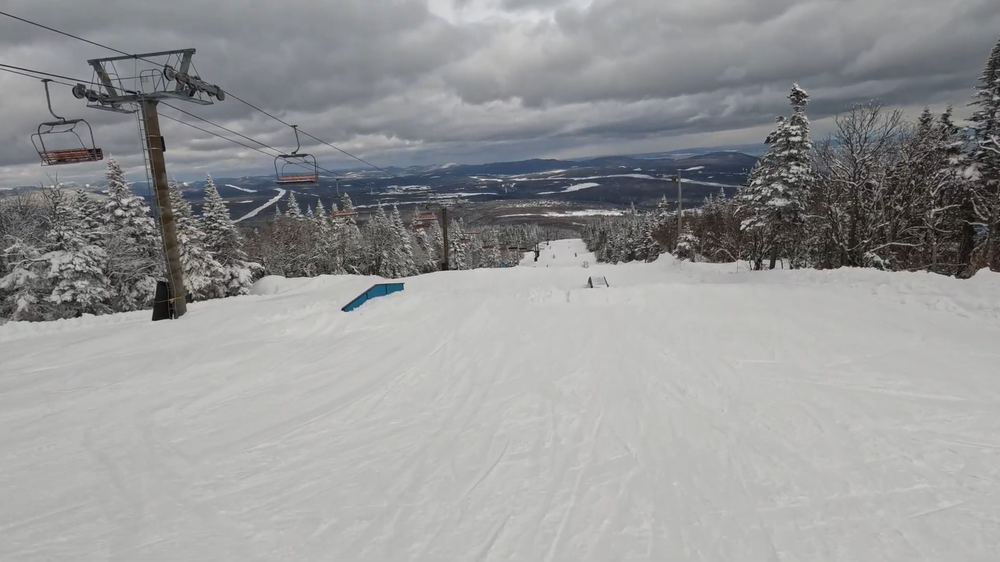
Terrain Parks
Mont-Sainte-Anne’s primary terrain park is located on the Grande-Allée trail, descending east from the summit. While it’s the resort’s only major park, it’s well-built, easily accessible via the gondola, and lappable from the (admittedly slow) La Tortue lift. The park typically features a range of small to medium-sized features, making it approachable for a variety of ability levels, though it’s not quite up to the caliber of the largest parks elsewhere in the East. Its high-elevation location helps preserve snow quality, though its eastern aspect can occasionally expose it to sun and variable conditions. Additionally, a beginner park is often set up near the base area, offering an accessible option for newer park riders.
Snow and Resiliency
Mont-Sainte-Anne averages 169 inches of snowfall annually—a healthy total that’s competitive with many East Coast destinations, though slightly behind some resorts in northern Vermont. The resort’s far northern latitude helps it avoid many of the midwinter warm spells that impact stateside resorts; however, the south-facing frontside terrain can still see variable conditions even during the core season. Thanks to relatively modest crowds compared to U.S. resorts, snow preservation often outperforms expectations, particularly in the resort’s large network of gladed terrain.
The vast majority of trails are supported by snowmaking infrastructure, and when combined with the mountain’s colder climate than parts of the U.S., key trails typically remain well-covered throughout the heart of winter. That said, Mont-Sainte-Anne is not immune to the East Coast’s trademark thaw cycles, which can cause melt-outs—with the south-facing front side, which includes all of the true expert terrain, being the most susceptible. That said, even during low-snow periods, the more sheltered northern face tends to hold snow quite well.
Most of Mont-Sainte-Anne’s skiable footprint is served by a fleet of high-speed lifts, although they are generally on the older side.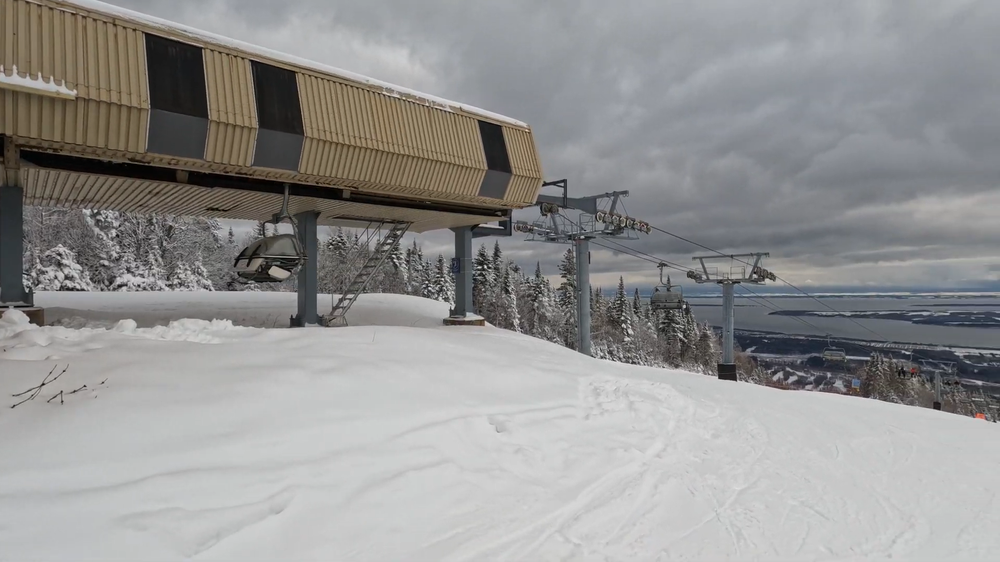
Lifts
Mont-Sainte-Anne’s lift setup is generally a strong suit, although some lifts are starting to show their age. All major terrain zones at Mont-Sainte-Anne are served by a fleet of modern high-speed lifts and a gondola, with the exception of the west side trails. For most visitors, lift placement is intuitive, allowing for quick laps within each terrain pod and maintaining a loose separation between different ability levels. However, skiers looking to lap the primary terrain park on Grande Allée may find the main lift serving this zone—La Tortue—to be notably slow, with the only alternative being a long runout back to the gondola at the base.
Crowd Flow
Like most Quebec resorts, Mont-Sainte-Anne rarely experiences the large crowds typical of major U.S. destination resorts, although the busiest holidays and weekends can bring some lines at popular lifts—particularly the gondola. When it comes to crowds on the ski trails, a few choke points do exist near the frontside base, where skier traffic tends to merge onto the La Familiale and Le Court Vallon runs. That said, for most visitors, especially those skiing midweek, long lift lines and trail congestion are not much of a concern.
RECOMMENDED SKIS FOR MONT-SAINTE-ANNE
NOTE: We may receive a small affiliate commission if you click on the below links. All products listed below are unisex.
Recommended intermediate ski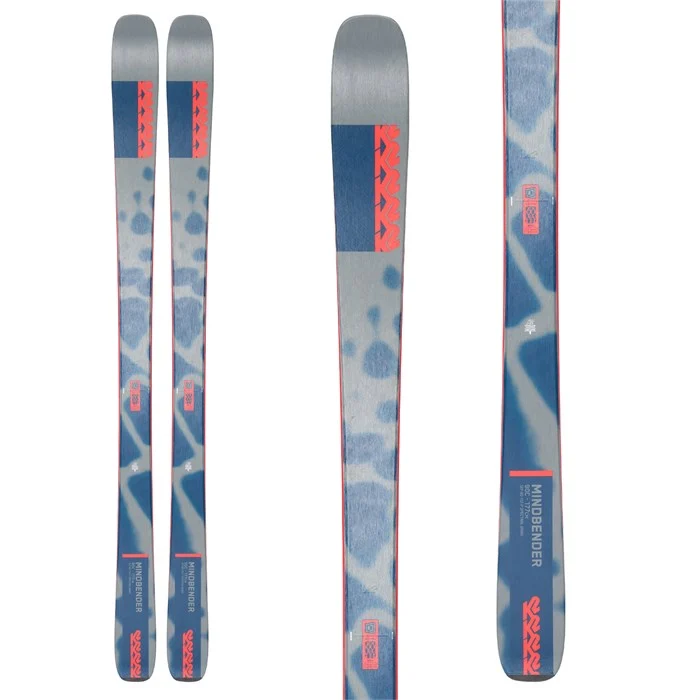
Recommended advanced ski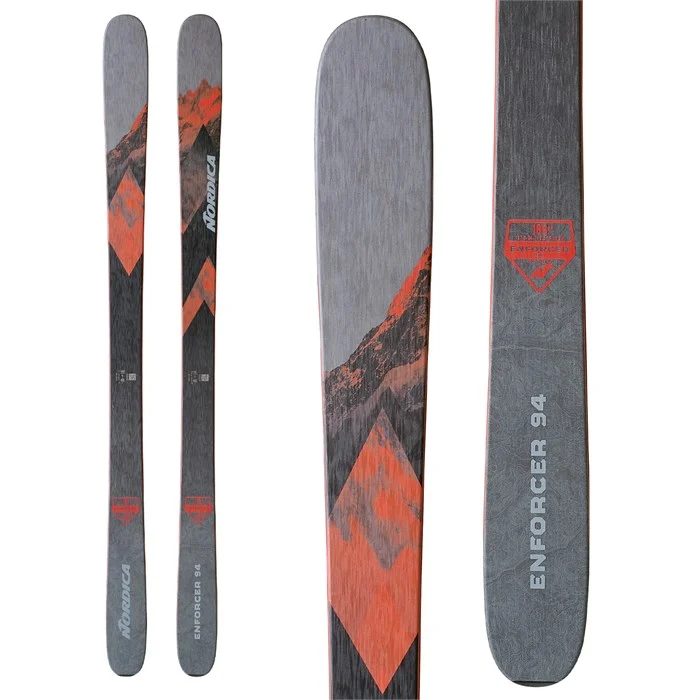
Recommended glade ski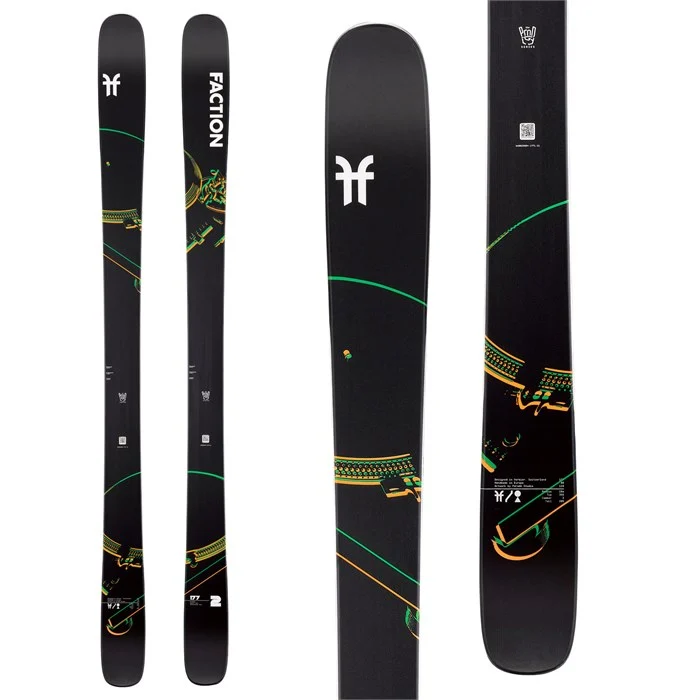
Recommended powder ski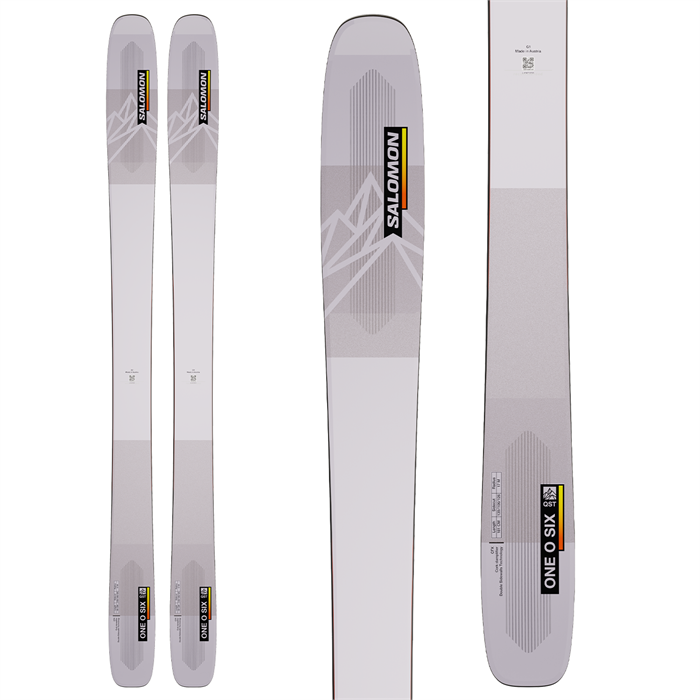
On-Mountain Facilities
Mont-Sainte-Anne offers a handful of well-placed, well-maintained facilities spread across the mountain. Base lodges exist at both the main southern base and the more isolated northern base, and an on-mountain lodge sits just below the summit at the top of the La Tortue lift. Each lodge provides food and restroom access, ensuring visitors are never more than a lift ride away from a place to rest or grab a bite, regardless of which terrain zone they’re lapping. Food quality is about average for a Quebec resort—generally a step above what’s typical stateside, though not a standout—although thanks to favorable exchange rates, prices tend to come in slightly cheaper than at comparable resorts in the United States.
Navigation
When it comes to getting around Mont-Sainte-Anne, the resort features abundant, well-placed signage across the mountain. However, the resort’s highly three-dimensional footprint—particularly around the crowded summit area with its frequent double fall lines—can sometimes make navigation challenging. Guests aiming to access the north or west sides from the summit should study the trail map carefully and follow signage closely, as it’s surprisingly easy to accidentally drop into the expert-only Panorama zone.
Visitors at Mont-Sainte-Anne are never more than a lift ride away from one of the resort’s three lodges.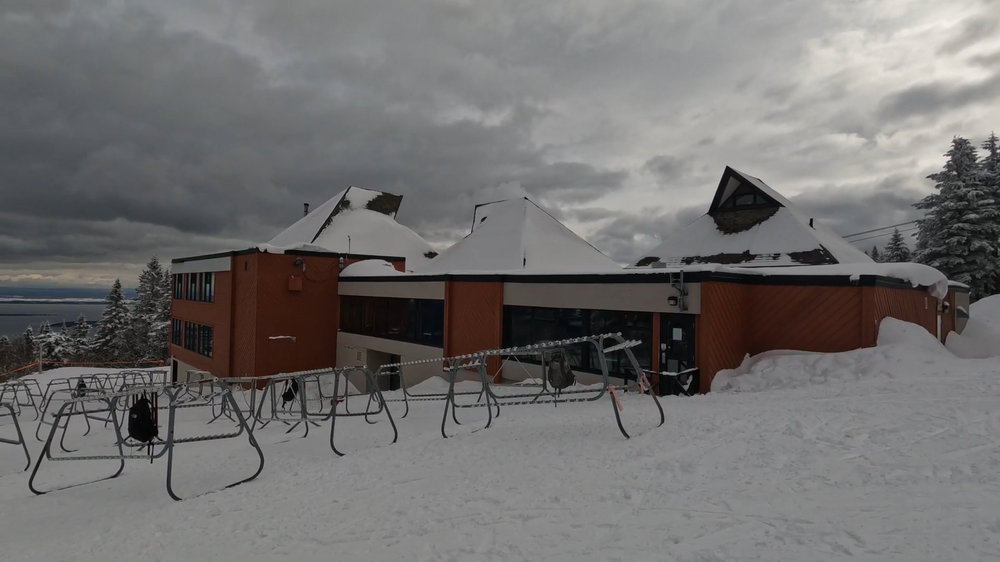
Mountain Aesthetic
While the area around Mont-Sainte-Anne’s southern base feels somewhat developed and commercialized, most other terrain zones—particularly on the north side—offer a more isolated, even remote atmosphere. The Enchanted Forest trail, complete with hidden wind chimes strung through the trees, creates a distinctive skiing experience unlike nearly anything else out East. And on clear days, east-facing trails also offer stunning views of the legendary Saint Lawrence River just a few miles away.
Night Skiing
It’s also worth noting that Mont-Sainte-Anne offers one of the most extensive night skiing experiences in the East, featuring 19 illuminated trails and the highest vertical drop for night skiing in Canada at 625 meters (2,050 feet). Night skiing typically operates from 4pm to 9pm on Thursdays through Saturdays during the regular season, with expanded schedules during peak periods such as the Christmas holidays and March spring break. The resort’s night footprint only extends to its beginner and intermediate trails, but it’s still quite a bit more competitive than similarly-sized resorts elsewhere in Quebec, Vermont, and Maine, which typically offer no night skiing at all.
East-facing trails at Mont-Sainte-Anne feature stunning views of the Saint Lawrence River.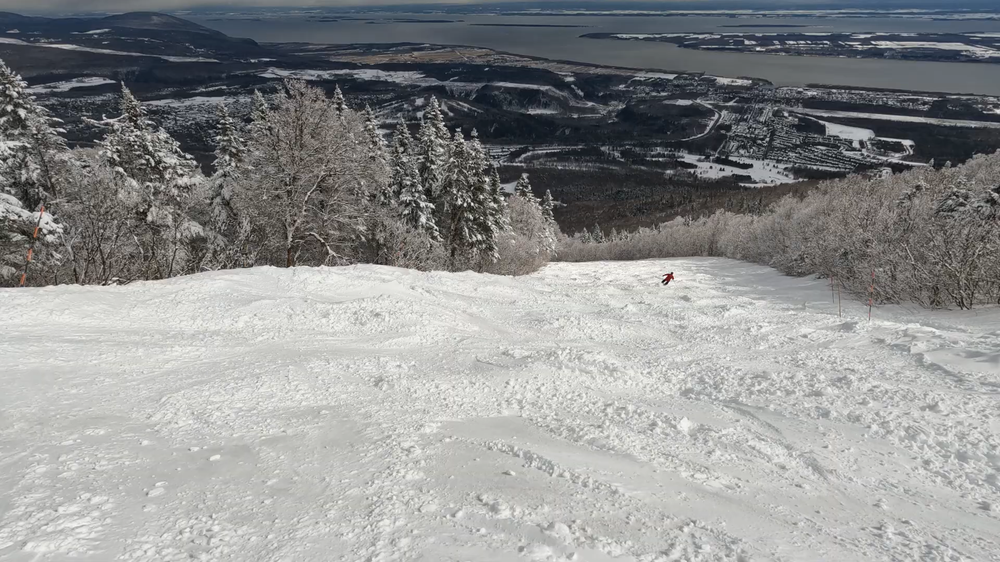
Getting There and Parking
With its far northern location, Mont-Sainte-Anne is north of every other East Coast destination resort, save for nearby Le Massif de Charlevoix. Because of this, the resort can be a challenging drive for visitors coming from major U.S. metropolitan areas, and even for those in Montreal. However, the mountain is easily accessible from Quebec City, sitting just a 45-minute drive up a major highway from there. For those flying in, it’s possible to get from Quebec City’s airport to the resort base in under an hour. Once on-site, visitors will find a massive, free parking lot that easily accommodates typical skier traffic.
RECOMMENDED SNOWBOARDS FOR MONT-SAINTE-ANNE
NOTE: We may receive a small affiliate commission if you click on the below links. All products listed below are unisex.
Recommended intermediate board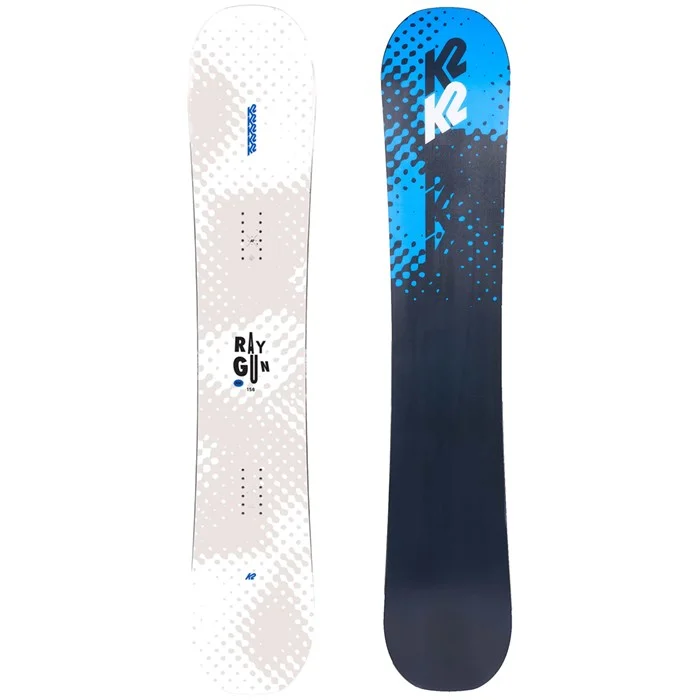
Recommended advanced board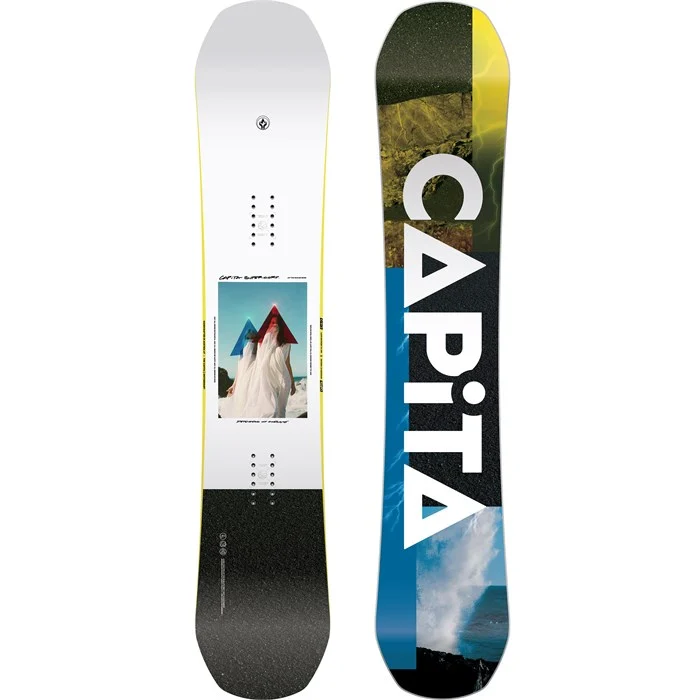
Recommended expert board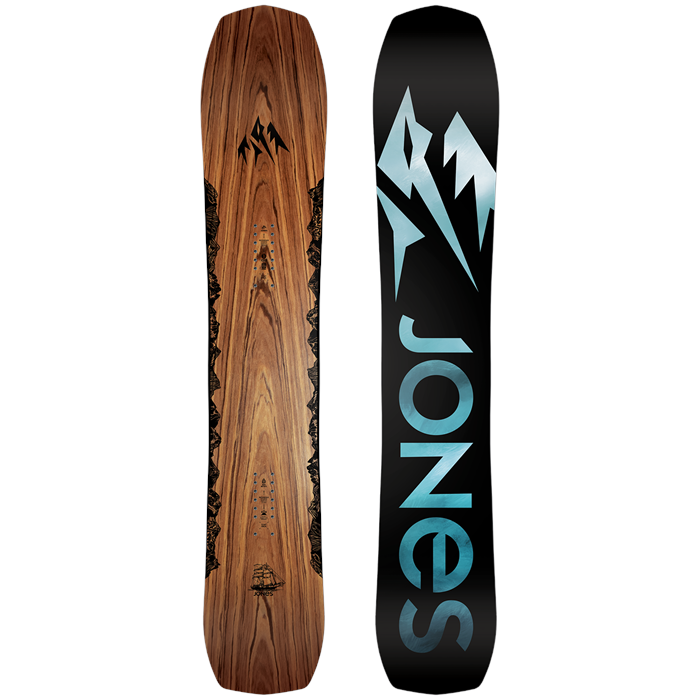
Recommended powder board
Lodging and Après-Ski
Mont-Sainte-Anne features a small but modern ski village at its base, with plenty of lodging options right on the mountain. Village accommodations lean upscale, though even the more luxurious options tend to be noticeably more affordable than comparable experiences stateside. Visitors on a tighter budget will find more affordable options just down the road in the town of Sainte-Anne-de-Beaupré, where a range of motels, hotels, and condos cater to all types of travelers—along with a solid selection of cafes and restaurants. For those accustomed to the steep prices near major Rocky Mountain resorts, the often sub-triple-digit lodging costs in Sainte-Anne can be reason enough to consider a trip to the region.
For après-ski, a base area bar and a handful of family-oriented dining options are available in the village. Additional food and activity choices can be found a short drive away in Sainte-Anne-de-Beaupré. However, those seeking true nightlife will want to drive 40 minutes back into Quebec City proper.
Mont-Sainte-Anne’s village is small but modern, though accommodations are generally quite affordable compared to many resorts out west.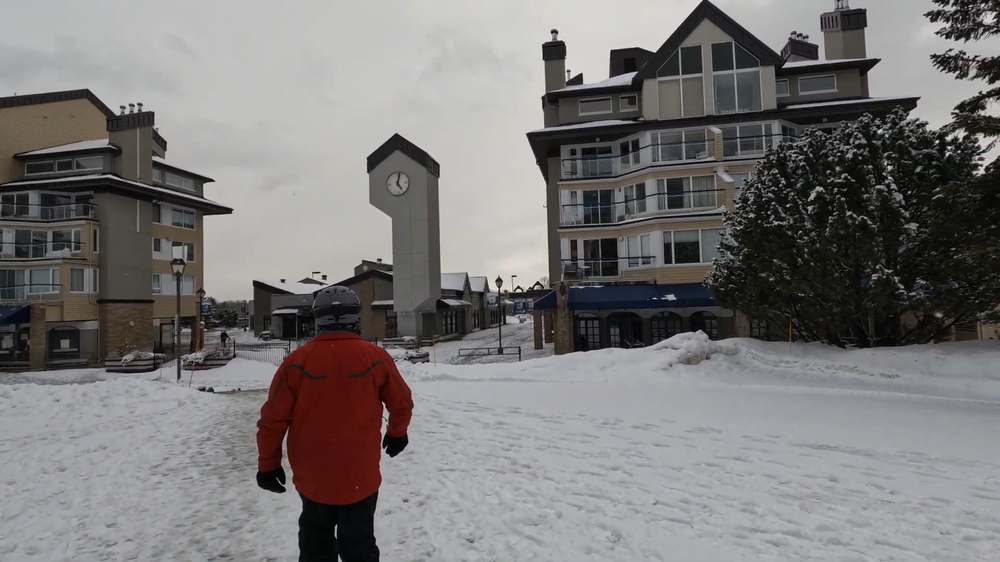
Verdict
While its exceptionally northern location will dissuade many from visiting, Mont-Sainte-Anne’s broad diversity and high-quality terrain make it a standout option versus other East Coast ski resorts. It offers some of the best value for money in the region and qualifies as a true destination resort by most metrics. Beginners and intermediates will find Mont-Sainte-Anne to be a top-tier Eastern mountain, while advanced and expert skiers should have little trouble staying engaged for multiple days on the mountain.
Pricing
For the 2024-2025 season, adult day tickets at Mont-Sainte-Anne are priced at $135 CAD, with advance purchase and shoulder-season rates dropping as low as $101 CAD—an excellent value for visitors coming from the United States. Budget-conscious skiers can also take advantage of steeply discounted half-day and night skiing options, with adult night tickets regularly available for as low as $43 CAD. For a destination resort, it’s one of the best single-day values in North America. Full Epic Pass holders also receive up to seven days of access at Mont-Sainte-Anne, although these days are shared across Stoneham, Kicking Horse, Fernie, and Kimberley.
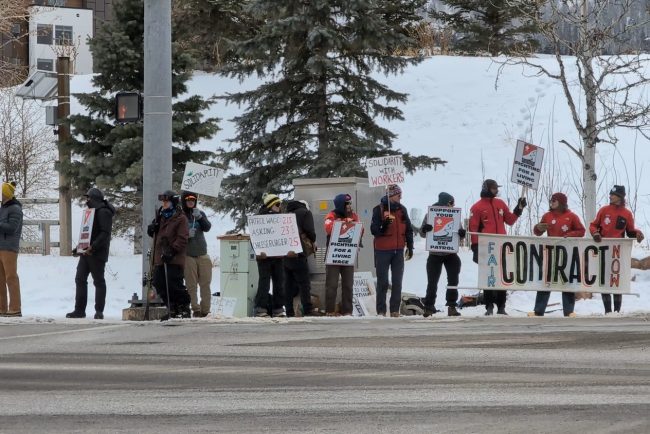
Was the 2024–25 Season a Turning Point for North American Skiing?
This winter in the ski industry felt unlike anything we’ve seen in years—and there’s good reason for that. From operational controversies, to on-mountain accidents, to weather instability, the 2024-25 season was packed with drama, danger, and a few unexpected developments. So what do we […]
Mountain
This winter in the ski industry felt unlike anything we’ve seen in years—and there’s good reason for that. From operational controversies, to on-mountain accidents, to weather instability, the 2024-25 season was packed with drama, danger, and a few unexpected developments.
So what do we make of all this, and what do these developments mean for the future of the ski industry? In this piece, we’ll dive deep into the most notable things that happened across the North American ski world this winter—and why they matter as you plan next year’s ski trips. Let’s jump right into it.
Striking ski patrollers at Park City, UT this past December. The labor dispute reached a resolution after 12 days following a busy holiday period.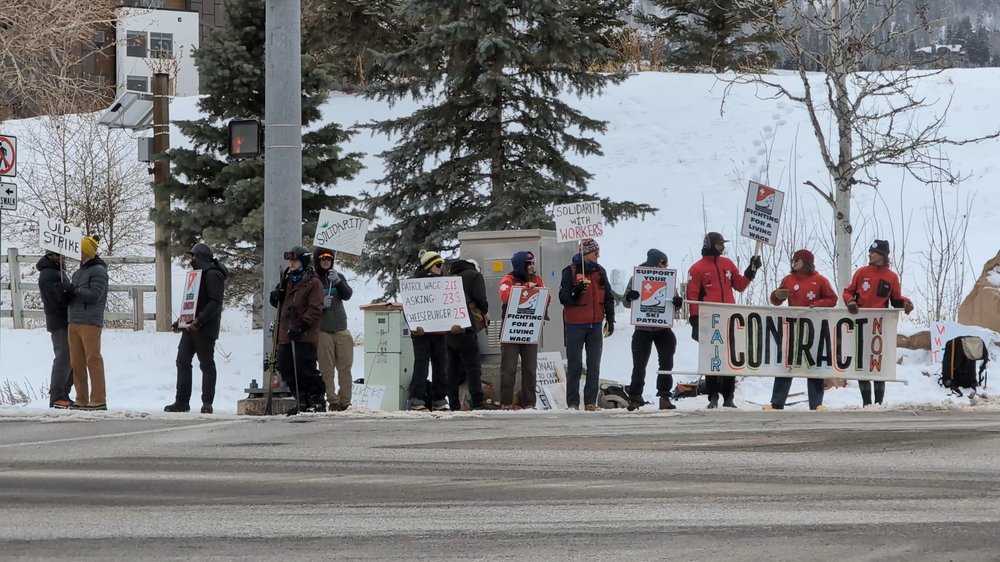
Part 1: Labor Unrest
Let’s start with what may have been the most disruptive storyline of the year: ski industry workers pushing back against corporate power. At Park City Mountain in Utah, the ski patrol union made headlines by launching a full-scale strike over contract negotiations. The patrollers, who are employed by Vail Resorts, had been pushing for higher wages, better working conditions, and stronger safety measures. After months of stalled negotiations, they walked off the job on December 27, creating a huge headache for the resort just as peak season was getting underway.
Vail Resorts then responded by flying in patrollers from other resorts they owned around the country, hoping to effectively replace the team on strike; however, the resort still found itself unable to get huge swaths of terrain open, with the overcrowded areas that did actually open facing unconscionable lift lines. This was the first ski patrol strike of its kind in more than 50 years, and it reignited national conversations about labor conditions in the ski industry. The strike reached a resolution after 12 days, but not until the patrollers had walked off the scene for the vast majority of the December holiday period, upending thousands of people’s vacations. Vail Resorts is now facing a class-action lawsuit from some of these visitors, who claim the company intentionally failed to warn them about the strike and its potential impacts.
Park City wasn’t the only Vail-owned resort where worker concerns boiled over. In the wake of what happened with the ski patrol there, patrol unions at Keystone and Crested Butte also voiced public frustrations—though both mountains eventually reached agreements with Vail Resorts. Notably, Keystone ski patrollers had only voted to unionize for the first time in spring 2024, making this the first time a bargaining agreement was ever negotiated with Vail.
Several new ski resorts, including Arapahoe Basin (pictured) voted to unionize within the past year.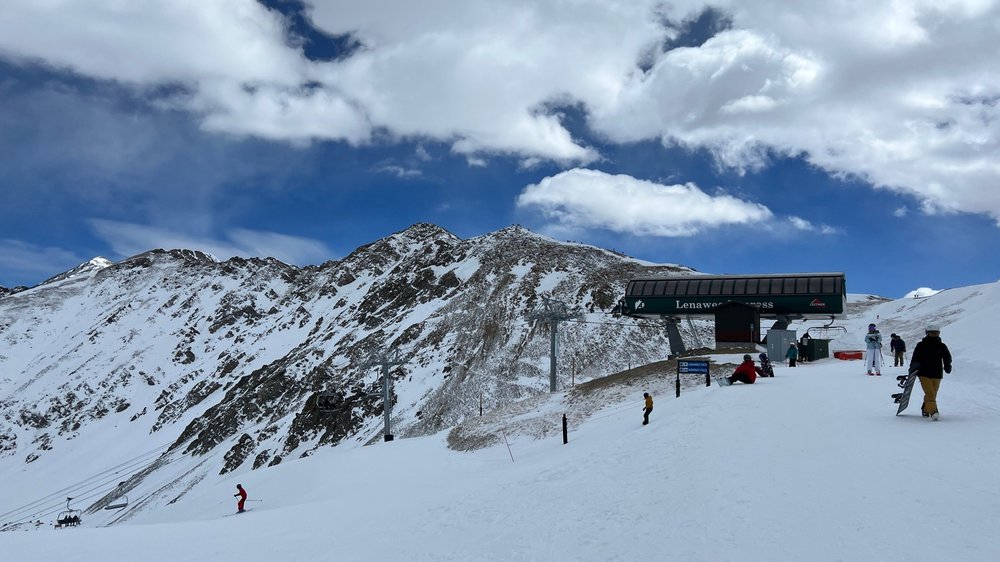
That being said, it’s worth noting that this year’s unionization developments were not exclusive to Vail-owned mountains. Solitude and Arapahoe Basin, both of which are now owned by Alterra, voted to unionize within the past year, although neither has at least publicly reached a contract. Other resorts out west such as Whitefish and Eldora have taken similar steps as well. Patrollers from these mountains raised similar concerns to that of Park City’s patrollers, citing stagnant wages and lack of career progression in the move to unionize.
Besides the ski patrol strike, the highest-profile labor-related event arguably took place at Breckenridge, another Vail-owned mountain. Employees took to social media to expose unsafe and substandard conditions in company-provided housing. Reports described units without functioning heat during sub-zero cold snaps, no hot water for extended periods, and pipe bursts in at least three buildings. Some employees said their apartments were effectively unlivable—a disturbing reality in one of the country’s most visited ski towns. Winter sports goers and industry observers criticized the company for prioritizing profit over the well-being of its workers, especially in light of the ski patrol strike only weeks earlier. Both of these issues became flashpoints in the larger debate about the future of labor in the ski world, where the tension between corporate growth and worker welfare is more visible than ever.
A chair on Heavenly’s Comet Express lift slid backward into another chair following a grip failure on December 23, 2024, sending five people to the hospital. Source: xamfed | Reddit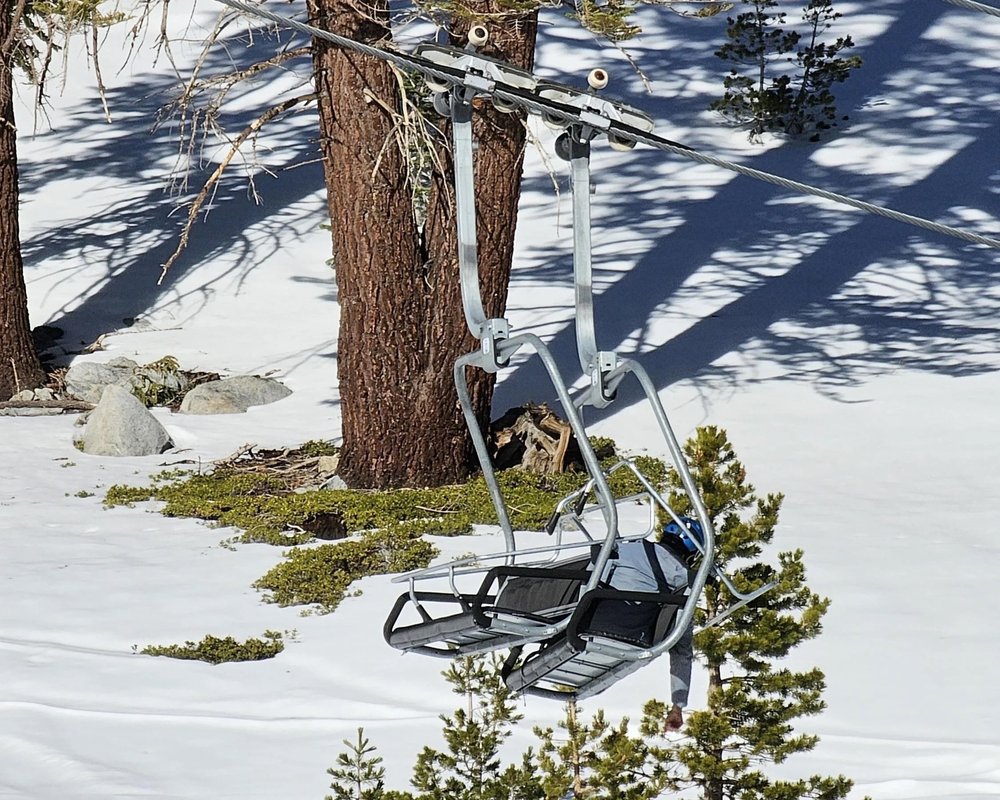
Part 2: Ski Lift Accidents
Unfortunately, it wasn’t just labor issues that rocked the industry. This season also saw a disturbing number of lift-related incidents, sparking new concerns about safety and deferred maintenance. While chairlift malfunctions are rare, there were several high-profile failures that raised eyebrows.
At least four serious incidents caused casualties this winter. At first, the focus was on Vail Resorts, with the first two out of these four accidents occurring at the resorts they owned. At Heavenly, a chair on the Comet Express slipped backwards and collided with another, causing five guests to fall nearly 30 feet and leading to multiple hospitalizations. In New Hampshire, a chair on Attitash’s Flying Bear lift detached and fell to the ground, injuring a skier who was riding the lift and prompting a state investigation. The lift was permitted to re-open more than a month later, but only after several chairs that had been found to have faulty grips were removed from the line.
On February 10, 2025, a gondola cabin detached from the cable at Kicking Horse after a hanger arm failure. Source: Brandon Shaw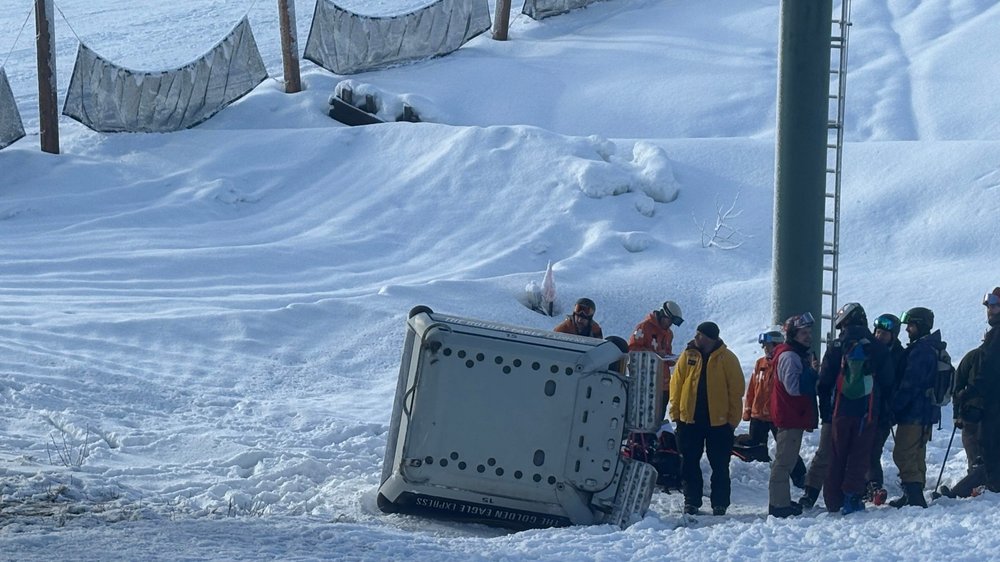
But by March, it became clear that these issues were not exclusive to Vail-owned mountains. At British Columbia’s Kicking Horse, a gondola cabin on the Golden Eagle Express separated from its cable shortly after loading, forcing a dramatic rope and helicopter evacuation. And in one of the most tragic incidents of the season, a strong wind gust at Red Lodge Mountain in Montana caused the Triple Chair to derope, ejecting a rider who later died from his injuries. Looked at together, these incidents marked a dramatic increase in serious lift incidents versus previous years.
While it’s important to note that lift riding remains incredibly safe overall, several concerns have rightly been raised about whether resorts have been focusing too much on cost cutting—to the point of deprioritizing safety investments—in a time of operational strain and climate uncertainty. Notably, every resort that had a serious accident was either in a region that had a below-average season the winter prior to this one, or was owned by a company that was heavily exposed in a region with a below-average season.
Ski resorts such as Mammoth (pictured) saw snow patterns that caused significant snowpack instability in February and March this year.
Part 3: Volatile, High-Avalanche-Risk Weather Patterns
Speaking of climate uncertainty, this middle of this winter also brought one of the most alarming avalanche cycles in recent memory. The situation began with a historically low snowpack across much of North America through December and early January. Many resorts, especially in the Rockies and Sierra Nevada, were struggling with bare terrain and unseasonably warm temperatures. Then, seemingly all at once, the storms arrived—and they arrived hard, affecting some of the most prominent ski resorts on the continent.
One of the most tragic incidents occurred at Mammoth Mountain, California. On February 14, two ski patrollers were caught in an avalanche during routine mitigation work. While the area was closed to the public at the time, one of the patrollers, Claire Murphy, suffered critical injuries and later passed away on February 22. Within the two-week period of that tragic incident, in-bounds avalanches also occurred at Snowbird, Big Sky, and Palisades Tahoe, underscoring just how unstable the snowpack was across a large portion of the Western United States.
Another volatile snow cycle resulted in avalanches at Mammoth and Palisades Tahoe again in late March, with the Palisades Tahoe incident causing injuries to a ski patroller on duty. While in-bounds avalanches are still exceedingly rare, the array of high-profile incidents this winter was a sobering reminder that even in-bounds terrain can carry serious risk, especially if a massive storm system follows a long period of no new snow.
Several Southwestern ski resorts, including Lee Canyon (pictured), had decidedly difficult starts to the 2024-25 ski season.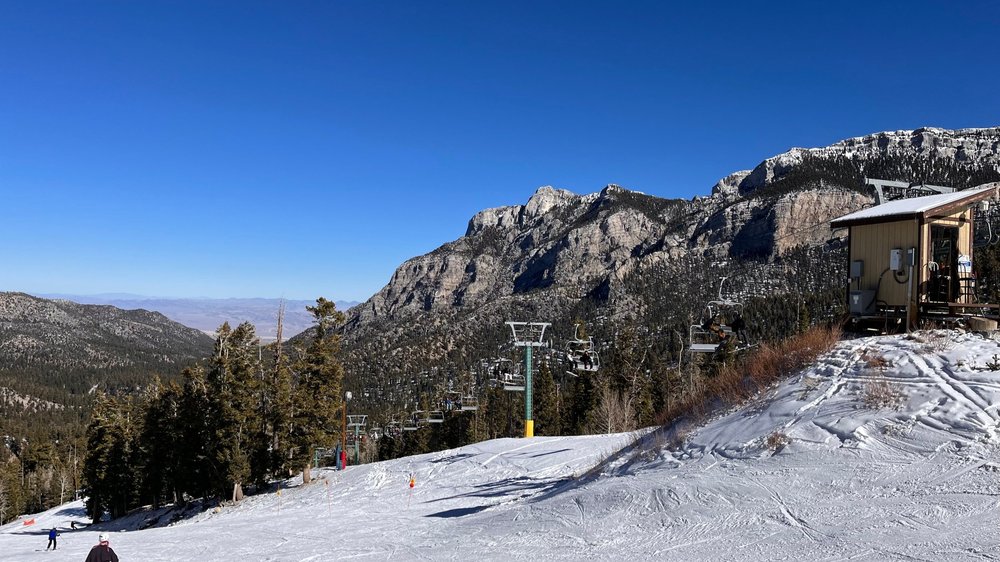
Part 4: Southwest Drought Conditions (Until March)
While many resorts were battling too much snow, others were struggling with the exact opposite problem. Across the Southwest—from New Mexico to Southern California—ski areas experienced one of their most challenging seasons in recent memory. In New Mexico, Taos Ski Valley reported less than 100 inches of snowfall—significantly below its seasonal average of around 200 inches—resulting in the worst season since 2018. Despite a few late-season storms, the resort relied heavily on snowmaking and faced inconsistent conditions throughout the winter. Several resorts near Los Angeles faced similar issues as well, missing out on storm cycles that hit resorts further north in California.
Arizona Snowbowl in Flagstaff had an especially slow start to the season, recording just 2 inches by early January. Thankfully, a series of March storms brought the resort over 100 inches of snow by season’s end—and allowed the resort to extend its season well into the spring. However, many visitors during the core season—including some on our team—were greeted with white-ribbon snow conditions and only a small handful of trails open.
For many resorts in the Southwest, 2024-25 was a reminder of just how precarious skiing can be in marginal climates. Warm spells, inconsistent storms, and climate variability continue to threaten operations in areas that can’t rely on deep base depths or consistently cold temperatures.
Southwest Colorado’s Purgatory ski resort implemented a wave of budget cuts that culminated in a high-profile ski lift accident on March 9.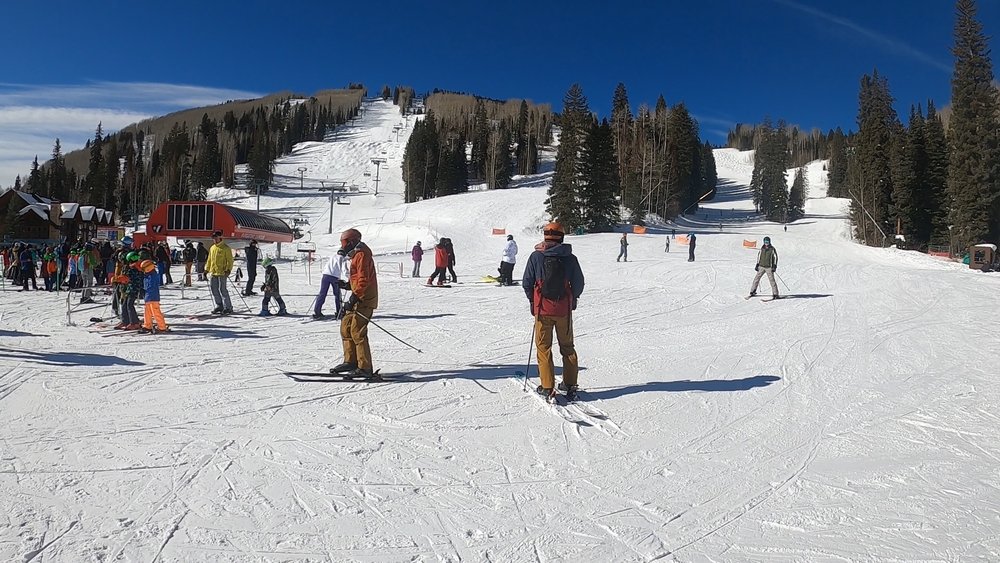
The terrible season had impacts on operations as well. Southwest Colorado’s Purgatory resort, which is owned by Mountain Capital Partners, a ski resort company that is heavily leveraged in the Southwest, faced high-profile financial issues this March. The company abruptly implemented a wave of budget cuts across its portfolio, including staff layoffs, curtailed lift operations, and scaled-back events. However, despite these issues popping up this year, Purgatory announced a new lift and small terrain expansion for the coming season, so it’s hard to place how the financial situation is really impacting MCP as a whole.
But regardless of Purgatory’s true financial state, the timing couldn’t have been worse. Just days after the staffing cuts were publicized, a 7-year-old boy fell from the Purgatory Express lift—and was later airlifted to Denver for treatment. The incident came at a moment when issues like overworked and undertrained staff, high-profile weather volatility, and lift safety were already top of mind. In many ways, it became a flashpoint that symbolized the perfect storm of challenges plaguing the ski industry this year—where financial stress, operational downsizing, and mounting incident numbers collided on the mountain.
One of Powder Mountain’s new homeowner-only checkpoints, which the resort has staffed with a team of “homeowner patrollers” to make sure that the public can’t sneak in.
Part 5: Private Club Business Models
Have the more variable winters been convincing certain ski industry stakeholders to switch up their business models? Quite possibly. Another significant trend this season has been the shift of some independently-owned ski resorts toward a private club model, aiming to offer exclusive experiences to a wealthier clientele. Utah’s Powder Mountain, under the new ownership of Netflix co-founder Reed Hastings, announced a transition to a semi-private model starting in the 2024-25 season. This approach blends public access with private skiing areas tied to real estate ownership, with about a third of the resort’s previous lift-accessed terrain now reserved exclusively for homeowners and their guests. While the move has been paired with some significant public investments, it has sparked heated backlash from longtime skiers and riders, with critics calling it a betrayal of the resort’s community-focused roots and emblematic of a broader trend where skiing is becoming less accessible to the average person.
New York’s Windham Mountain Club remains open to the public, but it has introduced a private membership with a $200,000+ initiation fee—and the resort is leaving the Ikon Pass after the 2024-25 season.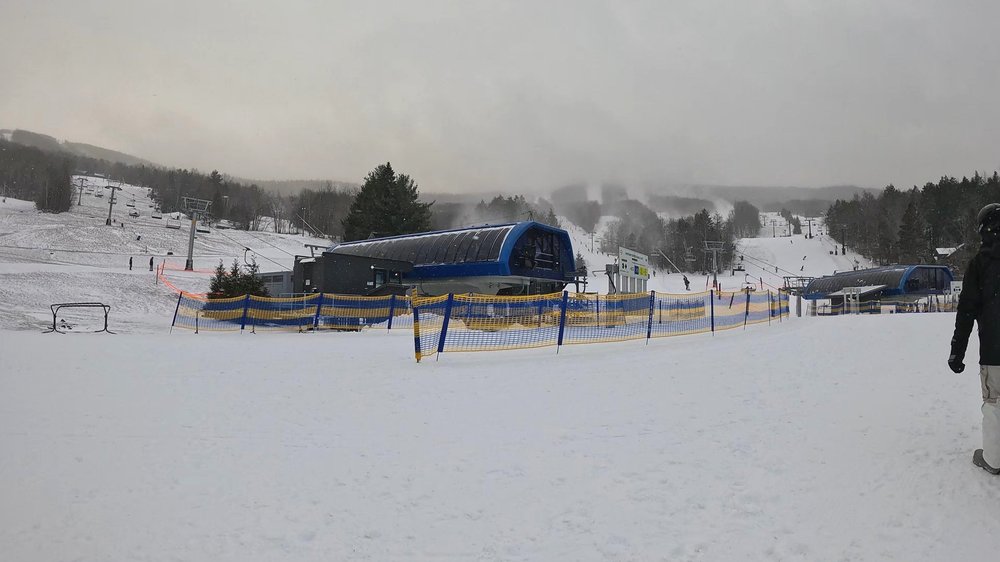
Similarly, New York’s Windham Mountain Club has been repositioning itself as a high-end destination by limiting ticket and pass sales, raising prices, and investing in upscale amenities. The resort also introduced a private membership with an initiation fee of over $200,000, which gives access to an on-site spa, a snowcat that goes up to the mid-mountain restaurant, and other perks that are designed to cater to the exclusive few who buy in. While it hasn’t closed any of its terrain to willing ticket buyers, Windham has announced it will leave the Ikon Pass after the 2024-25 season—becoming the first resort in the pass’s history to exit the partnership. This move follows several questions on whether the Ikon Pass has reached a tipping point, especially as crowding, blackout dates, and resort commoditization become more visible issues. Windham’s decision signals a growing interest among some resorts in reclaiming control over the guest experience, even if it means losing out on volume-driven passholder revenue. We’ll be keeping an eye out over the next few years to see if any other resorts drop off Ikon and its main competitor, Epic, and it remains to be seen whether Windham’s strategy is an anomaly or the canary in a coal mine.
California’s Homewood ski resort tried moving to a semi-private model, but pushback and dropped financial support resulted in the mountain having to fully suspend operations for the 2024-25 ski season.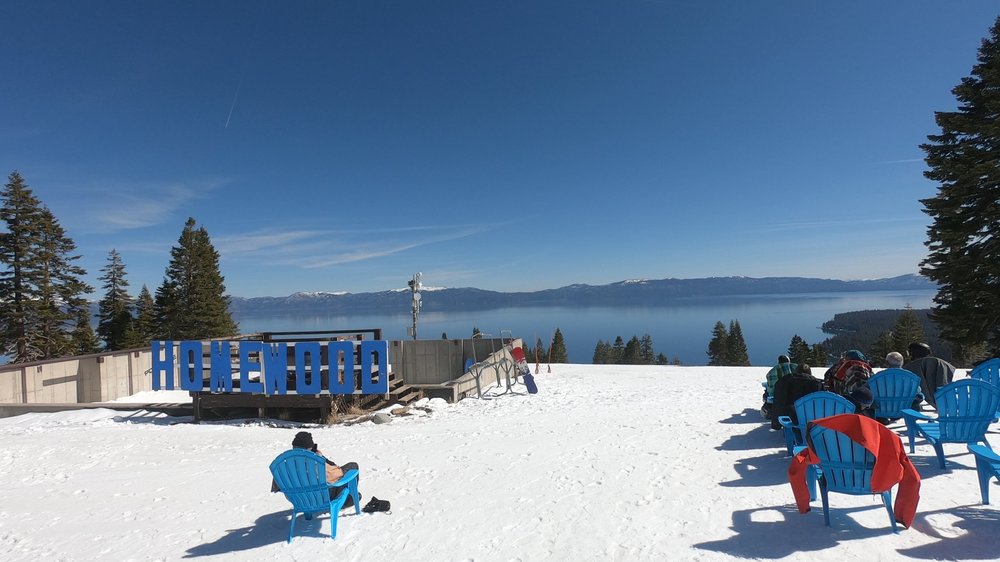
It’s also worth briefly touching on another mountain that tried moving to a semi-private model but ended up not opening up at all: Homewood. This Lake Tahoe-adjacent resort tried installing a new gondola this past summer and floated plans to go private back in 2022, but the resort ended up having to abandon both plans—as well as their ability to open up at all—after an unnamed financial partner pulled their support. According to the resort, the investor’s withdrawal was tied to concerns over permitting timelines—delays that were ironically compounded by public backlash and speculation surrounding Homewood’s potential privatization. As of spring 2025, the resort now plans to reopen next season and remain public for the foreseeable future. But for now, it appears the long-promised gondola still won’t be making its way up the mountain.
Vermont’s Killington and Pico became two of the first ski resorts in years to shift from corporate ownership back to independent hands.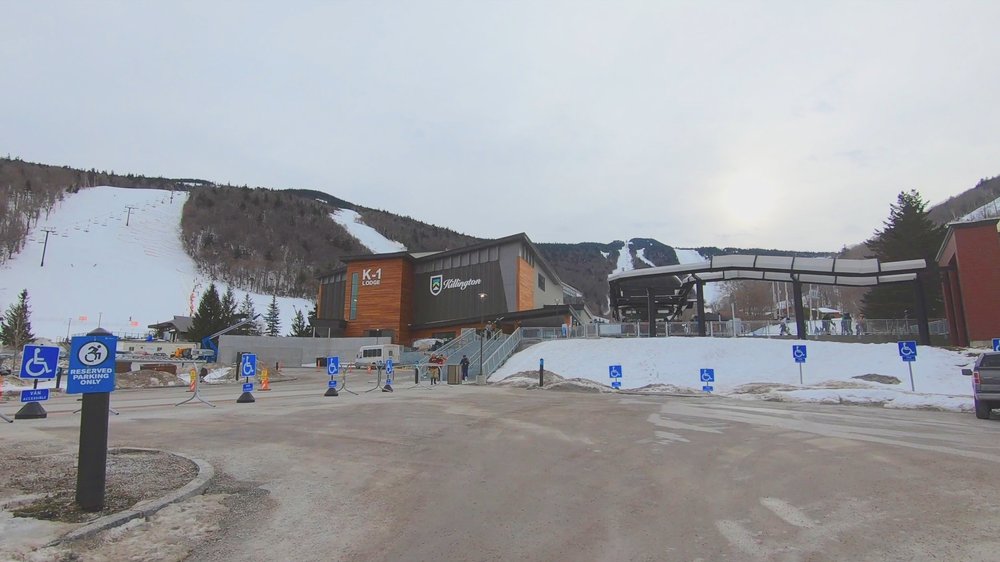
Part 6: A Return of Local Stewardship?
Despite the developments at Powder Mountain and Windham, not every shift in the independent ownership space has been about exclusivity. For the first time in years, we’re seeing one of the major ski corporations—Powdr Corp—start to back away from ski resort ownership. The ski resort mega corporation, which owned eight notable ski resorts across North America through 2024, made plans to sell five of them, including Killington, Pico, Eldora, Silver Star, and Mount Bachelor. At the end of last year, Powdr went through with the sale of Killington and Pico, although it’s worth noting that they have since gone back on their move to sell Mount Bachelor. The change marks the first time in years that a large ski conglomerate has actively offloaded ski resort assets—making for a change versus the relentless acquisition trend we’ve seen since the early 2010s.
Whether Powdr’s move is an isolated shift or the beginning of a larger trend remains to be seen. But it opens the door to a new era where corporate consolidation isn’t the only path forward—and where independent ownership doesn’t have to mean exclusivity.
After years in federal receivership, Vermont’s Burke Mountain has a new, locally-based owner.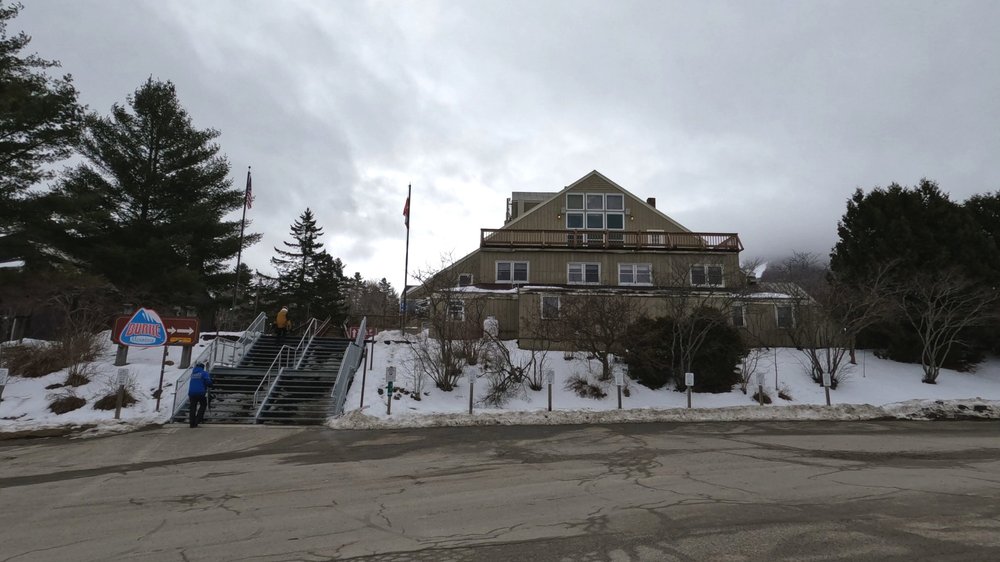
When it comes to resorts historically owned by smaller entities, we’re also seeing them stay in local hands. A similar story unfolded this year at Burke Mountain, also in Vermont, where ownership was transferred to a local group following years of instability tied to the EB-5 investment scandal. The new ownership model emphasizes local stewardship, skier access, and long-term sustainability over short-term profit. Together, these moves challenge the narrative that independent ownership always means privatization.
Another heartening example comes from New Hampshire’s Black Mountain, where a push to become a skier-owned cooperative—similar to the Mad River Glen model—has captured attention for all the right reasons. Faced with financial uncertainty, the resort launched a grassroots campaign this winter to preserve public access and community ownership—and ended up being temporarily purchased by the company that owns and issues the Indy Pass, with the goal of transitioning the resort to a co-op model by the upcoming 2025-26 season. The managing director of the Indy Pass, Erik Mogensen, stepped in as the GM of the resort through the end of this season. The results were promising: Mogensen personally paid parking tickets for visiting skiers, staff handed out free cookies in the lift lines, and the mountain committed to staying open deep into the spring—targeting a season end date of May 3—while nearby Wildcat, owned by Vail Resorts, is closing weeks earlier than usual despite being known for its strong East Coast spring skiing. The effort didn’t just win hearts; it tripled Black Mountain’s revenue compared to the previous season. It’s a compelling counterpoint to the trend of privatization—showing how creativity, transparency, and a commitment to community can reinvigorate a small ski area without sacrificing public access.
This past winter, Deer Valley installed three new lifts and added over 300 acres of new terrain as part of the first phase of its astronomical Expanded Excellence terrain expansion.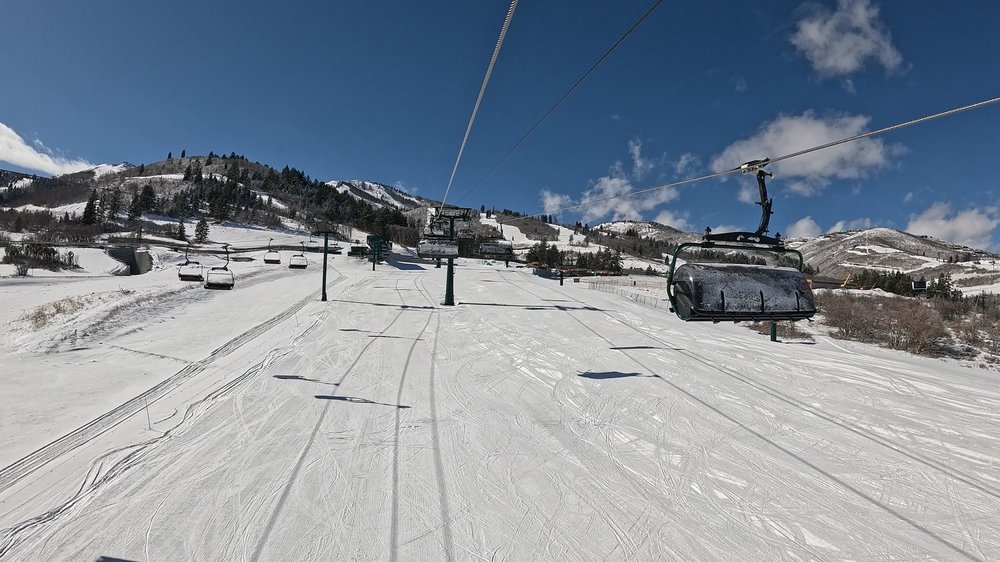
Part 7: Continued Capital Expenditures
But even when it came to the mega-resorts, the developments in the North American ski world this winter weren’t all chaotic. As in previous years, dozens of ski resorts continued to spearhead major capital investments. While some major corporations such as Vail Resorts notably pulled back on these projects versus previous years, other high-profile resorts, including Big Sky, Jackson Hole, Banff Sunshine, and Lake Louise, installed new lifts that fundamentally improved the resort experience. And at Sun Peaks, Powder Mountain, and Deer Valley, guests found themselves able to take advantage of substantial lift-served terrain expansions, with Deer Valley’s investment adding multiple lifts and dozens of new trails—and only being the first stage in a massive 3,700-acre expansion over the next few years.
But high-profile investments weren’t the only ones that made an impact—dozens of resorts funneled money into snowmaking systems, upgraded grooming fleets, new employee housing, glade and trail work, and RFID gate infrastructure—investments that may not always grab attention, but collectively made operations smoother and skier experiences more seamless.
It wasn’t just high-profile lift and terrain expansions—ski resorts continued to invest in behind-the-scenes projects such as snowmaking and grooming.
Final Thoughts
Taken as a whole, the 2024-2025 ski season was one of extremes. It featured some of the most significant labor actions in decades, real concerns about safety and infrastructure, a sobering period of avalanche activity, dramatic regional climate impacts, and continued questions about accessibility in the evolving ski economy. But it also showed signs of resilience—and even a few encouraging shifts toward a more balanced and community-focused industry.
As we head into the off-season, one thing is clear: the ski world is changing fast. And whether you’re a casual winter sports-goer, a regular passholder, or someone who just loves watching this industry unfold, it’s worth keeping a close eye on where things are headed next.
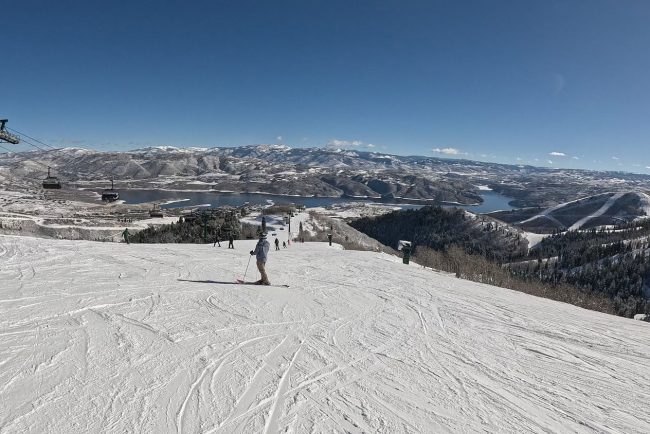
Deer Valley Expanded Excellence Phase 1: A Surprisingly Strong Start (With One Big Catch)
Phase 1 of Deer Valley’s Expanded Excellence brings 19 new trails across 316 skiable acres, with several overlooking the massive Jordanelle Reservoir. This year, Utah’s Deer Valley opened the first phase of one of the biggest multi-year ski resort expansion projects in recent […]
Mountain
Phase 1 of Deer Valley’s Expanded Excellence brings 19 new trails across 316 skiable acres, with several overlooking the massive Jordanelle Reservoir.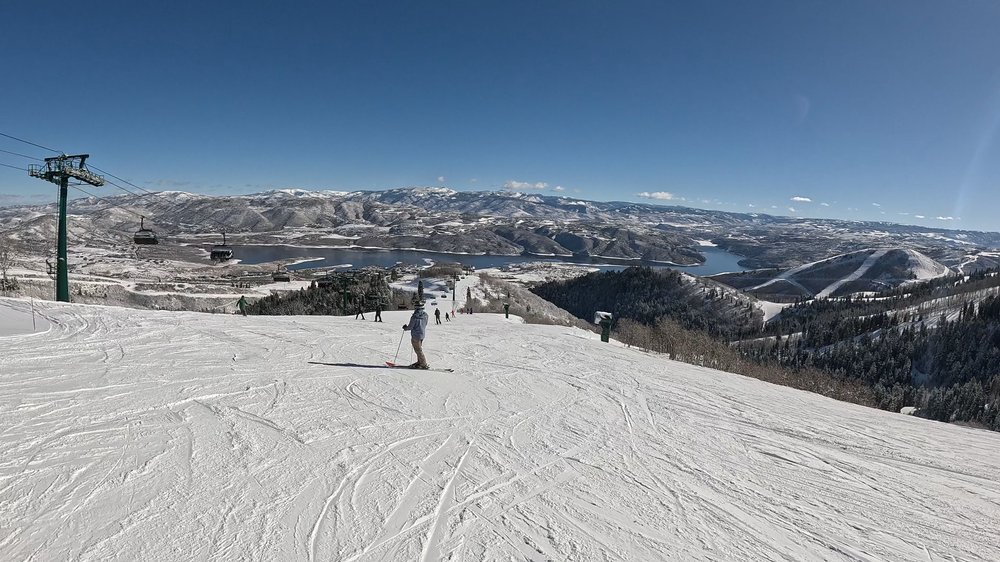
This year, Utah’s Deer Valley opened the first phase of one of the biggest multi-year ski resort expansion projects in recent memory.
The ski-only resort, which is one of just three left in North America to prohibit snowboarding, added three new lifts for this season. The new lifts include the Keetley Express high speed six-pack, the Hoodoo Express high-speed quad, and the Aurora fixed grip quad. All of these lifts reside at or near the new Deer Valley East base area, which is south of the current Jordanelle base on US-40. This base area will eventually offer an entire base village and the country’s largest “ski beach”, but for this year, the base added 500 parking spaces—which currently require a shuttle to get to and from—and a Grand Hyatt hotel.
The new Keetley Express lift is Deer Valley’s first high-speed six-pack and first-ever bubble lift, extending from Deer Valley East to the base of the Sultan Express. The neighboring Hoodoo Express directly serves the beginner slope at Deer Valley East, running parallel the first 15% of the Keetley Express lift line. The final lift, the Aurora Quad, allows skiers to get out of a drainage near the base area back to the main part of East Village.
Complementing these new lifts is 19 new trails and 316 acres of terrain. As of the 2024-25 season, all of the new trails are rated beginner or intermediate, although several blue trails were consistently left ungroomed this winter (advanced-level trails will follow in future expansion phases). Notably, while the majority of new trails sit in lower-elevation areas near the new base, a handful extend from the top of Bald Mountain, providing a continuously skiable vertical descent of over 3,000 feet at Deer Valley for the first time in the resort’s history.
While multiple additional new lifts and trails are expected to open as part of Phase 2 next winter, we decided to check out the Deer Valley experience as it existed this season. So how do the new investments stack up? Let’s take a look.
The new Deer Valley Expanded Excellence terrain for the 2024-25 season, with the three new lifts highlighted in red. The nearby terrain shaded in light green is expected to open for the 2025-26 season.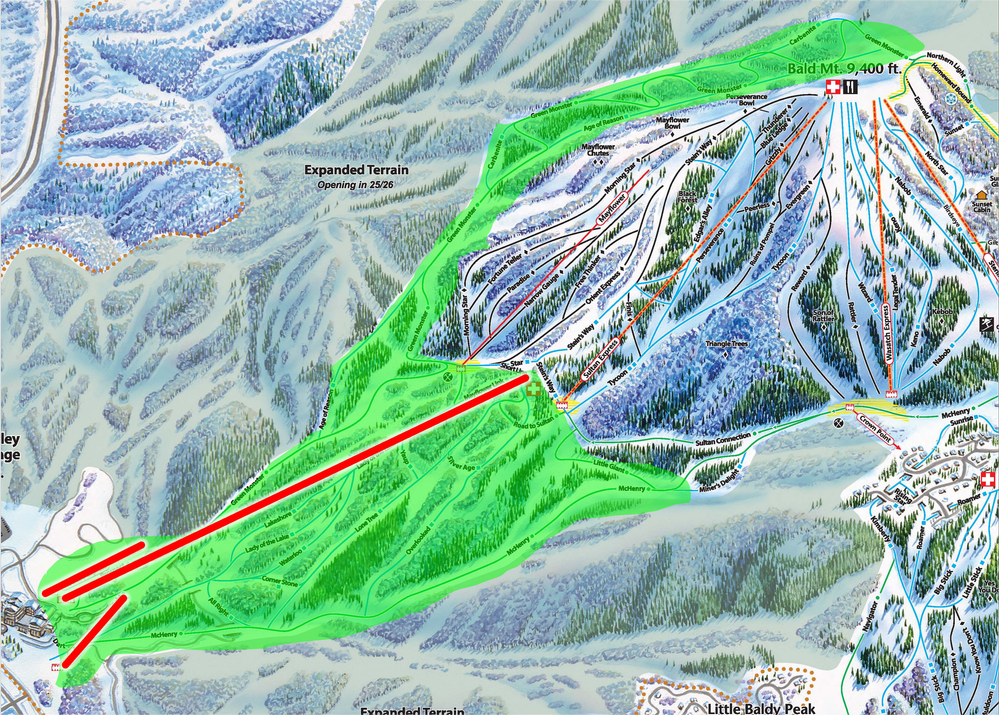
Our Take
While it was explicitly designed with real estate in mind, the first phase of Deer Valley’s Expanded Excellence brings some surprising benefits. The new terrain offers a beautiful natural aesthetic, providing a welcome contrast from the built-up, artificial vibe that plagues much of the rest of Deer Valley. Views of the Jordanelle Reservoir are incredible, and the new trails feel thoughtfully designed for the topography, with some being very lightly gladed. As of the 2024-25 season, the new terrain might be the most scenic anywhere at Deer Valley—so we’re crossing our fingers that it doesn’t get overwhelmed by luxury real estate in the future.
Thanks to this year’s terrain expansion, Deer Valley offers continuously skiable terrain of over 3,000 vertical feet for the first time ever.
While this year’s expansion won’t be the most exciting for thrill-seekers, the terrain itself is still a big win for the Deer Valley in a number of ways. Previously, the resort’s on-paper 3,000-foot vertical drop didn’t translate into long, continuous runs; the rolling mountains elsewhere at the resort broke things up, requiring mid-mountain lift rides to complete a full top-to-bottom descent. However, the new trails from the top of Bald Mountain to the bottom of East Village offer a full 3,050-foot vertical descent, creating some of the longest uninterrupted ski runs in all of Utah and finally making Deer Valley an enjoyably skiable mountain for those who prefer long runs. While everything in the new zone is rated for beginners and intermediates, several of the blue trails were consistently left ungroomed this winter, offering a bumpy, more advanced experience.
As for the lifts: the Keetley Express is the clear highlight. With its bubble chairs and heated seats, it’s the first enclosed chairlift at Deer Valley (and second enclosed lift in total following the Jordanelle Gondola), making for an especially comfortable ride on frigid days. The Hoodoo Express runs alongside the Keetley lift throughout beginner zone, providing access to a much more logistically practical and isolated learning environment than that of the Snow Park base. Due to the layout of the trails, the Hoodoo lift provides the only access to this learning area; it is discontiguous from the upper mountain runs, meaning guests will not need to worry about more aggressive skier traffic from elsewhere at the resort.
The Keetley Express, which provides the primary access to this year’s expansion terrain, is both Deer Valley’s first bubble chair and its first six-pack. The neighboring Hoodoo Express (pictured left) provides access to an isolated lower-mountain learning area.
Finally, it’s worth touching on the Aurora lift, which is a fixed-grip quad. But while fixed-grip chairs are known for their slow run speeds, the Aurora lift is so short that the slower speed doesn’t really detract from the experience. In fact, the entire ride takes less than two minutes.
But for all the promise, the East Village area is still very much a work in progress. Construction is ongoing, with at least three lift terminals still unfinished and the base village in a fairly rudimentary state by Deer Valley’s normally polished standards. That said, we have to give credit where it’s due: the porta potties might be the nicest we’ve ever seen at a ski resort.
The unfinished lift terminal of the Galena Express at Deer Valley this February. Later on this season, quad chairs were added to the line.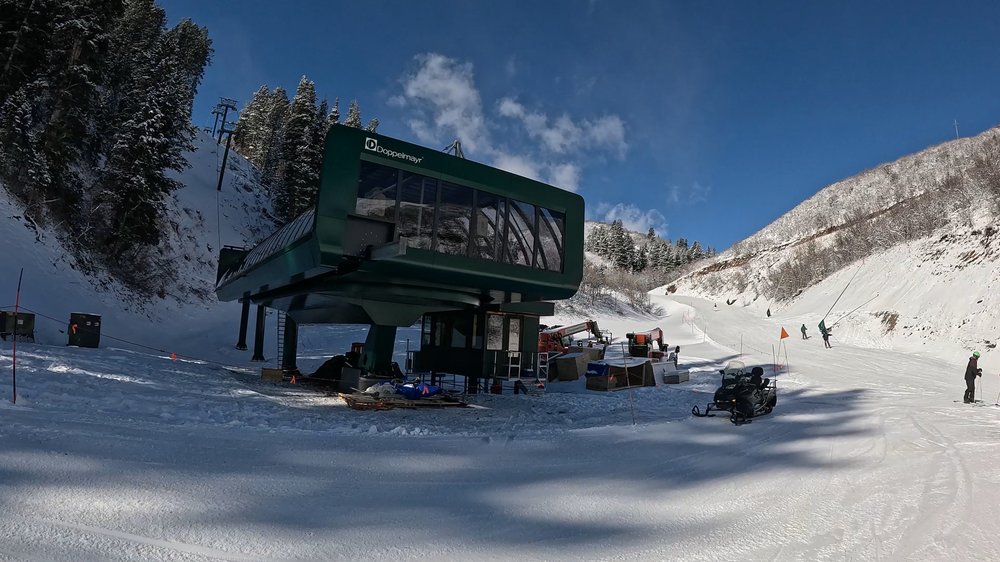
There are also a few logistical quirks that will likely be resolved in future years, but created some headaches this winter. The Sultan Express area is a bottleneck right now, with all guests coming from the East Village base needing to funnel through that lift to get elsewhere on the mountain (there will be redundancies built in future seasons). And while the East Village parking is plentiful, having to take a shuttle to the base makes for a less-than-seamless experience. Thankfully, future development includes a more direct connection between the parking and the lifts. Another funny circumstance resulting from this multi-year expansion: a few signs currently point toward trails that haven’t officially debuted yet, including some black-diamond trails that are expected to be quite a bit harder than anything that debuted this winter.
As the only lift providing access out of the East Village terrain area, the Sultan Express chair was a huge chokepoint this winter. New lifts for the 2025-26 season are expected to address this bottleneck.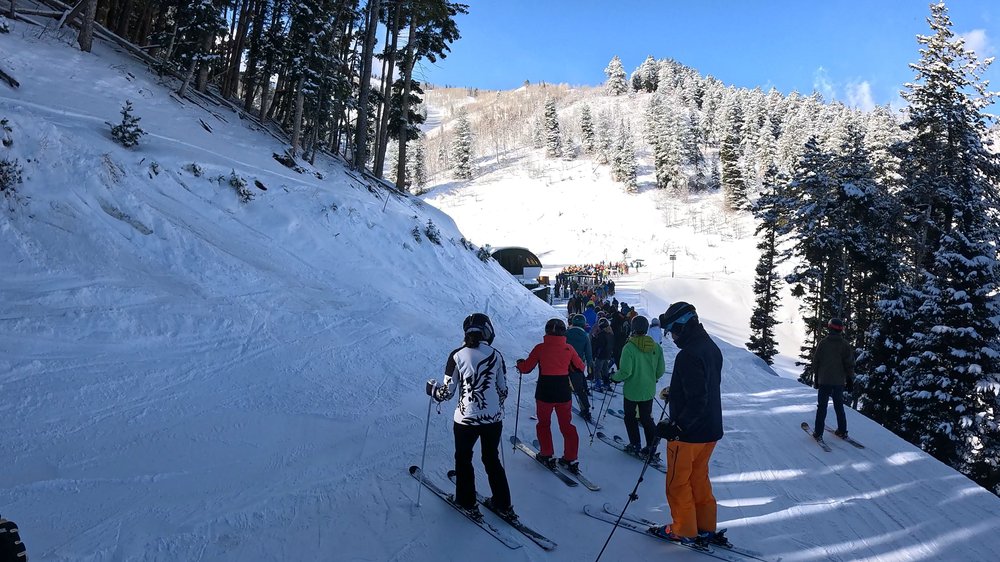
But perhaps the biggest issue with Deer Valley’s expansion terrain might be snow reliability. With most of the new terrain sitting below 7,500 feet and facing east, natural snow retention is quite a bit less reliable than most other parts of the resort. While strong snowmaking kept this year’s trails in reliable shape throughout the bulk of this season, it was clear that the areas just off the marked trails were hurting for cover throughout certain parts of the season. Some of the non-groomers were quite icy when we visited, but higher-elevation bump runs stayed soft.
Overall, this first phase is a strong leap forward for Deer Valley. It doesn’t exactly cater to the most advanced skiers out there, and natural snow reliability could be better—but for intermediates and those seeking scenic, comfortable laps (i.e. Deer Valley’s typical clientele), it’s an exciting addition. And with exponentially more terrain and infrastructure expected to come next winter (the resort claims it is opening an astounding 91 new trails across approximately 2,900 acres of terrain next winter), this year may only be a small taste of what yet to come.
Considering a ski trip to Utah next winter? Check out our comprehensive Utah ski resort rankings, as well as our Deer Valley mountain review from this past season. You can also check out our analysis on the ski patrol strike and other compounding factors facing the Utah ski scene in our video analysis below.
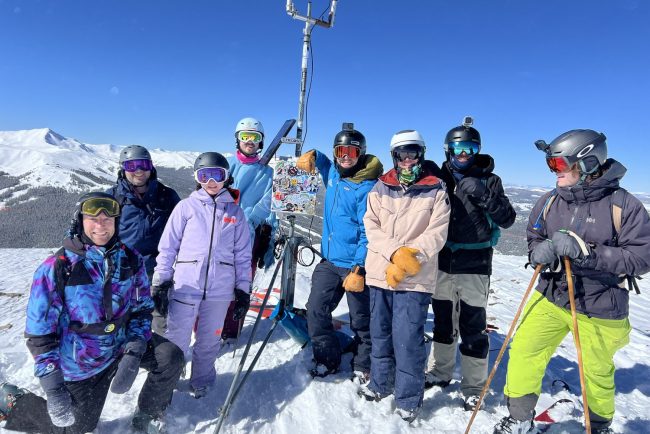
What I Learned From Building PeakHouse This Season (And Where We’re Going Next)
The PeakHouse program has grown more than I could have ever anticipated over the past 12 months—and we have you to thank for that. Well, this post is going to be different. Taken on Day 2/46, picking up groceries for PeakHouse Colorado! Starting […]
Mountain
The PeakHouse program has grown more than I could have ever anticipated over the past 12 months—and we have you to thank for that.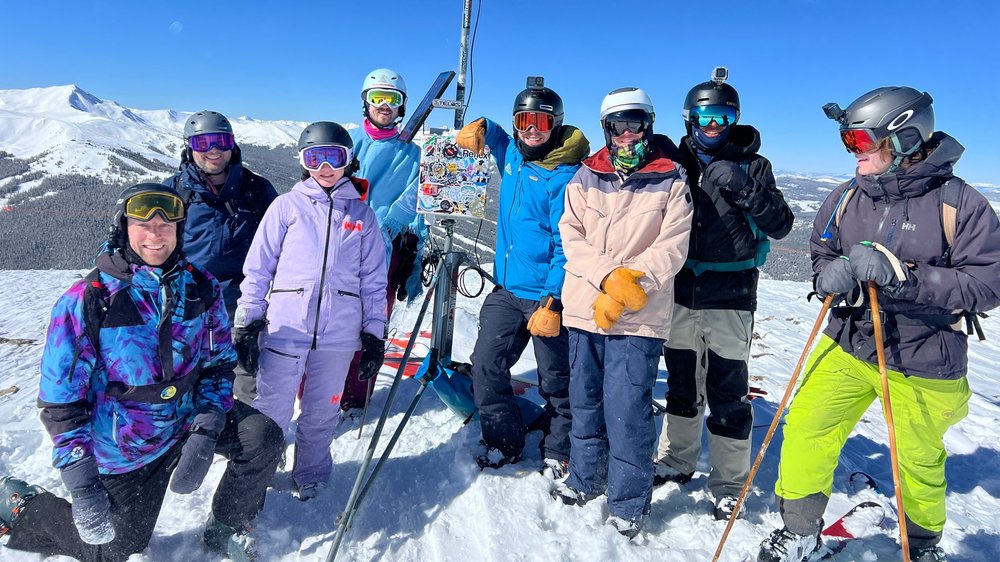
Well, this post is going to be different.
Taken on Day 2/46, picking up groceries for PeakHouse Colorado!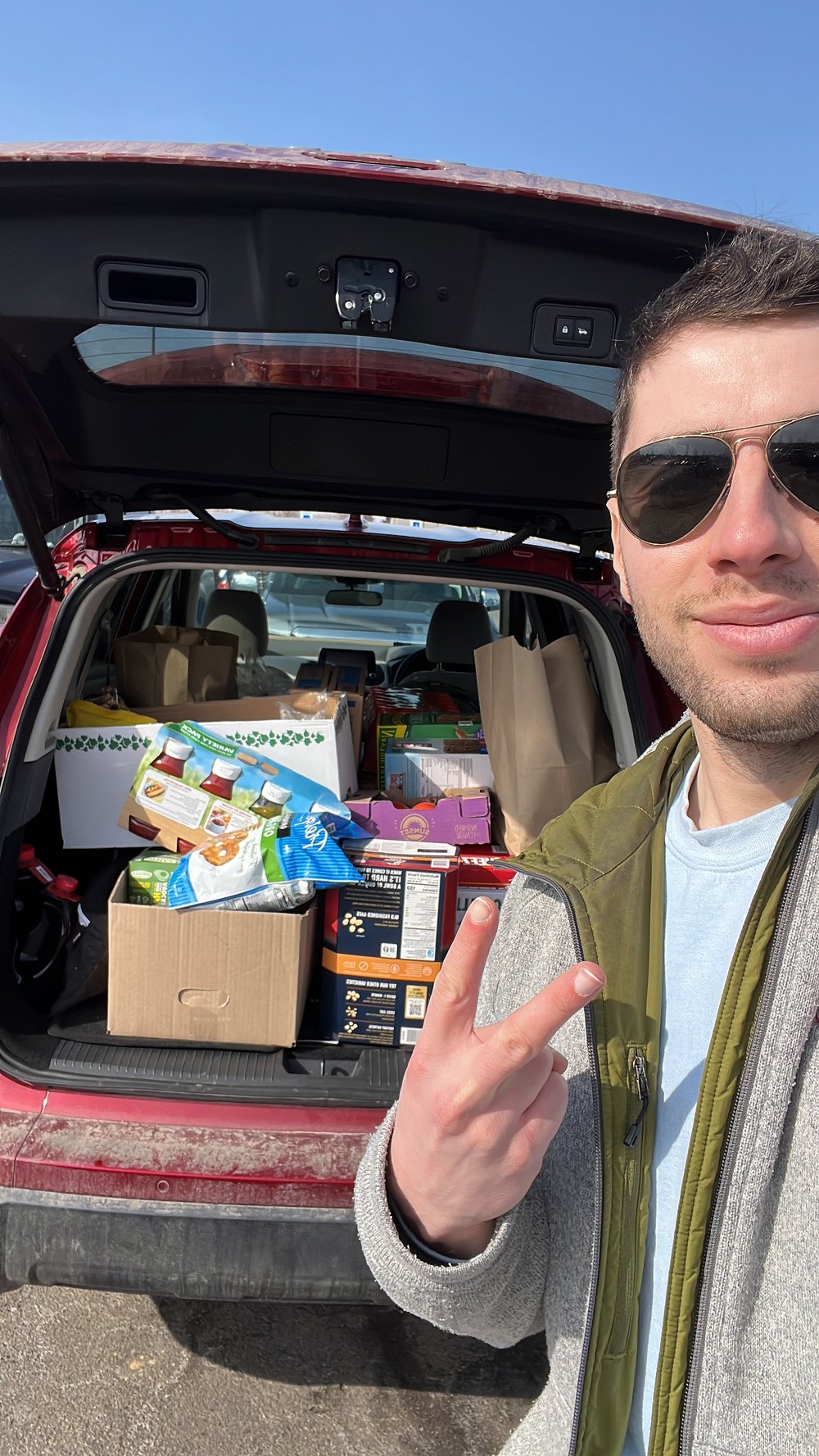
Starting today, I’m going to be writing you a little more personally from time to time—pulling back the curtain on what’s happening behind the scenes at PeakRankings and what’s coming next. At the heart of all this is community. PeakHouse exists because of the connections we’ve built together, and I want to make sure we’re creating space to keep those going outside of the mountains. (If you haven’t already, you can join our growing Circle community space here!)
I’m writing this after being away from home in Brooklyn for 46 straight days, leading PeakHouse trips across Colorado, Montana, Wyoming, Austria, and Switzerland—without a single break to see friends or family in between. It was an absolute whirlwind. Interest in the PeakHouse program exploded after our original Utah trip in March 2024. Naturally, my instinct was to meet that demand head-on. We went from hosting one winter trip in 2024 to running six this season—a massive leap, but one we felt was worth it.
Personally, this season also marked a big shift. As someone used to solo travel for ski reviews and content, having a group along for the ride made the time pass by so much faster. There’s something transformative about experiencing an adventure with others instead of going it alone.
There were so many standout moments this season that it’s hard to pick favorites—but a few will stick with me for a long time.
In the Dolomites, Rick led us on a mission to a hidden, horse-drawn surface lift he remembered from a prior trip. It took nearly four hours of skiing from our base village just to reach it, but the journey (and the throwback lift) was 100% worth it.
These horses dragged about 50 of us up the slope at a time. It was absolutely sick.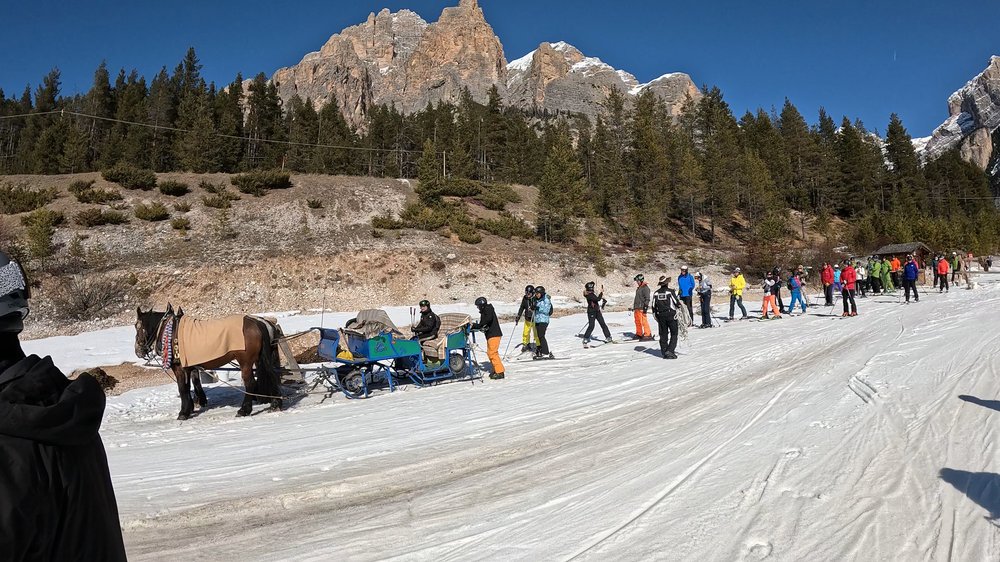
In Colorado, Jacob—who happens to be a professional baker—whipped up fresh focaccia bread for the house one night. It made its way into everyone’s lunch pack the next day and set a new bar for PeakHouse meals going forward.
Jacob’s focaccia before it made it into hungry PeakHouse Colorado mouths.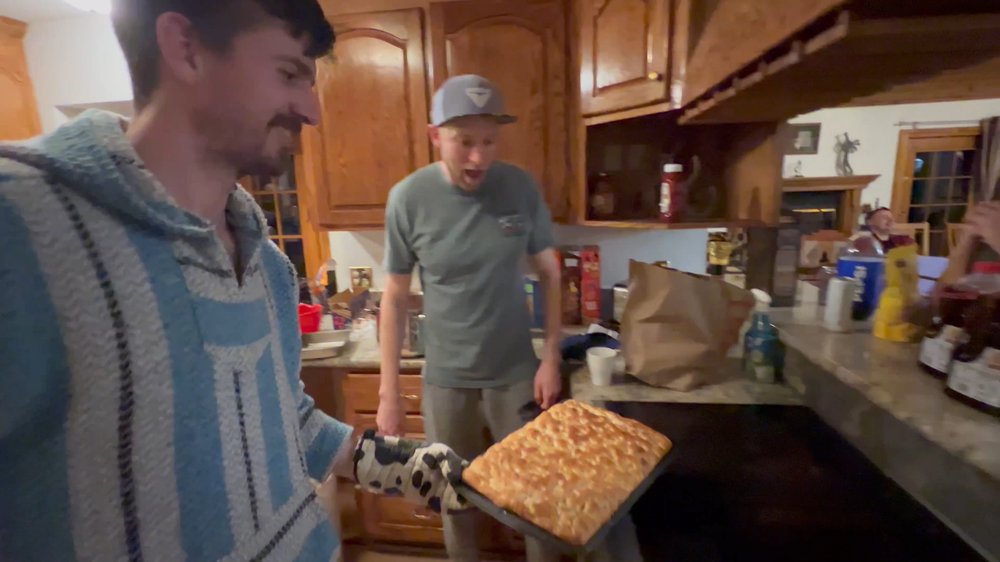
And the entire Northern Rockies crew? Absolute savages.
Every single day, they took on the steepest hike-to terrain we could find—and did it with the kind of energy and stoke that reminded me why this program exists. I can’t think of another time where a group of 20 was ripping it up the bootpacks and sending it down the chutes.
Some of the PeakHouse crew at the top of the Jackson Hole Headwall hike! Everyone here did at least five more hikes before the end of the trip.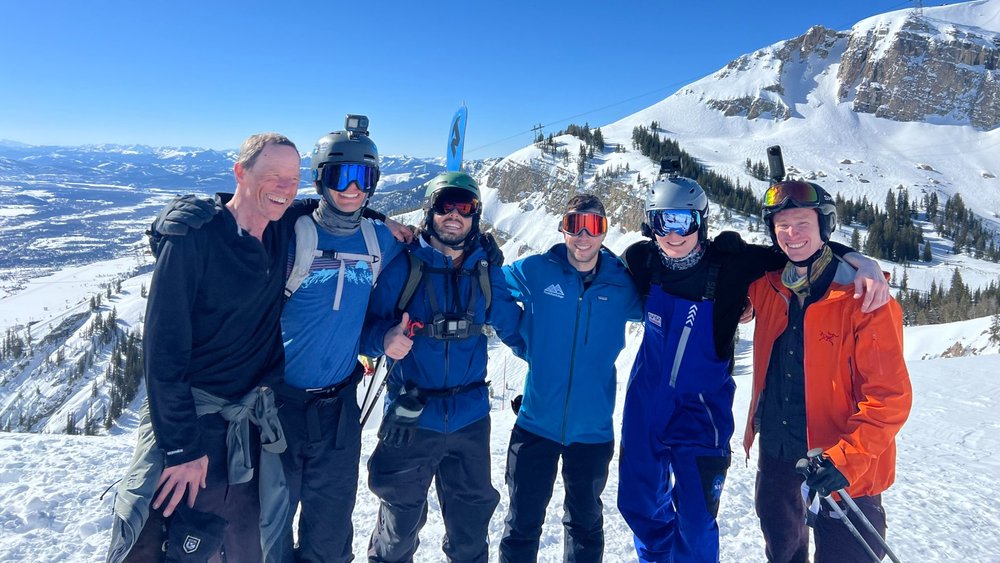
Finally, I want to give a personal shoutout to some of the people who’ve come back for their second trip: Sean, Will, Josh, Grant, Adi, Oscar, Brian, and Bill. And an extra huge shoutout to Steve, who came back for round three. Your continued trust and support means the world, and you’ve helped shape this community into what it is today.
But let’s be real: being on the road for a month and a half isn’t easy. I missed birthdays, family moments, and the rhythm of daily life in New York. That’s why we’re already investing in more trip leaders—so the program can grow without me needing to be everywhere at once. Huge shoutout to Sam Daley, who led the Mammoth trip this March. It was the first PeakHouse I didn’t personally attend, and based on feedback, he absolutely crushed it.
The PeakHouse Mammoth crew!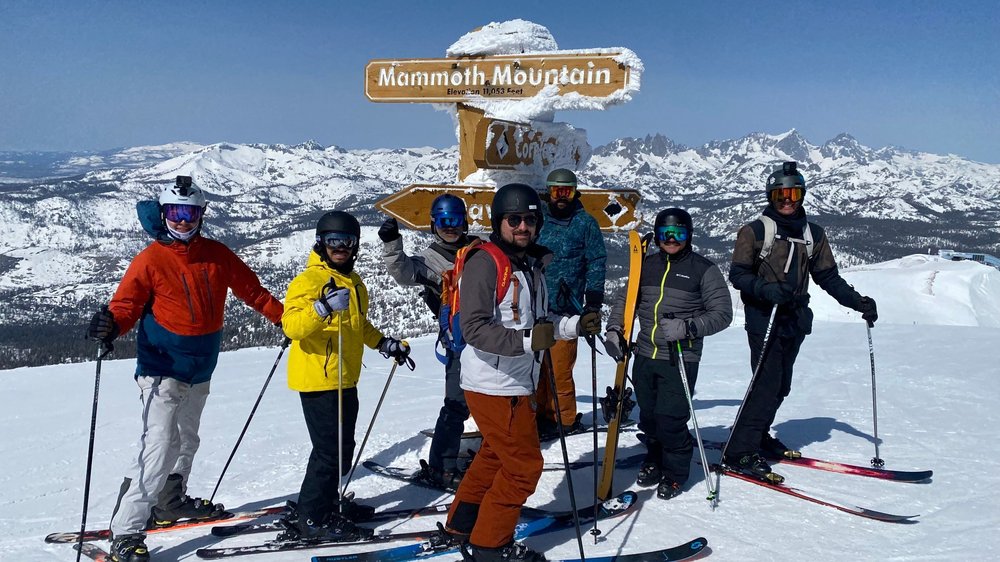
While the ski season in North America might be winding down, this is just the beginning for what’s ahead. I invite you all to join us on an international ski trip to New Zealand in August and our first ever National Park trip to Banff in July.
To the 100+ of you who’ve joined us on a PeakHouse trip so far: thank you. Your support means the world. I can’t wait to see what we’ll build together next.
Talk soon,
Sam
Founder & CEO, PeakRankings
P.S. I’d love to hear from you. Whether you’ve been on a PeakHouse trip, are thinking about joining one, or just have thoughts on where we should take things next—hit reply and let me know. I read every message.
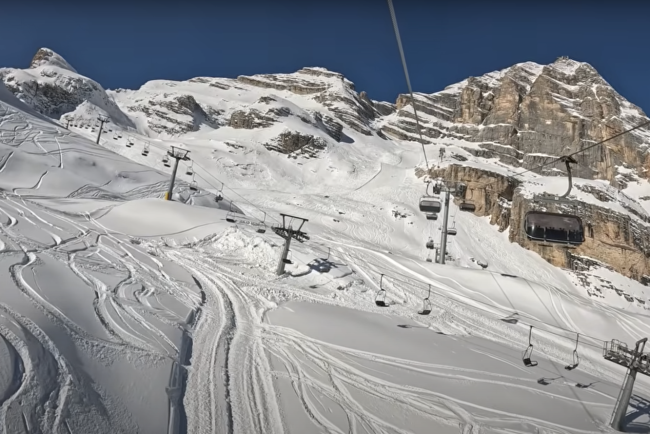
Ski Lifts Explained: Basic Chairs to Engineering Marvels
When you visit a ski resort, one of the most critical aspects of your skiing or riding day is how you get up the mountain. Ski lifts are the workhorses of these resorts, providing skiers and snowboarders with access to the slopes. However, not […]
Mountain
When you visit a ski resort, one of the most critical aspects of your skiing or riding day is how you get up the mountain. Ski lifts are the workhorses of these resorts, providing skiers and snowboarders with access to the slopes. However, not all uphill transportation at ski resorts is the same.
Mountains employ various types of transportation contraptions, each with its own unique features, advantages, and drawbacks. In this video, we’ll take a closer look at the different types of lifts commonly found at ski resorts, including their capacities, speeds, and the pros and cons of each one. Let’s jump in.
Surface lifts, such as T-bars, are often used in more wind exposed areas, such as areas above the treeline.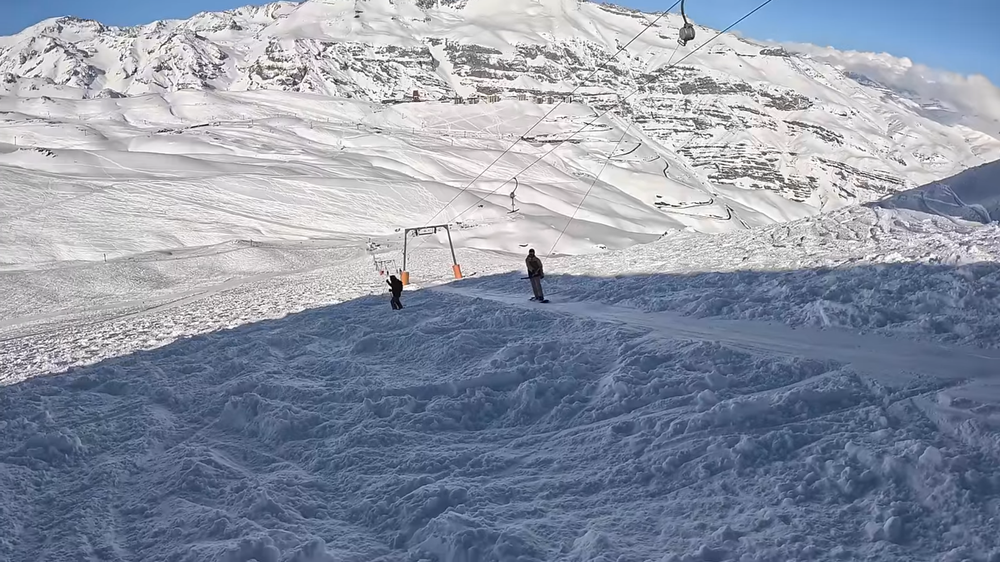
Surface Lifts
Let’s start out with the most rudimentary of all ski lifts, the surface lift. These were the first motorized lifts to make their way into the ski world when the sport was born in the early 20th century. Many of you probably haven’t even thought of surface lifts as real lifts, but they play an important role in uphill transportation in several circumstances.
There are three main types of surface lifts:
T-Bars and Platter Lifts
T-bar and platter lifts consist of a horizontal bar or platter attached to a moving cable. Skiers or snowboarders grab onto the bar, and it pulls them uphill. Platters typically accommodate one rider, while T-bars typically accommodate two.
Rope Tows
Rope tows are similar to platters, but use a continuous loop of rope instead of a bar. Skiers and riders hold onto the rope as it moves uphill, providing tension for the ride.
Magic Carpets
Magic carpets are conveyor belt-like lifts that are often used in beginner areas. Riders stand on a moving carpet that takes them uphill, meaning that unlike T-bars, platters, and rope tows, riders do not have to exert real physical energy to ride them. They are particularly user-friendly for beginners and small children, but they are also the slowest of the bunch, and as such, really only get used for very short distances.
Carpet lifts are often found in beginner areas, or bunny slopes, and provide an easy way to get up the mountain.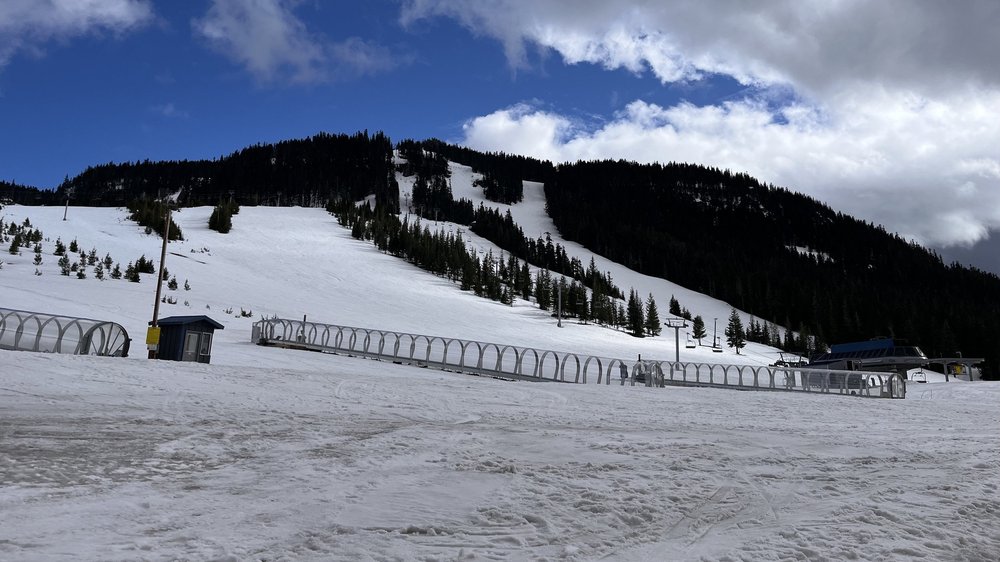
Surface lifts have a couple of notable advantages despite their simplicity. First, they are easy to operate and require minimal infrastructure, making them far more cost-effective to install and maintain than chairlifts or gondolas. Their simple design allows them to be used on sensitive terrain, such as glaciers, where full-size towers would be infeasible. In addition, surface lifts are often easier to unload than chairlifts, especially in beginner-oriented areas, and some variants can operate at faster speeds than certain chairlifts, making them faster alternatives to get up the mountain. Finally, surface lifts offer far better wind and weather resilience than traditional lifts, as their lighter, ground-oriented footprint creates more stability when storms roll around—and allows riders to hypothetically get off the lift at any time in case of an emergency.
But with a lift type this rudimentary, you run into some limitations. The biggest drawback might be capacity; since surface lifts can only carry one or two individuals at a time, guests will experience longer wait times during peak times at busy resorts. In addition, surface lifts become a lot less practical as ski slopes become longer and steeper, with the physical toll of riding platters, rope tows, and T-bars growing substantially more burdensome as the gradient and ride time increase. In today’s world, you probably think of a ski lift as an opportunity to relax and recharge—but what if it actually becomes the most exhausting part of your day?
Surface lifts are about as straightforward as ski lifts get, but there’s a reason why ski resorts that can afford to have moved onto more complex and higher-capacity uphill transportation.
Fixed grip lifts are incredibly common at more regional ski areas, and their incredibly long lifespan means you could be riding on lifts that are up to 70 years old.
Fixed-Grip Chairlifts
When it comes to the actual chairlifts you probably picture at a ski resort, fixed-grip chairlifts are arguably the most basic and traditional form. These lifts feature chairs that are permanently attached to the cable. Passengers load onto the lift while it’s moving at a constant speed, meaning the lift does not slow down at the bottom or top terminals. Fixed-grip chairlifts are cost-effective to install and maintain, making them common at smaller resorts and beginner slopes. Most often, resort guests will find them in two-to-four passenger configurations, although variants ranging from single occupancy to six-pack exist.
Some newer fixed-grip chairlifts are now paired with loading carpets, which help regulate passenger entry by slightly accelerating riders before they reach the chair. This makes the loading process a bit smoother and sometimes allows the lift to run at a slightly higher speed than a traditional fixed-grip chair, although other more complex types of lifts are still usually easier to load and faster.
Thanks to their lower cost and easier maintenance, fixed-grip lifts are often used for shorter lift routes, as backups for more popular lifts, or in terrain areas with variable opening schedules where a higher-cost lift wouldn’t be justifiable. Lower-capacity fixed-grip chairs, typically doubles or triples, are often employed in expert-oriented areas to subtly discourage less-experienced guests from riding them. In addition, fixed-grip chairlifts have smaller terminal footprints than their higher-end counterparts, meaning that they can be fit into far more complicated or space-constrained areas.
But fixed-grip chairlifts come with significant drawbacks, the biggest of which is arguably their speed. Because they must run slowly enough for safe loading and unloading, fixed-grip lifts maintain a leisurely pace on the way up the mountain. In fact, a standard fixed-grip lift ride typically takes more than twice as long as a more modern experience. However, because fixed-grip lifts have to operate at a reasonable speed to maintain acceptable transport times, their loading and unloading process is much quicker than on modern lifts, which can be a challenge for less-experienced guests. This can make the ride even slower, as lift operators often slow down or stop the lift to assist struggling passengers. While some skiers and riders may find the slower ride time okay as a chance to recover between runs, other guests will find it frustrating—especially on cold, windy days when prolonged exposure to the elements makes for an uncomfortable experience.
While fixed-grip chairlifts may not offer the convenience and speed of detachable lifts, they remain a fundamental part of many ski resorts. Even the fanciest ski resorts still employ them in some capacity, with these simple lifts providing a reliable and affordable means of getting skiers and snowboarders up the mountain.
Detachable lifts, also called high-speed, or express lifts, are some of the most common lifts you’ll find at a destination ski resort.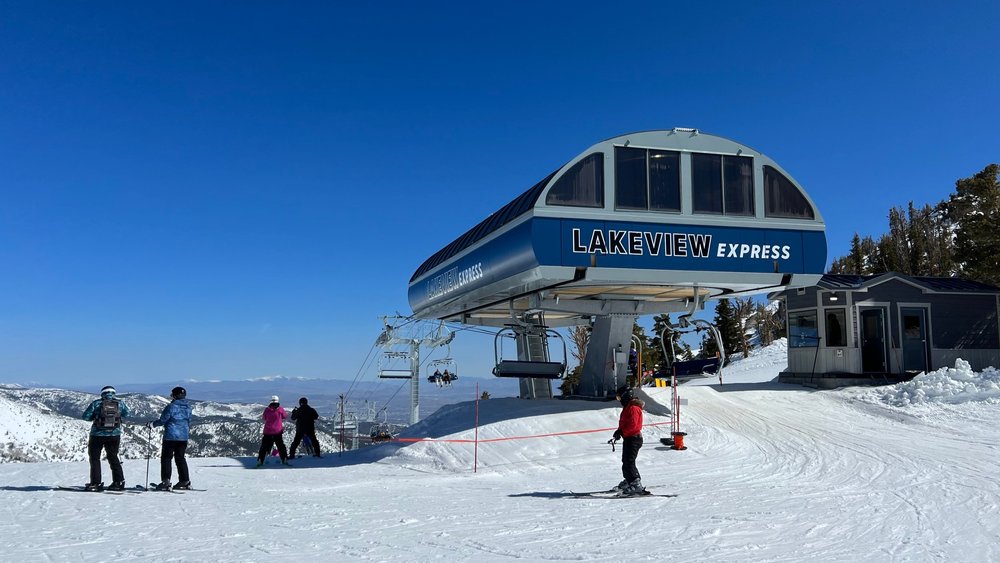
Detachable Chairlifts
For most guests at a ski resort, the first lift they’ll truly look forward to riding is a detachable chairlift.
Detachable chairlifts, also known as high-speed or express lifts, are designed so that their chairs can detach from the moving cable at the base and top terminals. This allows for much slower loading and unloading while the cable itself continues moving at high speed. As a result, these lifts not only transport skiers and snowboarders uphill significantly faster than fixed-grip chairlifts, but they also make for a much more convenient loading and unloading experience, enabling quicker mountain laps and greatly improving the experience for the average guest. In beginner and intermediate-oriented areas, having a high-speed lift can greatly reduce misloads, resulting in fewer lift stoppages throughout the day. Some of the highest-end detachable lifts even feature heated seats and protective bubbles to shield passengers from wind and cold temperatures—comforts rarely, if ever, found on fixed-grip or surface lifts. Detachable chairlifts typically come in four-to-six-passenger configurations, although variations range from doubles to eight-packs.
Thanks to their speed and efficiency, detachable chairlifts have become essential for any ski resort hoping to stay competitive. However, because of the mechanics of their terminals, the chairs must be spaced farther apart than on fixed-grip lifts. This means that unless a detachable lift has a higher-capacity chair (i.e. a six-pack versus a quad), it won’t necessarily move more people per hour than a fixed-grip lift, notwithstanding the misload benefits we mentioned earlier. Another drawback is that detachable chairlifts have a shorter lifespan than their fixed-grip counterparts. While fixed-grip lifts can remain operational for many decades with proper maintenance, most high-speed chairlifts have required replacement after 30 to 40 years due to mechanical wear. Finally, detachable chairlifts are more susceptible to ice and wind-related downtime than fixed-grip and surface lifts. Gusty wind conditions can interfere with safe and properly-aligned grip engagement at terminals, while any ice buildup needs to be cleared from the cable, grips, and terminal interiors to ensure the chair detachment and reattachment process functions smoothly.
High-speed chairlifts may not be perfect at everything. But as uphill transport for an activity that revolves so much around cold weather, they provide an ideal and efficient solution.
Gondolas provide exceptional uphill capacity, and are often used for out-of-base lifts at destination resorts.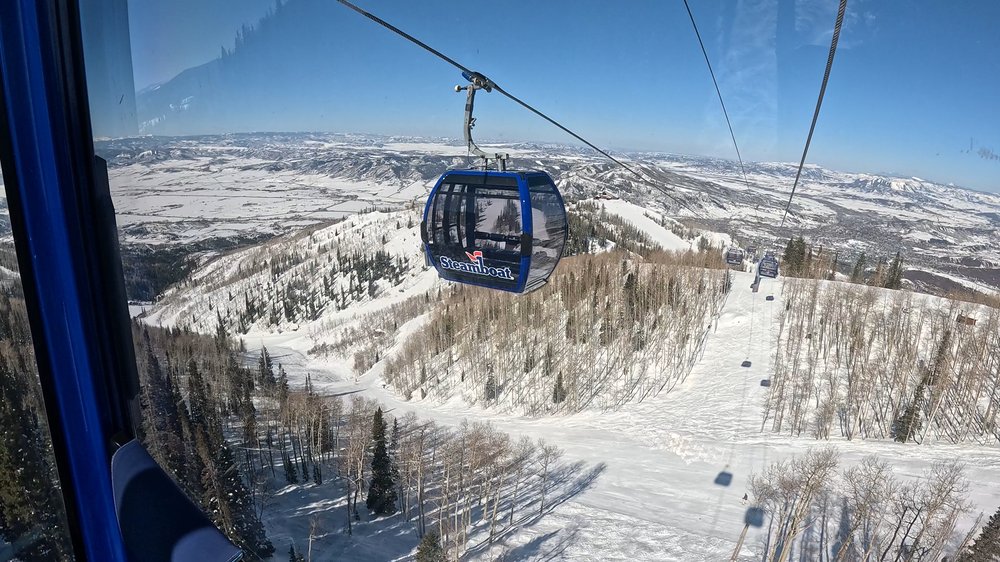
Gondola Lifts
But what if you want to shield yourself from the cold weather entirely? That’s where gondolas come in. Gondola lifts are characterized by wholly enclosed cabins that are suspended from an overhead cable, allowing for what’s essentially full isolation from the elements. Not only do gondolas offer a more comfortable ride than non-bubble chairlifts, but they are often warm enough to help visitors regain body heat—rather than lose it—before their next run, providing a much more efficient alternative to warming up in a lodge on a cold day. Traditional gondola cabins can typically fit more people than a chairlift, with most coming in six-to-ten passenger configurations, although variations ranging from two-to-fifteen passengers exist as well.
Thanks to their enclosed design and smoother ride, gondolas are often used for longer uphill spans where a chairlift ride—even a detachable one—might be too exposed and uncomfortable in cold or windy conditions. Their enclosed cabins also make them preferable for routes with high spans or downhill sections, which can be unsettling for guests with a fear of heights. At resorts that have them, gondolas are especially popular as transport from base areas, allowing skiers and riders to board before strapping on their equipment.
But while gondolas offer a highly comfortable experience, they come with tradeoffs that make them less practical in certain situations. Unlike chairlifts, where guests can simply ride up with their gear on, passengers must remove their skis or boards before boarding a gondola and either carry them inside or place them in designated exterior racks. This extra step makes gondolas less desirable for shorter rides or terrain zones that are frequently lapped, as the time spent removing and reattaching gear can offset the benefits of the enclosed cabin. In addition, some smaller gondola cabins can feel a bit claustrophobic, especially at the handful of resorts that still have four-passenger models.
Despite these drawbacks, gondola lifts remain a staple at high-end ski resorts, offering a comfortable, high-capacity alternative for accessing terrain where chairlifts may not be ideal.
Cabriolet lifts are basically open-air gondolas, and they are typically found in base areas. The lack of seating makes long rides uncomfortable.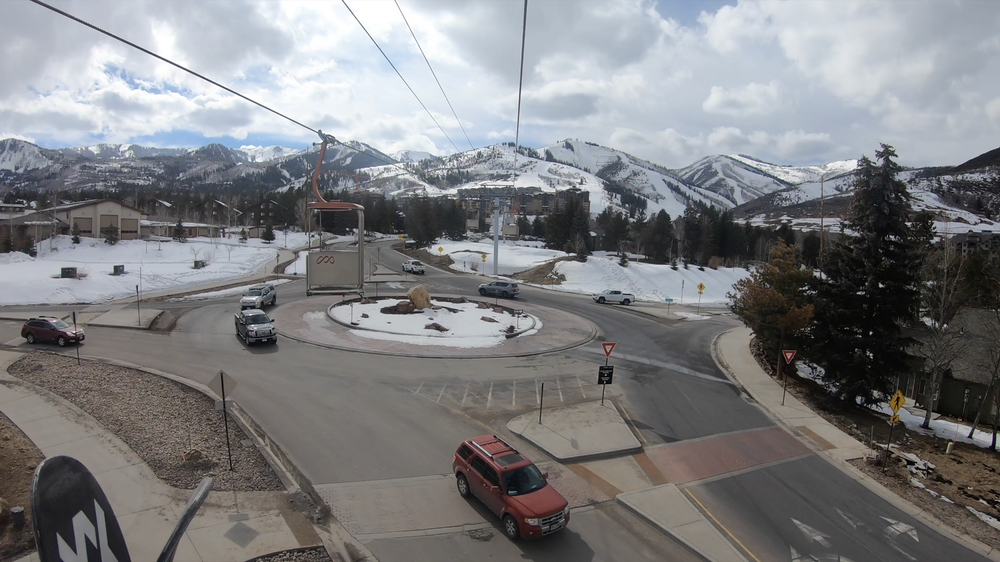
Cabriolet Lift
A rare variation of the gondola is the cabriolet lift, which functions similarly to a gondola but features open-air cabins instead of enclosed ones. Cabriolet lifts are most commonly found in ski resort base areas, transporting guests from parking lots or village centers to the main ski area before they’ve had a chance to put on their skis or snowboard. Unlike gondolas which have seating, cabriolet lifts are designed for standing only. Because they lack the full enclosure and seating of traditional gondolas but still have the same practical drawbacks, they’re not really ideal for truly riding up the mountain, but they provide an efficient and scenic way to move guests around resort villages.
Chondola Lift
Another rare lift variation is the chondola lift, which consists of both chairlift and gondola carriers on the same ropeway. These lifts provide unique versatility, allowing guests to choose between the convenience of a chairlift and the comfort of a gondola cabin. However, due to their complexity, chondolas are expensive to install and come with a few drawbacks. Guests need to choose between separate loading lines for chairs and gondola cabins, which can lead to uneven wait times, as there are usually fewer gondola cabins than chairs. Additionally, because gondolas require slower speeds for loading and unloading, the entire lift must run at a lower terminal speed than a traditional detachable chairlift.
Pulse Lift
Finally, perhaps the least-known and least-understood type of gondola lift is a pulse gondola. Unlike a standard detachable gondola, where each cabin moves continuously along the cable, a pulse lift operates with groups of cabins that are fixed to the cable but move in clusters or “pulses.” These odd-looking lifts slow down at loading areas before speeding up again to a regular detachable speed once the journey starts. However, because multiple cabin clusters operate along the ropeway, pulse lifts need to slow down to a crawl whenever other cabin clusters reach the terminal to load or unload passengers. On longer applications, this can happen multiple times mid-ride. This makes pulse lifts incredibly impractical for anything more than short travel distances or very low demand applications where the resort can get away with only a handful of clusters.
While not as seamless as a fully detachable system, pulse lifts provide a practical compromise for resorts that need a high-speed lift but are okay with trading intermittent stops and capacity for minimized cost. In extremely rare cases, pulse chairlifts exist as well.
Aerial tramways can carry a large number of passengers at once, but the long headways between cabins mean the actual uphill capacity is quite low.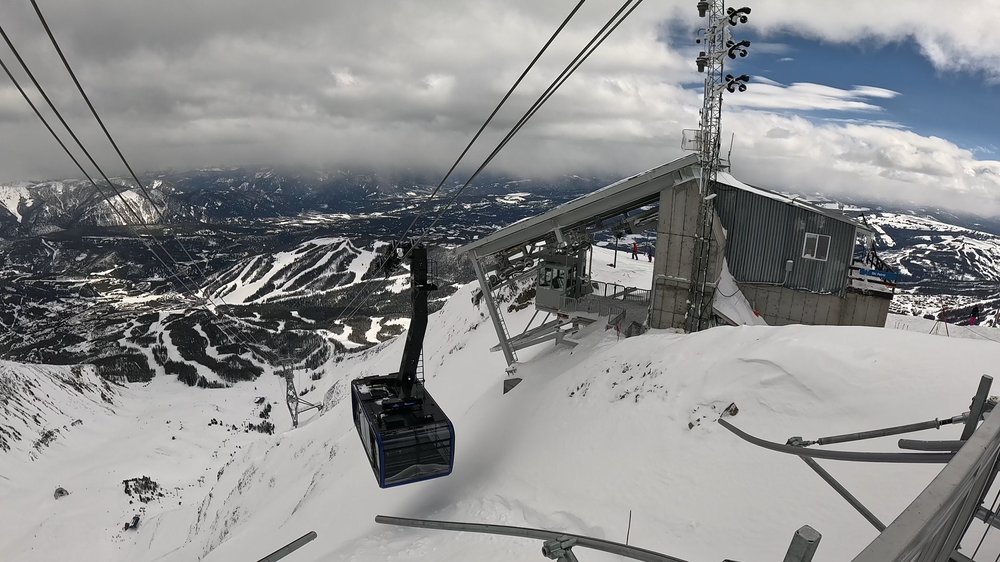
Aerial Tramways
But for some of the world’s most intense ski resorts, regular circulating ski lifts won’t cut it. That’s where aerial tramways come in.
Trams are a unique type of lift system that consists of large cabins suspended from thick cables, transporting passengers up and down the mountain in a single, continuous trip. Unlike gondolas, which have multiple cabins that circulate along a continuously moving cable, trams typically operate with just one or two cabins traveling back and forth on a fixed cable. Most trams can accommodate substantially more people per cabin than a gondola, typically carrying between 50-150 people per cabin, although variations between 5 to 200 people exist as well. In the craziest applications, even some double-decker cabins have been used.
Because of this design, trams are known for their ability to traverse extremely steep and rugged terrain with minimal support towers, making them an excellent choice for ski resorts that need to move guests over dramatic elevation changes or across deep valleys. Many of the world’s most iconic ski areas, including Jackson Hole, Snowbird, and Chamonix, have trams that provide access to their highest and most extreme terrain. Trams tend to provide some of the most scenic rides of any lift type, as their dramatic terrain spans lead to stunning views of the mountains they ascend.
One of the other primary advantages of aerial trams is their stability in high winds compared to gondolas or chairlifts. Since most tram cabins are connected to thick track cables rather than relying on a single haul rope for support, they sway less in strong gusts, allowing them to operate in conditions that might shut down other lifts. Finally, aerial tramways can move at significantly faster speeds than even high-speed chairlifts and gondolas, with the fastest trams able to achieve operating speeds of up to 26 mph (12 m/s), which is over twice that of its circulating ropeway counterparts. This can be of significant benefit for particularly long lift route stretches.
However, despite these advantages, aerial tramways have significant downsides—the biggest being their low capacity. Since most trams can only carry between 50 and 150 people per trip and operate on a fixed schedule rather than continuously, they tend to involve long lift lines, especially at peak hours. Unlike gondolas or high-speed chairlifts, which continuously load passengers, trams require all guests to wait for the next scheduled trip, meaning a single missed ride can result in an extended delay.
Another disadvantage of trams is that, like gondolas, passengers must remove their skis or snowboards before boarding—although the headways between each tram car make this somewhat of a secondary issue. Finally, tram rides can feel crowded and less comfortable, especially when cabins are packed to full capacity on busy days.
Despite these drawbacks, aerial tramways remain a staple at many major ski resorts due to their ability to access extreme terrain, their durability in high-wind conditions, and the unparalleled mountain views they provide. While they may not be the most efficient lift type for moving large crowds, their ability to reach rugged, high-altitude terrain—and gatekeep crowd levels on extreme terrain—ensures they remain an important part of big mountain ski resort infrastructure.
Tricable gondolas, or 3S gondolas, have all the upsides of Aerial Tramways, but much higher capacities. However, their incredibly high cost makes them a rare sight at ski areas across the world.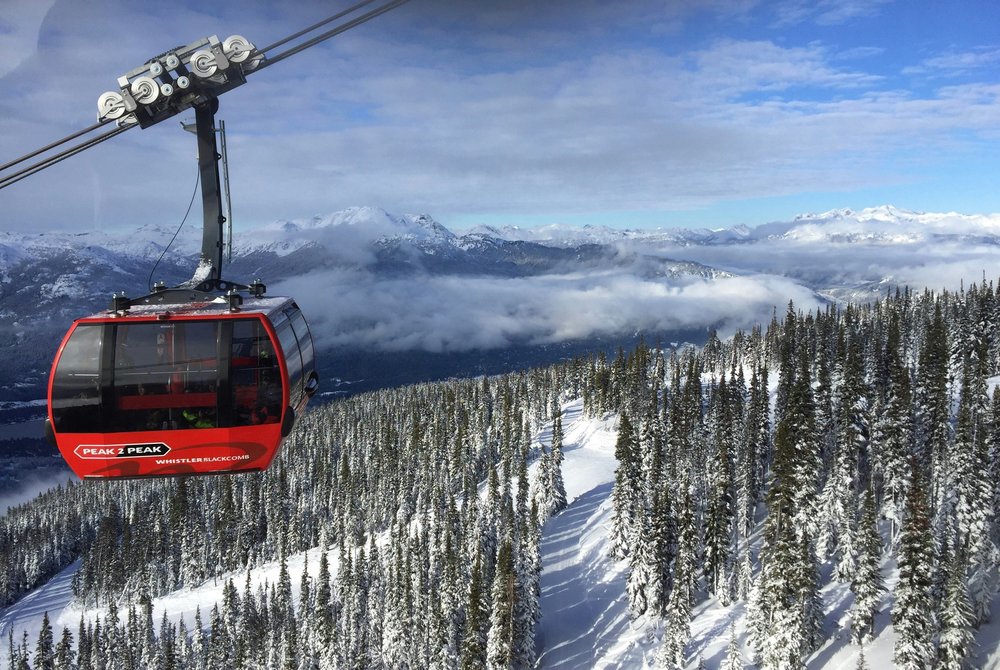
Tricable Lifts and Funitels
But what if a chairlift or gondola isn’t sufficient to navigate the terrain a resort might need to cover—and you also need higher uphill capacity than a tram? That’s where specialty lifts like tricable ropeways and funitels come into play. Both systems offer significantly improved wind resistance and tower span capabilities over traditional lifts without the practical drawbacks of a fixed tramway. Thanks to their reinforced cable systems, these lifts can also support larger cabins than traditional gondolas, typically carrying between 20 and 30 passengers per cabin, although the presence of multiple cabins on the rope means they aren’t as big as trams.
Tricable gondolas, also called 3S lifts (from the German word for “three cables”), use two stationary support cables and a third moving haul cable. This particularly stable design allows these lifts to span significantly longer distances with fewer towers, making them ideal for ski resorts that need to move large numbers of guests between far-apart resort areas or over rugged terrain where tower placement is impractical. While incredibly complex to construct, these lifts dramatically improve guest flow and provide access to terrain that would otherwise require multiple conventional lifts or an inconvenient detour.
Funitels utilize two moving haul ropes, which provide reduced cabin sway and incredible wind resistance.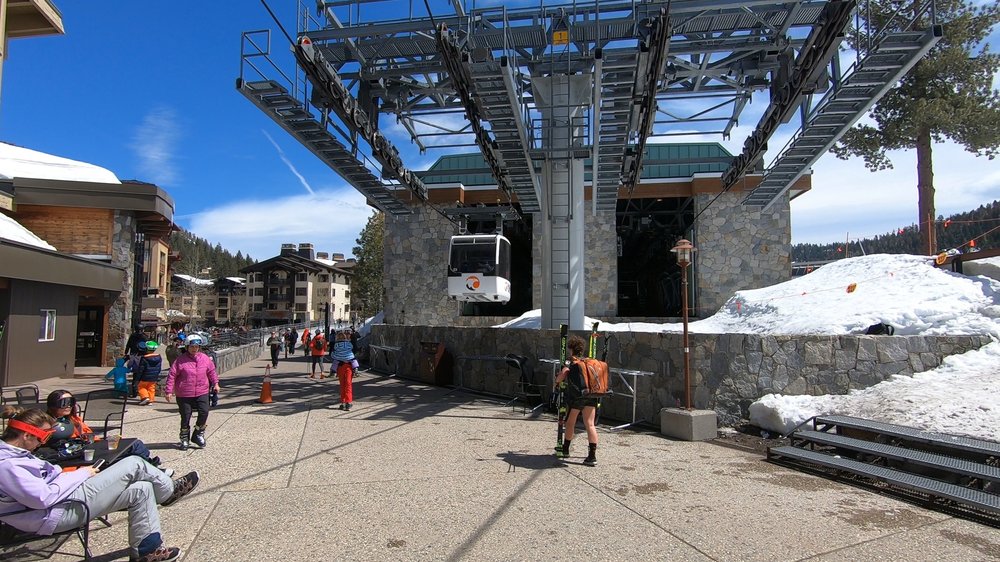
Unlike a tricable ropeway, which features two fixed support cables and one haul cable, funitels use two parallel haul cables that grip the cabins at two points instead of one. This double attachment system creates outstanding wind resistance, reducing cabin sway and allowing these lifts to function in wind speeds that would almost certainly shut down everything else. This has made funitels especially popular in high-alpine terrain with significant exposure. Because funitels prioritize wind resistance over long-span capability, they are less commonly used in areas requiring exceptionally wide tower spacing.
Like traditional gondolas, 3S and funitel lifts have trade-offs, though their challenges differ slightly. Guests will have to remove their equipment to ride them, and because their cabins are so big, exterior equipment racks rarely exist. Also, these lifts sometimes lack seating for all passengers, meaning at least some guests will have to stand up if the cabin loads to capacity—this is especially the case when it comes to funitels.
But the biggest drawback for these specialty lifts is arguably their price tag. These lifts cost exponentially more than a traditional gondola, and there’s a reason why only a couple dozen of each exist worldwide, almost exclusively at the world’s highest-end mountains. Even the most cash-rich resorts are incredibly particular about where and when they install these lifts, making sure they put them in the places with the highest winds and most difficult terrain layouts where conventional lifts simply wouldn’t suffice.
A few ski areas, most notably in Europe, have rail-based uphill transportation.
Mountain Railways
But sometimes, ski resorts face such exceptional circumstances that using a cable-driven system just doesn’t make sense. This is where mountain railways come in. These distinctive uphill constructions are found almost exclusively in Europe, although a handful do exist at resorts elsewhere around the world. The two main types of mountain railways used as ski lifts are cog railways and funiculars, each serving a distinct role in transporting skiers and riders efficiently and reliably.
Cog Railways
Cog railways, also known as rack railways, are a unique type of train system that uses a toothed rack rail between the running rails to help trains climb steep inclines that regular trains cannot handle. Because they run on fixed tracks and achieve much higher speeds than any other type of ski lift, cog railways are incredibly efficient, with individual trains far exceeding the capacity of any chairlift or gondola.
Funiculars
A funicular railway is another form of cable-driven mountain transport that operates on fixed rails, typically using two counterbalanced train cars moving in opposite directions. Unlike cog railways, which use a toothed rack for traction, funiculars rely on a pulley system to pull one cabin up while lowering the other down. They are particularly valuable in avalanche-prone or high-wind areas, where traditional chairlifts and gondolas might be unreliable.
Funiculars vary widely in design. Visitors can find installations ranging from short-distance, 4-person lifts that are basically just glorified elevators to massive resort transport systems capable of moving up to a whopping 440 people per trip at speeds comparable to cog railways.
Due to their incredibly fast travel speeds, mountain railways can be just as efficient as circulating ropeways, even with longer headways between departures. Additionally, alpine railways provide a comfortable, enclosed ride with no exposure to the elements, making them an attractive option for skiers and riders looking to stay warm on the way up.
However, the biggest limitation of mountain railways is their reliance on dedicated tracks. This either reduces usable ski terrain, requiring careful placement to maintain skier and rider access, or demands expensive tunnel construction to avoid interfering with slopes. Additionally, unlike chairlifts or gondolas, which continuously load passengers, cog railways and funiculars operate on a fixed schedule—meaning a missed departure could result in a long wait.
Ski trains are far from the most practical option for most ski resorts, but they’re among the most comfortable and novel forms of uphill alpine transportation. For many, riding one of these railways will be just as unique of an experience as visiting the ski slopes themselves.
While they’re typically used for grooming slopes, Snowcats can be found at a few ski areas being used for uphill travel, though they often come with extra costs.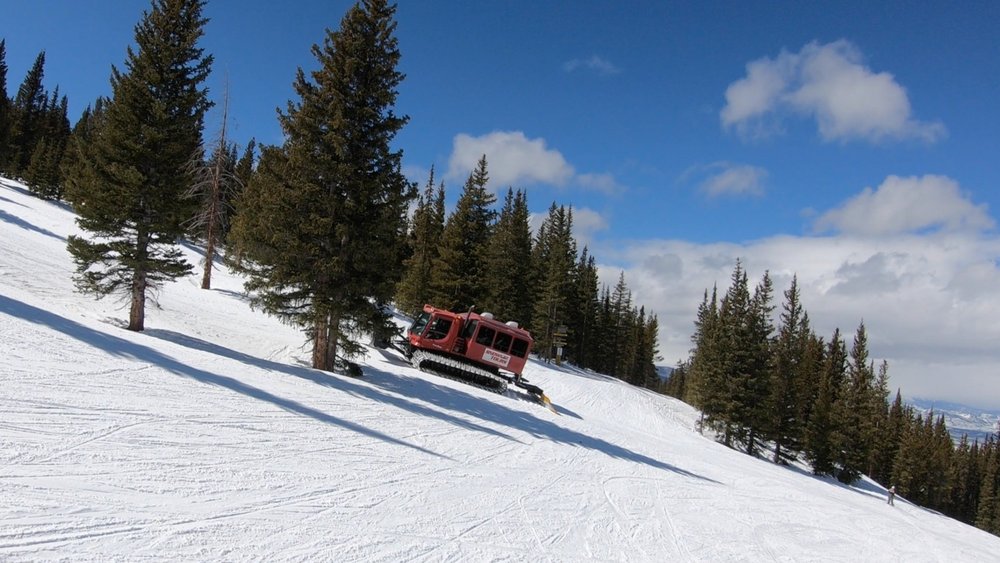
Snowcats
But in certain cases, ski resorts face terrain where operating a lift or railway does not make practical or financial sense—but they still want to offer a way to transport guests uphill. That’s where snowcats come in. While primarily designed for grooming ski slopes, snowcats are also used as a specialized form of uphill transportation in certain scenarios. Cat skiing operations, typically found in remote resort areas or organized as guided experiences in true backcountry areas, transport small groups of skiers and snowboarders to seldom tracked terrain that is otherwise inaccessible by traditional ski lifts. In rare cases, some ski resorts utilize snowcats as alternative transportation when lifts are closed due to mechanical issues, avalanche mitigation, or extreme weather.
Since most cat skiing operations rely on a single snowcat carrying just 5-15 passengers per trip, uphill capacity is by far the lowest of any type of ski resort transport, with untracked powder being a common sight at the top of these rides. Due to their high operating costs and extremely low capacity, resorts often charge an extra-cost add-on for guests to ride these cats, although this is not the case 100% of the time. If a snowcat isn’t at the loading area when they arrive, guests may have to wait quite a while to ride it.
While snowcats are far less efficient than traditional ski lifts and offer limited capacity per trip, they provide a rugged, adaptable solution for reaching terrain that would otherwise be off-limits without hiking—and often has some of the best powder that’s accessible in-bounds within the resort.
Final Thoughts
So that’s our comprehensive breakdown of every type of ski lift you’ll see on your next ski trip. From basic rope tows to engineering marvels, alpine transportation is almost as fascinating as skiing and riding themselves, with an almost unconscionable number of solutions developed over the past several decades. Next time you go on a ski vacation, we hope you’ll have plenty of fun thinking about why your resort decided on a specific lift in a certain place—and whether you think they made the right decision.
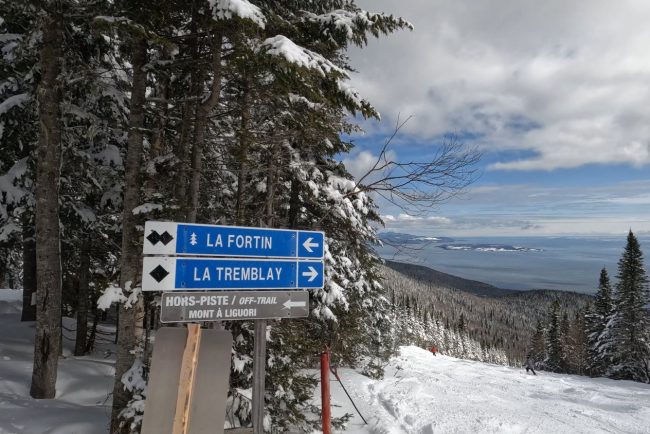
Ikon Pass Adds Le Massif de Charlevoix for 2025-26 Season
Le Massif de Charlevoix has become the third Eastern Canadian ski resort to join the Ikon Pass. Eastern Canada’s Le Massif de Charlevoix will be joining the Ikon Pass for the first time for the 2025-26 season, according to a press release put […]
Mountain
Le Massif de Charlevoix has become the third Eastern Canadian ski resort to join the Ikon Pass.
Eastern Canada’s Le Massif de Charlevoix will be joining the Ikon Pass for the first time for the 2025-26 season, according to a press release put out by Ikon’s owner Alterra this week. This Quebec ski resort, which directly overlooks the St. Lawrence River, will become the second provincial ski resort to join Ikon following Tremblant. The resort will also join the much smaller Blue Mountain, Ontario in Ikon’s Eastern Canada suite.
Full Ikon Pass holders will have access to seven days at the mountain, while Ikon Base and Base Plus Passholders will have access to five days with holiday blackouts. The resort will also be included on the 2, 3, and 4-day Ikon Session Pass products.
The Ikon Pass is a multi-resort ski pass that gives access to dozens of destinations around the world. You can learn more about the Ikon Pass suite and how it stacks up to the similar Epic Pass here.
Our Take
In Quebec, the Epic and Ikon Passes have historically put up reasonable fights against one another, although we’d argue Ikon has always had the slight upper hand. Ikon offers unlimited access to Tremblant, which is one of our highest-rated resorts in the region. However, the full Epic Pass offers limited access to Mont-Sainte-Anne and Stoneham, the former of which is a quite competitive regional option as well (Stoneham is a bit smaller and less competitive). That said, the Epic Local Pass does not include access to either mountain.
But while it was already arguably the stronger choice of the two, the addition of Le Massif scores Ikon a big win for East Coast skiing and riding. Thanks to its breathtaking views and well-rounded footprint, Le Massif is our top-ranked ski resort East of the Mississippi. Its presence on the pass is likely to attract more folks in the Quebec City region, who are less than an hour away from the resort—and may have previously leaned towards the full Epic Pass thanks to Mont-Saint-Anne’s proximity to that city. It’s also entirely possible some Quebec City residents move to Ikon and away from the two-day Mountain Collective Pass, which was previously the only multi-resort pass product to include Le Massif.
However, some questions remain about the impact on crowding at Le Massif. The resort has historically been one of the less crowded East Coast resorts, with lift ticket caps playing a role there. Since reservations will not be required for Ikon Pass holders, some locals may be left wondering whether the resort could see a substantial increase in traffic next winter.
That all being said, Le Massif is likely protected somewhat from a deluge of new crowds thanks to its incredibly out-of-the-way location. While it’s quite close to Quebec City, the resort is annoyingly far from most other major Northeast metropolitan areas, including Boston, New York, and to a certain extent, even Montreal. From those cities, Ikon Pass holders have access to much more convenient mountains that offer experiences that are almost as good (or, depending on snow conditions, even better).
We’ll be keeping a very close eye on how the new Ikon access impacts Le Massif—and the rest of the East Coast—over the upcoming season.
Considering a trip to Eastern Canada next season? Check out our comprehensive Le Massif de Charlevoix and Tremblant mountain reviews.
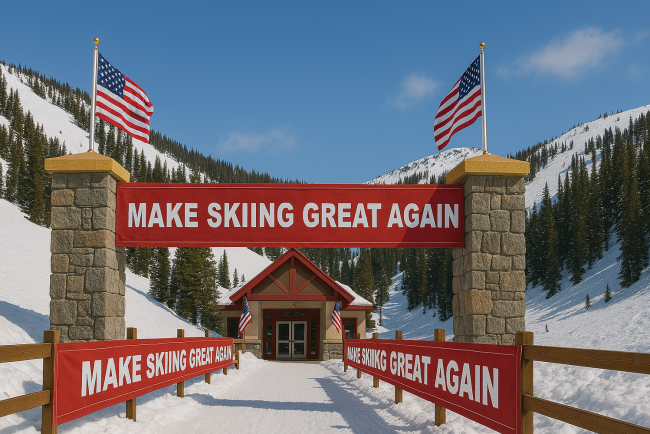
Trump Organization Acquires Vail Resorts, Rebrands with “MASA” Slogan and Trump Steaks in Cafeterias
If all goes according to plan, ski resorts across the U.S. and Canada will be getting a lot more… Great. In a move that has sent shockwaves across the ski industry, the Trump Organization has announced its acquisition of Vail Resorts, marking the […]
Mountain
If all goes according to plan, ski resorts across the U.S. and Canada will be getting a lot more… Great.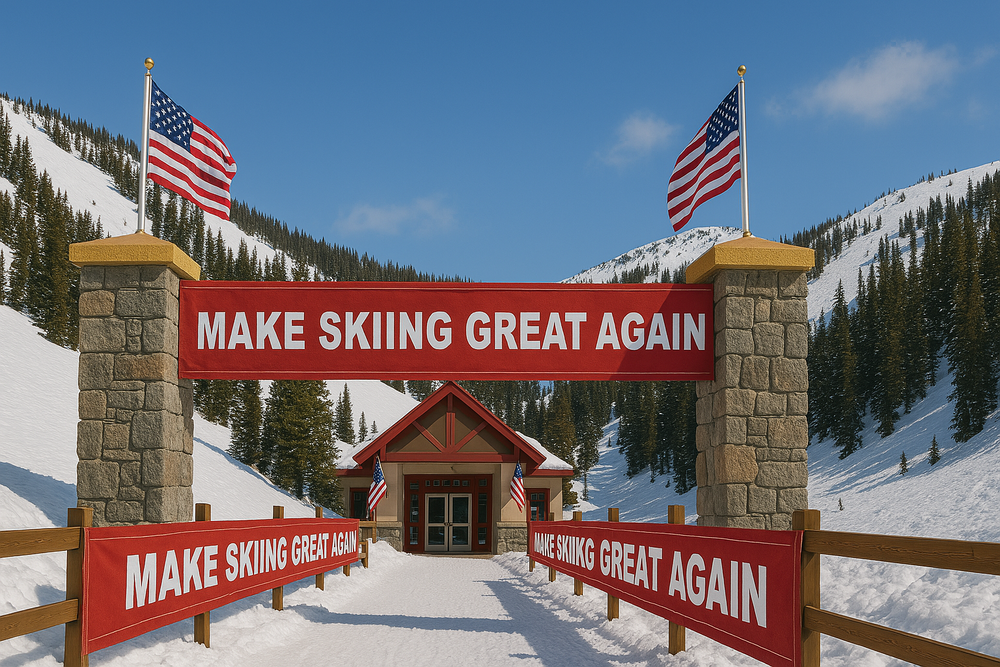
In a move that has sent shockwaves across the ski industry, the Trump Organization has announced its acquisition of Vail Resorts, marking the biggest shakeup in ski resort ownership since the invention of the Epic Pass—or, as it’s now being called, the “Most Epic Pass, Possibly Ever.”
As part of the rebrand, several iconic Vail-owned mountains are undergoing immediate name changes to better reflect the new ownership. Vail itself will become “Trump Mountain Colorado,” while Park City has been rebranded “Trump Utah: The Greatest Ski Resort In The West (According To Many People).” Whistler Blackcomb will now operate under the name “Trump International Resort & Golf Club: Glacier Edition,” despite having no golf course and being located in Canada.
Cafeterias across the newly rebranded resorts will now feature exclusive Trump-branded food options, including:
-
Trump Steaks (“The World’s Most Presidential Ribeye”)
-
Melania’s Signature Goulash (available only in Whistler, for legal reasons)
-
Gold Leaf Nachos (only at Trump Mountain Colorado, market price)
Additionally, a new slogan will be prominently featured across all resort signage, trail maps, and grooming reports: “MASA — Make America Ski Again.” This replaces the former slogan, “Experience the Epic,” which executives deemed “low energy.”
Sources tell us that all lift towers will soon be painted gold, and all blue square trails will be renamed “Red Trails,” due to branding conflicts. In a bold media policy shift, press credentials will now only be issued to journalists who agree to adhere to the new branding—a change justified by “correcting the color bias” in ski trail nomenclature.
And in what some are calling a “preemptive hostile ski resort merger”, insiders report that the Trump Organization is eyeing Deer Valley for annexation, citing the existence of a trail named “Trump” as “clear legal precedent” for eminent domain. Lawyers familiar with the case declined to comment, though one was overheard asking if “this is really happening” multiple times.
Our Take
While some skiers and riders might be alarmed by the sudden transformation of their favorite mountains into politically branded snow playgrounds, it’s not the first time the ski industry has flirted with… bold decisions. From the rise of resort consolidation to $30 parking fees at the base of a three-chairlift hill, nothing should surprise us anymore. That said, this move cranks the dial up to 11.
On the one hand, the Trump Organization has a knack for branding, real estate, and lavish experiences—three things the modern ski industry seems increasingly obsessed with. Expect high-end luxury upgrades, more exclusivity, and potentially a golden gondola or two. On the other hand, the MASA slogan might alienate the more neutral or apolitical nature of the ski world, where the only red vs. blue debate should be about trail difficulty, not voter affiliation.
One industry insider noted: “If you thought the Epic vs. Ikon discourse was heated, just wait until this season’s parking lot arguments.”
Ultimately, whether this is the greatest business move in ski history remains to be seen. But one thing’s for sure: the slopes just got a whole lot more… Trumped.
Editor’s Note: If you’ve read this far and haven’t realized it’s April 1st, we hope you’ve at least enjoyed your brief descent into alt-ski reality. No, the Trump Organization has not acquired Vail Resorts. Yet.
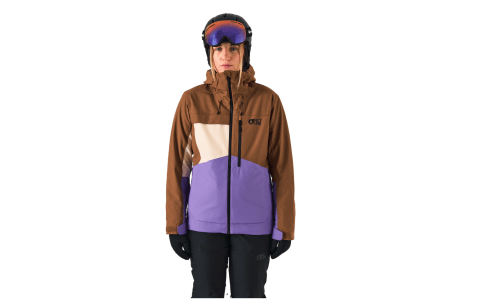
SAVE 40% – ELLIS BRIGHAM SALE NOW ON
Prepare to hit the slopes in style and save big with Ellis Brigham’s end-of-season sale! With up to 40% off selected snowsports clothing and equipment, this is your chance to snag top-quality winter gear for less. Whether you’re an experienced skier or snowboarder, or simply […]
Ski BootPrepare to hit the slopes in style and save big with Ellis Brigham’s end-of-season sale! With up to 40% off selected snowsports clothing and equipment, this is your chance to snag top-quality winter gear for less. Whether you’re an experienced skier or snowboarder, or simply love the great outdoors, there’s something for everyone. Plus, enjoy free UK delivery on orders over £80, click and collect to your nearest store, and free in-store ski boot fitting appointments. Don’t miss out—shop before the snow melts!
CLOTHING DEALS
Picture – Women’s Seen Jacket

This is the piste-perfect style you’ve been waiting for! A blend of functionality and sleek design, the Picture Women’s Seen Jacket ensures maximum comfort and performance on the slopes.
- Was: £299
- Now: £209.30
Buy now
Norrona – Lofoten GORE-TEX 3L Jacket
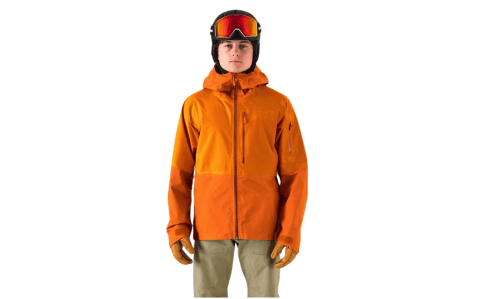
Protect yourself from the harshest mountain conditions with Norrona’s iconic GORE-TEX 3L Jacket. High durability, breathability, and ultimate foul-weather protection in one sleek package!
- Was: £549
- Now: £439.20
Buy now
Descente – Women’s Iris FF Jacket
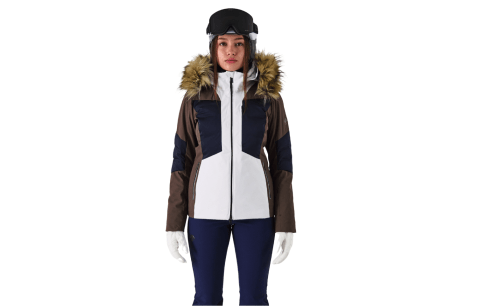
Luxurious winter warmth meets style. With low-bulk Thinsulate insulation and a plush faux fur-trimmed hood, this jacket is perfect for fashion-forward explorers.
- Was: £739
- Now: £517.30
Buy now
The North Face – Girls’ Freedom Insulated Jacket
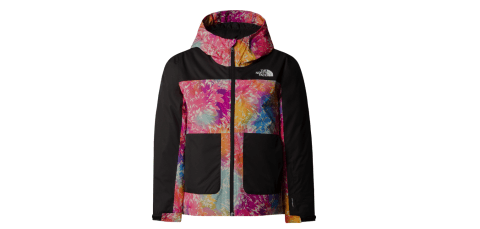
Designed for protection and versatility, this jacket transitions seamlessly from the slopes to snowy days at home. A must-have for your little shredder!
- Was: £150
- Now: £120
Buy now
Men’s Untracked GORE-TEX 3L Jacket
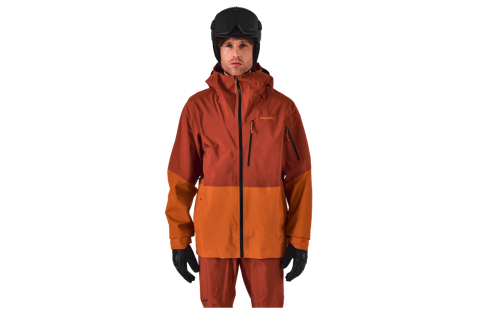
Perfectly engineered for high-mountain skiing, this jacket delivers unbeatable weather protection, breathability, and ultimate durability.
- Was: £639
- Now: £440
Buy now
Norrona – Lofoten GORE-TEX Insulated Jacket
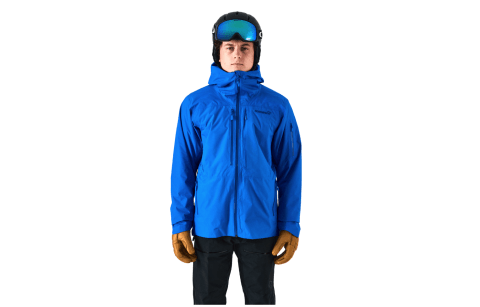
Norrona’s best-selling insulated jacket ensures warmth and comfort whether you’re skiing resorts or venturing off-piste. No adventure too cold for this winter essential!
- Was: £495
- Now: £396
Buy now
Goldbergh – Women’s Bea Jacket
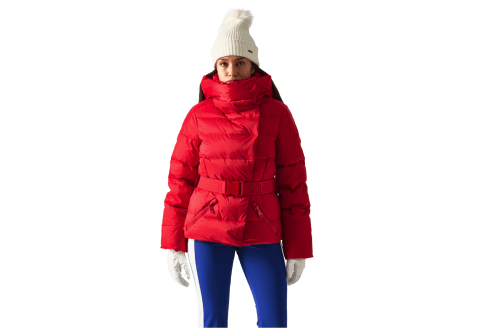
Make a statement with the lavish Women’s Bea Jacket. With Goose Down insulation and a stylish belted parka fit, it’s perfect for both the slopes and après-ski.
- Was: £679
- Now: £475
Buy now
Schöffel – Women’s Safuna Jacket
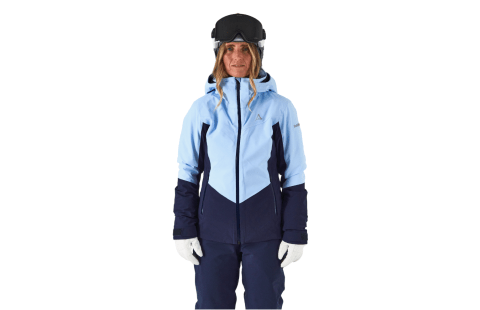
Sophistication, stretch, and weather protection combine in Schöffel’s Safuna Jacket, tailored for elite piste performance.
- Was: £495
- Now: £396
Buy now
Norrona – Women’s Femund Warm 3 Fleece
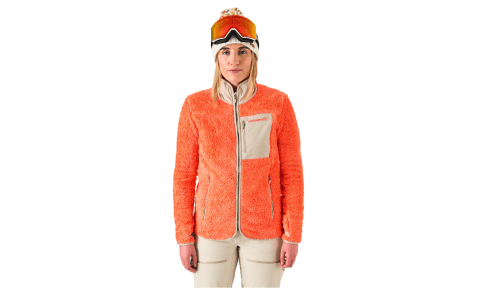
Warmth meets retro charm in this cosy fleece, perfect for layering up or wearing solo for any outdoor pursuit.
- Was: £179
- Now: £143.20
Buy now
Spyder – Men’s Titan Jacket
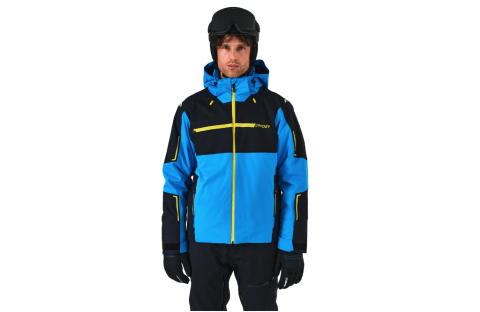
Classic alpine styling meets modern functionality. This lightweight, waterproof jacket is built for performance and comfort on every piste outing.
- Was: £529
- Now: £423
Buy now
EQUIPMENT OFFERS
Salomon – Addikt Pro Skis
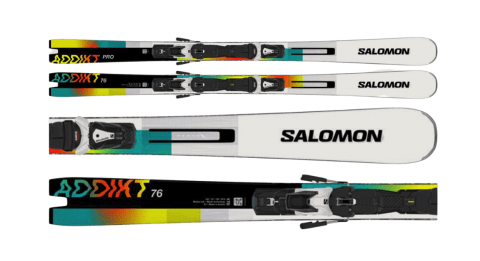
Unleash your inner piste-ripping hero! These skis deliver radical performance and unmatched fun.
- Was: £780
- Now: £624
Buy now
Smith Method Pro Helmet
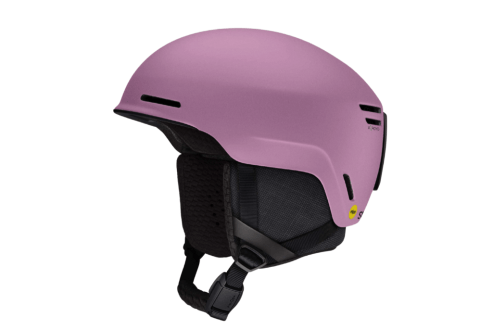
Lightweight and packed with features, this helmet prioritises safety and comfort as you explore every corner of the mountain.
- Was: £170
- Now: £136
Buy now
Nordica – Women’s Belle DC 72 Skis

Ellis Brigham’s Women’s Piste Ski of the Year! These high-performance skis ensure smooth, confident runs, no matter your pace.
- Was: £580
- Now: £406
Buy now
Atomic – Women’s Hawx Ultra XTD Ski Boots
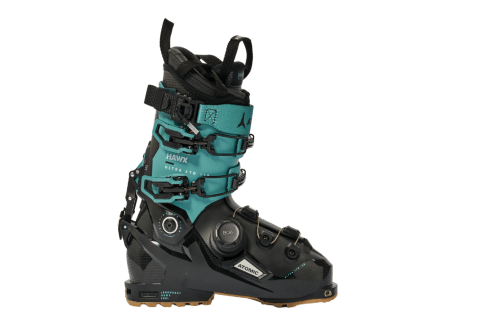
Blending freeride mastery with uphill capability, these boots are your ideal companion for mixed-terrain adventures.
- Was: £670
- Now: £536
Buy now
Dragon – Women’s NFX2 Goggles
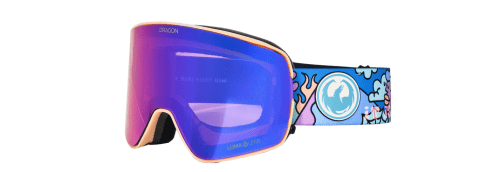
These goggles are a favourite of athletes and Ellis Brigham staff alike, thanks to their clean design and exceptional lens clarity.
- Was: £184
- Now: £147.20
Buy now
DON’T MISS OUT!
With these incredible savings, it’s time to update your snowsports wardrobe and gear up for your next adventure. Browse the full sale collection and shop your favourites while stocks last!
Shop the sale now
We regularly showcase the latest gear on our YouTube channel. Dive into our Gear Playlist for in-depth reviews. For the latest snow forecasts, updates on top skiing destinations, and comprehensive gear evaluations, tune in to our podcast, “The Whiteout.” You can find it on Apple, Spotify, Podcasts, or by searching “The White Out” in your favourite podcast directory.
The post SAVE 40% – ELLIS BRIGHAM SALE NOW ON appeared first on InTheSnow.
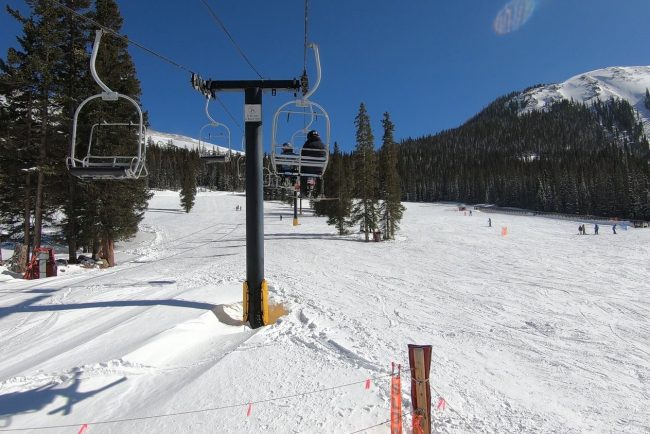
Why No New U.S. Ski Resorts Have Been Built in the Past 40 Years
The United States is home to over 480 ski resorts, offering mountains of various locations, shapes, and sizes. What you may not realize, though, is that essentially all of these resorts were built over five decades ago. But wait a minute—skiing and snowboarding have exploded […]
MountainThe United States is home to over 480 ski resorts, offering mountains of various locations, shapes, and sizes. What you may not realize, though, is that essentially all of these resorts were built over five decades ago.
But wait a minute—skiing and snowboarding have exploded in growth in the 21st century, so why haven’t there been any serious new resorts since the 1980s? And has the industry changed enough in recent years that this trend might reverse itself? In this video, we’ll cover the compounding barrage of factors that made new ski resort development essentially impossible starting in the early 1970s, and then we’ll go through the attempts since then and whether they’ve made any headway.
Part 1: The Original Growth of Skiing in America
But before we take a look at what stopped ski resorts from being built in America, we have to cover how their development started in the first place.
Skiing in America began as a niche activity introduced by Scandinavian immigrants in the late 19th and early 20th centuries. Early adopters practiced the sport in snowy regions like the Northeast and the Sierra Nevada, where rudimentary skiing facilities began to appear.
Woodstock, Vermont, became a pioneer for American skiing, hosting one of the first ski clubs in the country in 1903. Several other small hills spurred up in the following years, including Colorado’s Howelsen Hill, which is the oldest continuously operating U.S. ski resort today. Skiers relied on basic rope tows and natural snow, making the experience both rustic and labor-intensive. And while a few names that we all know today emerged by the 1930s, including Stowe, Sun Valley, and Alta, skiing remained a small-scale pastime pursued by local communities rather than a mainstream recreational activity.
The United States’ involvement in World War II was a turning point for skiing’s popularity. The creation of the 10th Mountain Division, an elite group of mountain troops trained to fight in snowy terrain, helped elevate skiing from a niche hobby to a widely recognized activity. Soldiers trained in Camp Hale, Colorado, which is due south of present-day Vail, where they honed their skills in skiing, mountaineering, and wartime survival.
After the war, many veterans of the 10th Mountain Division became ambassadors for the sport, founding or managing ski resorts across the country. Resorts like Aspen and Arapahoe Basin owe much of their early success to these veterans’ passion and expertise. Furthermore, wartime infrastructure projects—such as mountain roads and railways—helped make once-remote mountain regions accessible for future resort development.
Other economic factors helped too. In the late 1940s and early 1950s, the post-war boom gave rise to a new American middle class with more disposable income and leisure time. While skiing was once considered a sport for elites, it now began to attract a broader audience.
As skiing grew in popularity in the 1950s, the mountains kept getting easier and easier to reach. Improved highways and the growing popularity of air travel made it easier for people to reach remote mountain destinations that were previously way too impractical to get to. At the same time, ski technology evolved rapidly. Innovations in ski lifts, snow grooming equipment, and safer ski gear transformed skiing into a more accessible and enjoyable activity. Chairlifts became the new norm, whereas in decades past, visiting a resort had involved rope tows and surface lifts. This made it much more practical to build bigger and taller resorts than in years’ past. Resorts including Mammoth, Squaw Valley (now Palisades Tahoe), and Taos Ski Valley emerged as leading destinations during this time, drawing both seasoned skiers and beginners alike.
By the 1960s, the ski industry was booming. This period saw an explosion of resort development, driven not only by skiing’s popularity but also by lucrative real estate opportunities. Many resorts were built as part of broader ventures, with developers selling condominiums and vacation homes alongside ski passes.
Public land leases also made large-scale ski resort construction feasible. The Forest Service worked with developers to open vast tracts of land for skiing, leading to the creation of resorts that are well-known today like Vail, Park City, and Jackson Hole. A whopping 118 U.S. ski resorts that are still operating today opened in the 1960s, nearly doubling the amount from the previous decade.
But just as fast as it exploded in growth, essentially all major ski resort development came to a halt with what felt like the snap of a finger. After six notable debuts in 1972 and 1973, serious future developments were suddenly nowhere to be found.
Due to increased popularity, innovations in technology, and development-friendly government agencies, many ski areas opened in the 1950’s and 1960’s.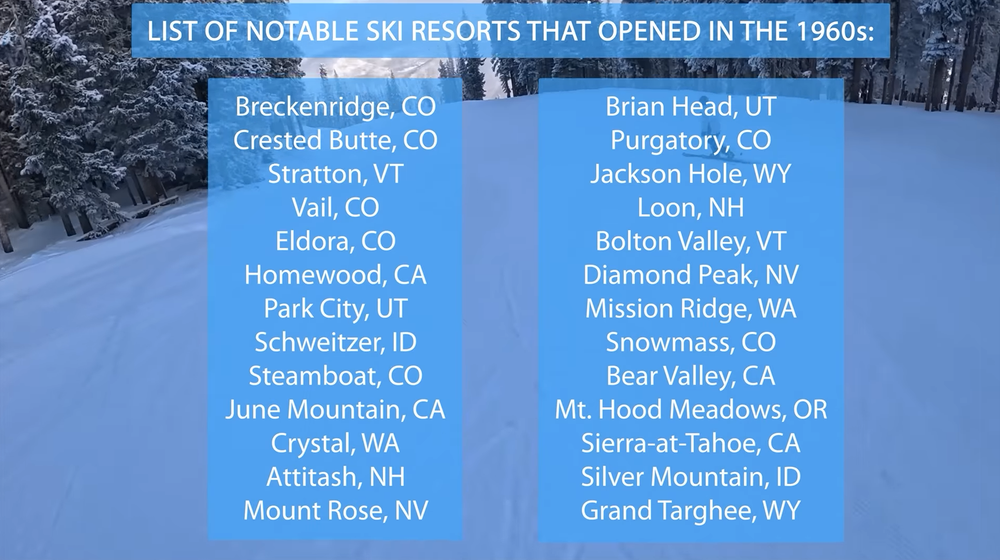
Part 2: Saturation of Prime Locations
In the early 1970s, new ski resort development slowed to a crawl, with an almost overwhelming compound of factors driving the change. The first and most obvious one of these was the saturation of conspicuously prime locations following the rush to build in the two decades prior.
By 1973, a lot of the best locations for ski resort development in the U.S. had already been claimed. The previous decades capitalized on accessible mountain ranges with favorable snowfall, suitable terrain, and proximity to population centers. Prime areas in Colorado, Utah, California, and Vermont had long been developed, leaving fewer viable locations for new large-scale resorts.
One factor was the slowdown in highway construction during this time period. The resorts built during the mid-20th century were strategically positioned to take advantage of infrastructure like highways and public lands, and with fewer new interstates being built, much of the remaining undeveloped terrain was either too remote or lacked the consistent snowfall needed to sustain a profitable operation.
Many of the best locations for a ski area based on snowfall, terrain layout, and public access had already been developed by the 1970s.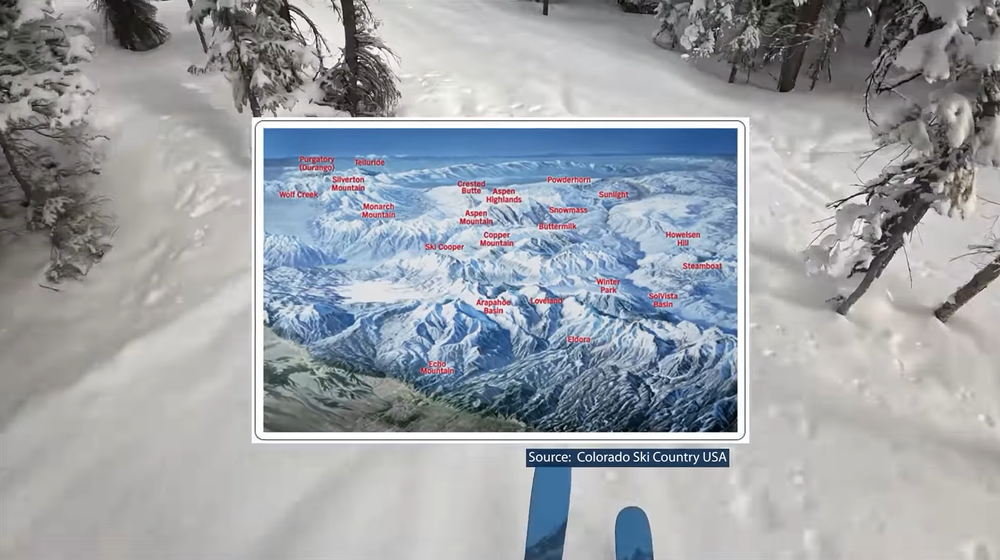
Part 3: Environmental Concerns and New Regulations
But while the saturation of the best locations helped slow down resort development, it was nothing compared to the slate of environmental regulations that appeared around this time. In the late 1960s, public opposition to large-scale construction on public lands increased dramatically. Many of the largest ski resorts in the U.S. lease land from the U.S. Forest Service, but obtaining new leases for development suddenly became exceedingly difficult.
A major turning point was the enactment of the National Environmental Policy Act (NEPA) in 1970. NEPA introduced stringent environmental review processes for projects involving federal lands or funding, requiring detailed assessments and approval from numerous agencies. While the act was incredibly impactful in its aim to safeguard natural resources, the additional layers of bureaucracy—such as Environmental Impact Statements (EIS) and public comment periods—made it far more challenging and time-consuming to develop new ski resorts. Projects that previously required a single permit might now need approval from dozens of agencies, ranging from the Forest Service to the Environmental Protection Agency. For developers, this created significant delays and increased costs, often derailing projects entirely.
Additionally, laws such as the Clean Water Act (CWA) of 1972, the Endangered Species Act (ESA) of 1973, and the National Forest Management Act (NFMA) of 1976 further complicated resort development. The CWA restricted alterations to rivers, streams, and wetlands, making it difficult to construct resort infrastructure such as roads, snowmaking reservoirs, and base villages. The ESA provided strict protections for threatened and endangered species, meaning any proposed ski area had to prove it would not disrupt critical habitats. This was especially problematic for developments in alpine environments, where species such as the Canada lynx and the spotted owl reside. Meanwhile, the NFMA required the U.S. Forest Service to create comprehensive land management plans, which, on the whole, placed greater emphasis on conservation and recreational balance than the more development-friendly attitudes of years’ past. Given how many resorts had been built through public land leases, this act had huge implications for future large-scale ski area developments.
The 1970s and 1980s also saw a rise in citizen activism and environmental litigation. As new regulations empowered environmental groups, legal challenges under these laws became common, often resulting in years-long court battles that delayed or entirely halted new ski resort projects, even if they’d made it past initial approvals processes. High-profile lawsuits set legal precedents that strengthened environmental protections and expanded the scope of regulations, making it even harder for developers to gain approvals
Beyond federal regulations, state and local environmental laws further restricted resort development. California, in particular, became one of the most difficult places to build a new ski resort due to the California Environmental Quality Act (CEQA), which was enacted in 1970. CEQA required environmental reviews similar to NEPA but applied at the state level, adding another layer of bureaucracy. Any ski resort proposal in California had to go through extensive environmental assessments, undergo public hearings, and withstand potential litigation from environmental groups. The process was often prohibitively expensive and time-consuming, deterring developers from even attempting new projects.
These combined legal and regulatory challenges created a near-impossible landscape for new ski resorts to be developed on public land.
New government regulations, such as the Clean Water Act, sought to protect natural resources. But they made ski area development more convoluted.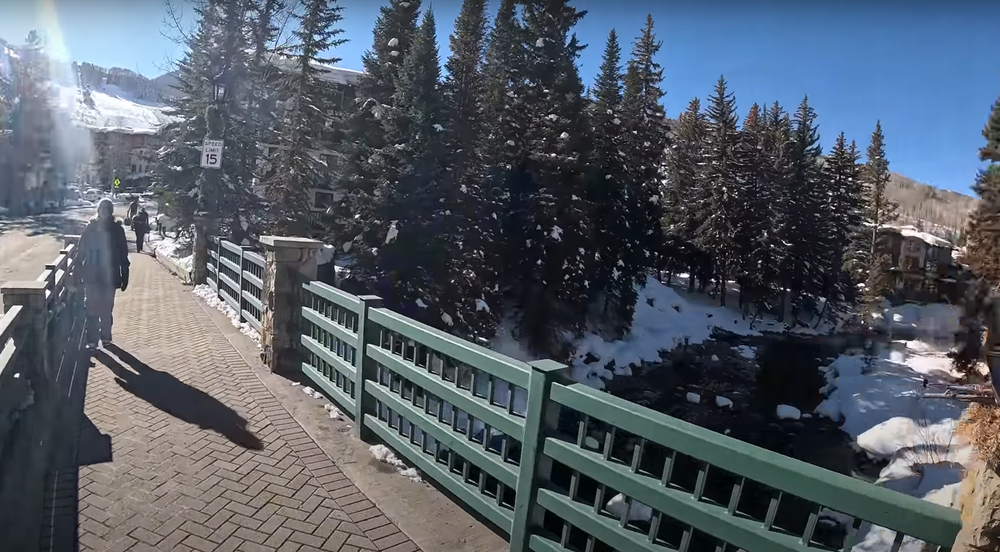
Part 4: Economic Pressures
But not every ski resort project could be killed by environmental opposition—after all, some privately-owned land parcels were still theoretically feasible to develop, and at least some public lands did have the right topography to pass all the regulatory hurdles. But it wasn’t just the new environmental regulations that were making new ski resort projects harder to justify. By the 1970s, the U.S. economy was not exactly in the place to support developments related to any sort of leisure activities.
Building a ski resort from scratch was (and still is) a monumental financial undertaking, and in the post-1970s economy, the return on investment was far from guaranteed. The cost of constructing ski infrastructure—including lifts, snowmaking systems, lodges, and access roads, among other things—could easily reach hundreds of millions of dollars. Additionally, resorts required expensive year-round maintenance, staffing, and marketing efforts to attract visitors and remain competitive. Even if a proposed ski area managed to get through the rest of the hurdles, securing financing and attracting investors became much more difficult.
During the mid-20th century, many ski resorts were funded as part of broader real estate ventures, with developers relying on the sale of vacation homes, condominiums, and commercial properties to subsidize ski operations. However, by the 1970s, rising interest rates and financial market instability made real estate-driven developments riskier. Without a guaranteed stream of revenue from real estate sales, developers faced an uphill battle in securing financing for new projects.
Furthermore, the ski industry began experiencing rising operational costs, including labor shortages, increasing insurance expenses, and the growing reliance on snowmaking to combat inconsistent snowfall. Snowmaking technology had improved dramatically since the early days of skiing, but the costs of installation and operation remained high. The 1970s and 80s were well before ski resorts seriously considered climate change in their planning and operations, but mountains still needed substantial infrastructure, including reservoirs, pumps, and energy-intensive snow guns, to ensure reliable conditions throughout the season. These costs made it even more difficult to justify building a new resort in an uncertain economic climate.
Significant lift and terrain enhancements have made the U.S. destination ski area landscape much more cutthroat in the past forty years.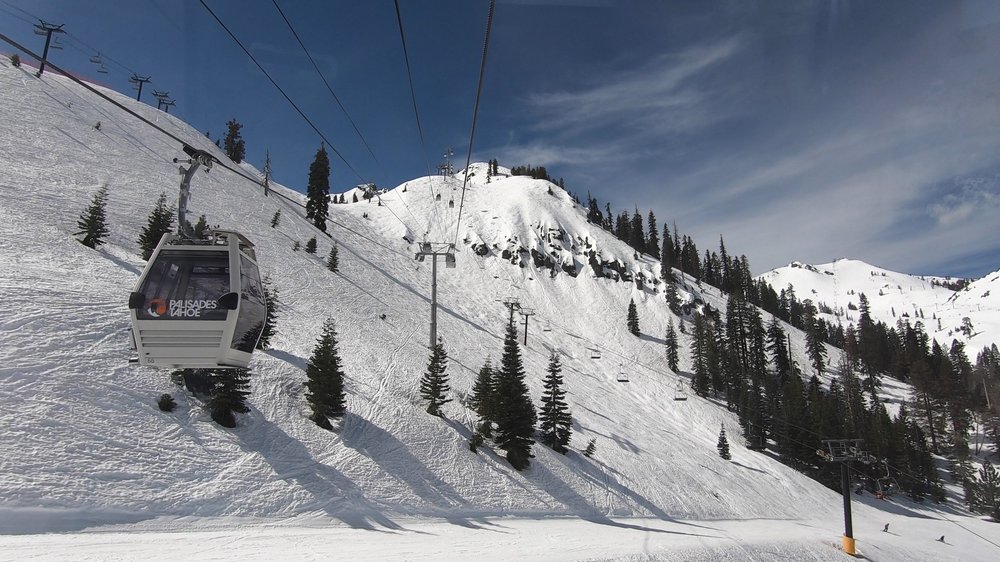
Part 5: Expanding Existing Resorts As A Feasible Alternative
But okay, the U.S. economy didn’t stay bad forever, and by the 1980s, it recovered significantly. So why didn’t new major ski resorts get built at that point? Well, ski companies and investors recognized that expanding or improving existing resorts was far more financially viable than building new ones. Established resorts already had roads, lift networks, and lodging, reducing the need for major upfront capital investment. By upgrading lifts, expanding terrain, or adding new amenities, resorts could attract more visitors without the massive financial risk of creating a new ski area from scratch. In addition, working within pre-approved footprints saved them the regulatory headaches of trying to build something from scratch, as many resorts were permitted to operate on significantly more terrain than they actively used.
This move to intra-resort development has had a surprisingly large impact on today’s ski scene. Since 1972, the typical destination ski resort has grown exponentially in size, with many of the resort areas you know and love today having opened in the 80s, 90s, and 2000s—despite the original resort itself opening decades earlier. Not to mention, the uphill ride experience has been thoroughly redesigned at essentially every serious destination since the 1970s; every single high-speed chairlift at a North American resort has been built in 1981 or later, and the same goes for most gondolas and aerial tramways. Examples of substantial resort expansions in just the past 15 years include Park City’s connection to Canyons Resort, Breckenridge’s Peak 6 area, and Steamboat’s Mahogany Ridge and Fish Creek Canyon zones. So while we haven’t exactly seen new destinations come into play over the past four decades, that’s not to say the resort experience hasn’t gotten a whole lot better for consumers.
The explosive inward growth at destination ski resorts has also introduced one more significant factor that impedes destination resort development—for any potential newcomers, existing resorts are now far more competitive than they were in the 1960s and 70s. Any newcomer would have to be exponentially larger, with modern lifts and world-class infrastructure, just to have a shot at drawing true destination visitors. Even ignoring the financial and regulatory barriers we’ve already discussed, the sheer scale that’s now required to build a competitive resort from scratch today makes the idea seem a lot more far-fetched than it would have been half a century ago.
Since the 1960’s many of the most popular ski areas across the country have greatly expanded their skiable terrain, such as at Breckenridge.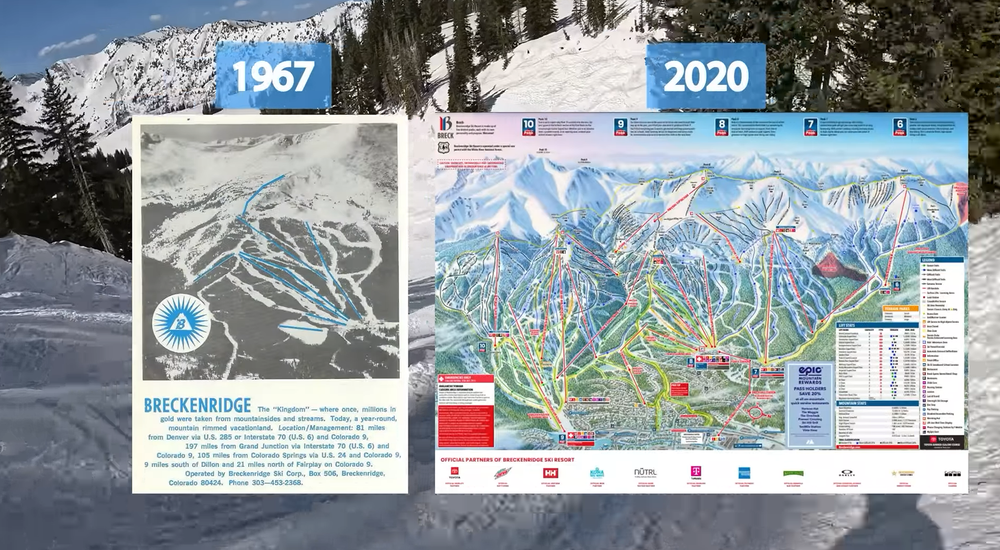
Part 6: The Two Exceptions to the Post-1973 Extinction: Beaver Creek and Deer Valley
Despite the near-total halt in new ski resort development after 1973, Colorado’s Beaver Creek and Utah’s Deer Valley stand out as the two notable exceptions, with Beaver Creek opening in 1980 and Deer Valley opening in 1981. Their success can be attributed to a barrage of incredibly favorable circumstances.
First off, both resorts were backed by experienced hospitality operators with political acumen. This helped them navigate the permitting processes despite increasing regulations. Additionally, both mountains were also uniquely set up to leverage real estate development as a revenue stream; this model had become riskier for other new resort proposals, especially with the economic downturn of the 70s, but it was still viable in premium, high-demand locations. Combined with the experience of their project leaders, this factor made it much less likely for these resort projects to lose investor funding. Finally, both mountains made it to the approval stage at what could have literally been the last minute. In the case of Beaver Creek, the project was approved by the Forest Service just days before a new governor took office—one who had expressed his strong opposition to the ski area’s permit approval and new ski resort construction in general. Also, these two projects were already in motion before certain legal cases made the development landscape even more complex on the federal level.
So Beaver Creek and Deer Valley were able to squeeze their way into existence, getting us to the roster of destination U.S. ski resorts we still know today exactly 44 years ago.
The last two major resorts to come onto the US Ski scene were Utah’s Deer Valley, and Colorado’s Beaver Creek. They both had some incredibly favorable circumstances to push their development past the many challenges.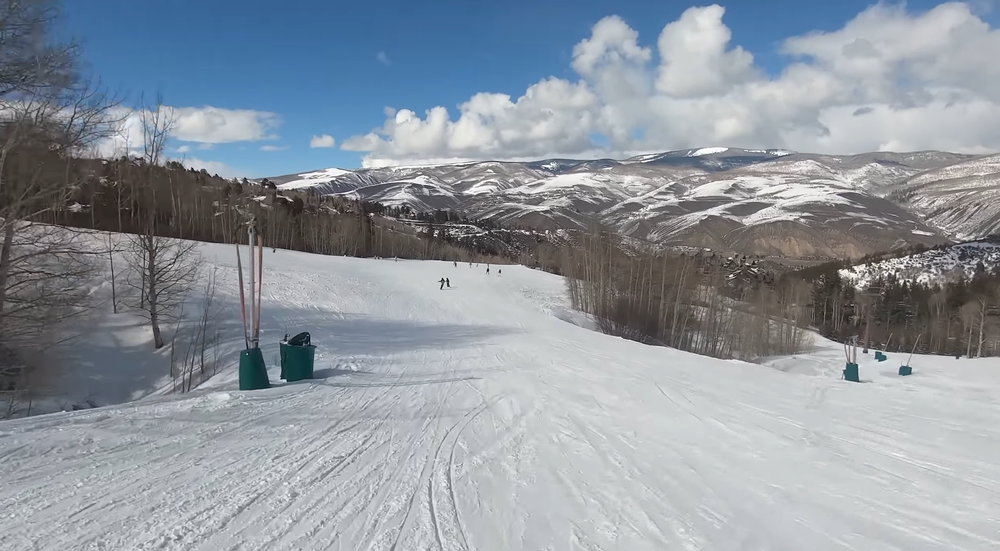
Part 7: Post-1981 Attempts at New Resort Development
So has anyone actually attempted to build a new large-scale ski resort since 1981? Well, while no new true destination ski resorts have opened in the U.S. since that year, several developers have attempted to end the development drought. However, the majority of these efforts have either failed spectacularly or faced significant setbacks.
Perhaps the best known failed ski resort project is that of the Disney Corporation. Originally planned for the Mineral King Valley in California, the resort faced intense environmental lawsuits and regulatory roadblocks, leading to its cancellation around the time the last new big ski resorts were able to open in the United States. That complicated future resort development was actually based on this plan. Disney tried again with another resort at Independence Lake in the late 1970s, but by that point, it was too late.
Similarly, Catamount, a proposed ski resort in Colorado near Steamboat Springs, failed despite two development attempts—one in the mid-1970s, and a second in the 1990s. Originally envisioned as a new destination resort that could be used as a venue for the 1976 Winter Olympics, the project went under after its developers went bankrupt in the wake of the declining economy. The plan was resurrected two decades later, and it actually received initial approval from the U.S. Forest Service after obtaining all necessary environmental permits. However, the project still faced local opposition due to its impact on housing, and developers eventually lost their financial backing for the project. The permit expired in 1998, and legislation has been introduced to turn this area into a federal wilderness area.
The most recent attempt at a new full-scale destination ski resort in the U.S. was Mayflower Resort in Utah. Located adjacent to Deer Valley, the project aimed to develop 3,700 acres of skiable terrain alongside a luxury real estate community. Mayflower was designed to follow a business strategy similar to Deer Valley’s when it first opened—prioritizing high-end lodging, capped skier numbers, and an emphasis on a premium experience.
However, as the project moved forward, Mayflower was absorbed into Deer Valley instead, effectively preventing it from becoming an independent resort. While the ski terrain itself is already in the process of being developed, it will not exist as its own distinct resort. This shift is just another example of how rather than creating new standalone resorts, developers are increasingly tying projects into existing ski infrastructure, reducing capital risk and regulatory hurdles.
Certain other developers decided to take other routes. One of the most interesting proposals in recent years was Bluebird Backcountry, a ski resort concept that opened in 2020 in Colorado. Unlike traditional ski resorts, Bluebird operated without chairlifts, groomed trails, or major permanent infrastructure, instead putting together a hike-only operation with designated skin tracks, avalanche-controlled terrain, and ski patrol support. However, despite a much easier environmental process than a traditional ski resort and strong community interest, Bluebird Backcountry struggled financially. For many people, it was hard to justify paying to earn their turns when they could just do the same for free in the true backcountry, and after three seasons of operation, Bluebird Backcountry announced its closure in 2023.
A few proposed resorts in the late 20th century, such as Lake Catamount near Steamboat, CO (pictured above), fell short of coming to reality.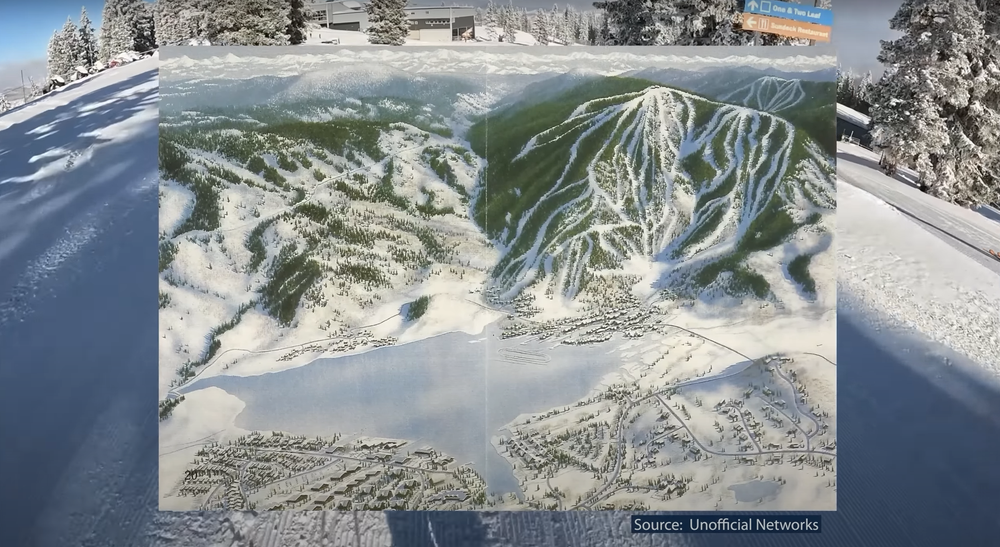
Part 8: “Non-Resorts” That Have Opened Since 1981
But while large-scale ski resort development has been rare since 1981, some smaller ski areas have opened successfully during this period. These areas typically differ from large destination resorts in their scale, target audience, and business models. They focus on serving local or regional communities rather than attracting national or international visitors—which, as we mentioned earlier, would be an absolutely astronomical financial undertaking at this point. While most of these resorts have been smaller, local hills, four of them especially stand out to us:
Southwest Colorado’s Silverton Mountain, which opened in 2001, succeeded by catering exclusively to expert skiers and backcountry enthusiasts. With just one chairlift and a guided-access model for most of the season, Silverton kept costs low while avoiding the regulatory and financial hurdles that have plagued larger projects.
Silverton’s business model also allowed it to avoid many of the economic and environmental pitfalls that might have doomed a traditional destination project. By keeping infrastructure minimal, the resort’s development costs were significantly lower than traditional ski areas. Additionally, its remote location in southern Colorado meant it was not competing directly with larger ski resorts for casual skiers. Instead, it carved out a niche for expert skiers seeking a raw, ungroomed experience, a market that was underserved at the time. Without large-scale road expansions, real estate developments, or major lift installations, Silverton was able to bypass some of the environmental battles that stopped other resort projects.
Another success story is Mount Shasta Ski Park, which opened in California in 1985. Unlike many failed projects, its development was brought about by a bittersweet circumstance: an older ski area had previously operated on Mount Shasta before being destroyed by an avalanche in the 1970s. While the ski slopes themselves would be developed in a new location, the historical presence of a resort in the vicinity allowed developers to build on an existing foundation rather than starting from scratch, significantly reducing infrastructure costs and regulatory barriers. The resort’s mid-sized, regional focus helped it avoid the financial risks of a full-scale destination resort. Additionally, strong community support played a role—locals had lost their original ski area and were eager for a replacement, making the project more politically viable.
Mount Bohemia was another minimalist ski resort that was able to overcome the odds to open in the early 2000s. Like Silverton, this Michigan resort focused on delivering a raw, backcountry-style skiing experience, only installing two lifts and catering specifically to advanced skiers and riders looking for steep, ungroomed terrain. Along with operating on private land, this helped it avoid many of the environmental and financial challenges that have plagued other new resort proposals.
Finally, we want to cover what was probably the last serious attempt to build a true independent destination ski area that actually made it to reality, though whether it truly succeeded is heavily up for debate. Idaho’s Tamarack Resort opened in 2004, marking probably the most ambitious ski resort development since the 1980s. The resort cleared regulatory hurdles largely by building on state-owned land rather than federal land, and it debuted with just over 1000 acres, making it bigger than most local hills, though still smaller than most destination resorts. In addition, the resort had an extensive base village planned out.
However, Tamarack may have bitten off more than it could chew. Financial difficulties led to bankruptcy in early 2008 forcing the resort to shut down entirely in 2009. When it reopened the following year, a bank foreclosed on one of its chairlifts, dramatically reducing its skiable terrain. Though Tamarack eventually replaced this lift and completed its base plaza years later, and Tamarack continues to tout ambitious expansion plans, its rocky financial history underscores why so few developers are eager to enter this space.
Lastly, a handful of truly high-end resorts that have opened since the 1980s—but you can’t go to them. The first major example of this model was Yellowstone Club in Montana, which opened in the late 1990s as the first true private ski resort in the U.S. Despite financial problems in the late 2000s, it still operates today. More recently, Wasatch Peaks Ranch in Utah, which first opened in 2021, has followed a similar approach, although it has faced legal battles from local residents. Beyond fully private resorts, exclusive snowcat-accessed operations have emerged as a high-end alternative to traditional ski areas. Operations like Eleven Experience’s Irwin Guides and Park City Powder Cats offer guided skiing on private land, providing a backcountry-style experience at an ultra-high price point without the need for costly lift infrastructure.
A few select resorts (including Tamarack, Idaho, pictured above) have been able to open in recent years, but they either serve specific niches, or have had shaky financial paths.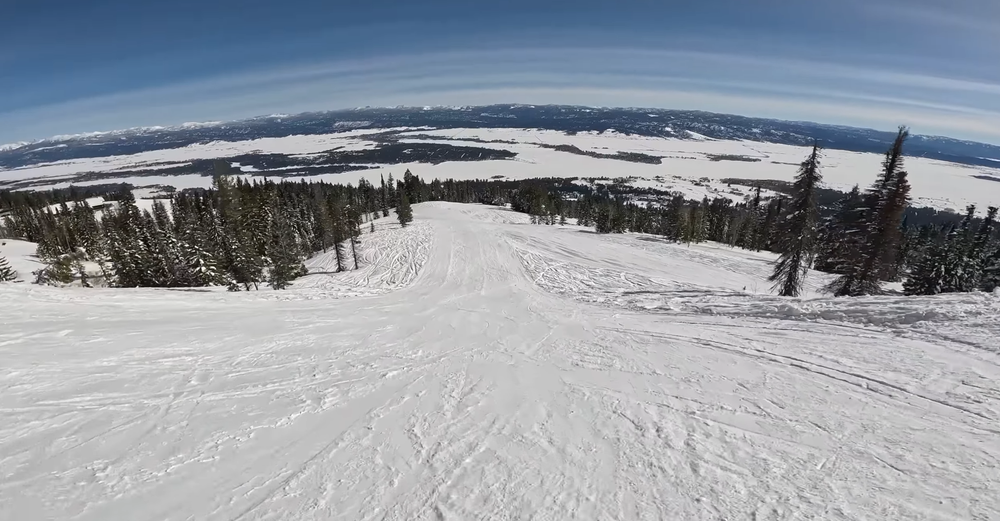
Final Thoughts
So a significant array of factors have kept any truly meaningful new resorts from making their way to reality in the United States over the past four decades. Sure, a few new areas have opened, but they’ve all been incredibly niche, locally-oriented, or not open to the public. The ski scene has still seen incredible improvements over the past four decades, with skiable terrain areas, resort infrastructure, and other creature comforts all experiencing substantial improvements in that timeframe. However, it seems pretty clear that the era of new resort mega development is over, and from economic, environmental, and competitive perspectives, it doesn’t seem like that’s likely to change any time soon.
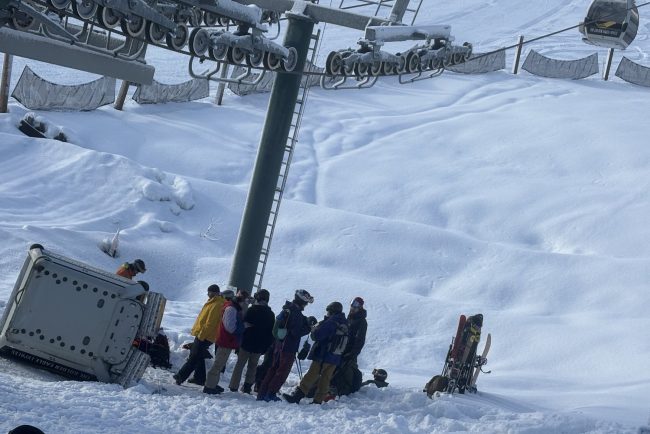
Are Ski Lift Accidents on the Rise? A Look at This Year’s Catastrophic Failures
When you get on a ski lift, the prospect of your chair falling off the line is a thing of nightmare fuel. But for those who’ve decided to ski or ride in North America this winter, catastrophic chairlift and gondola failures have seemingly surged […]
Mountain
When you get on a ski lift, the prospect of your chair falling off the line is a thing of nightmare fuel. But for those who’ve decided to ski or ride in North America this winter, catastrophic chairlift and gondola failures have seemingly surged at an alarming rate.
While lift accidents have historically been rare and isolated events, the 2024-25 season has seen several incidents make national headlines. And these failures haven’t been restricted to just one lift type, one company, or even one country.
So why have so many catastrophic lift failures happened in such a short period? In this piece, we’ll go through each of the major incidents this year, what exactly caused them, and whether there really has been an uptick in accidents this year, or whether we’ve all been victims of recency bias. Let’s jump right into it.
The detached chair at Montana Snowbowl on December 15, 2024. Source: KPAX | PJ Neary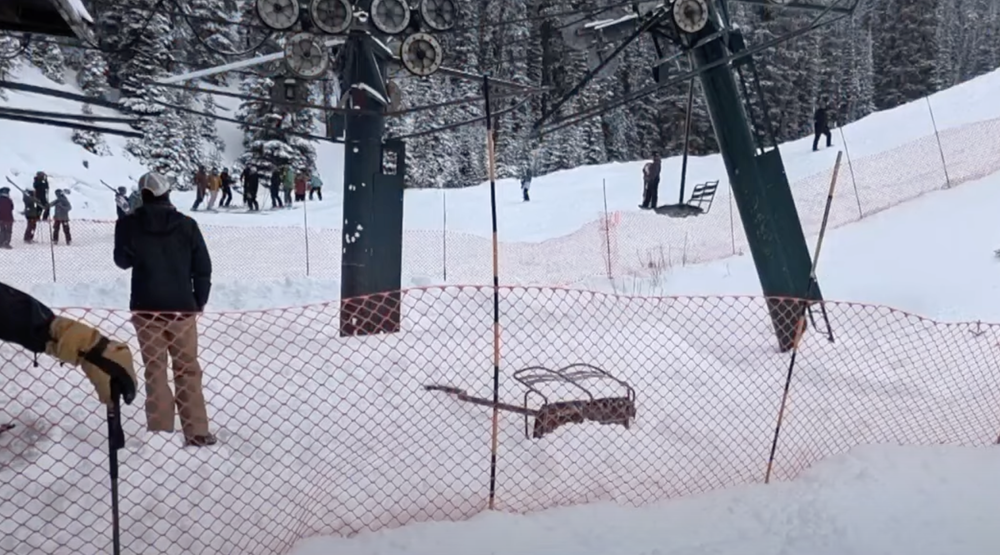
Incident #1: Montana Snowbowl LaVelle Creek Chair
The first serious incident of the 2024-25 season happened at a resort that many of you have probably never heard of. In December 2024, Montana Snowbowl experienced a significant incident involving the LaVelle Creek double chairlift, a Riblet lift installed in 1984. On December 15, an empty chair collided with a lift operator during loading, causing it to swing excessively and subsequently dislodge from the haul rope, falling to the ground.
Fortunately, the chair was empty at the time and no injuries occurred. Lift service was temporarily halted for inspection, and after maintenance crews inspected the lift and ensured it was safe, the LaVelle chair was reopened later that same day.
But was the LaVelle lift’s failure an isolated incident? This event is part of a troubling pattern at Montana Snowbowl, where three separate chair detachment incidents have occurred in the past five years. In January 2020, a separate chair fell from that same double chairlift, necessitating a rope evacuation for the rest of the lift. More recently, in March 2023, a chair on the Snow Park double chairlift collided with a tower and broke apart, causing a child to fall, albeit with only very minor injuries.
All of these incidents occurred on Montana Snowbowl’s Riblet double chairs, and their age and construction seem to be causing ongoing operational challenges at the resort. We actually happened to be at Montana Snowbowl this past Monday; we saw a skier loading one of these Riblet chairs on the wrong side, and they had to stop the lift for approximately 30 seconds until the chair stabilized.
At a first glance, these recurring incidents raise questions about the maintenance practices and operational protocols at Montana Snowbowl in particular. That said, as we’ll discuss later in this piece, Montana Snowbowl is far from the only ski resort that’s had issues with Riblet chairlifts this past winter.
A cracked terminal sheave assembly, pictured above, caused the Winter Park Gondola to malfunction on December 21, 2024. Source: Liftblog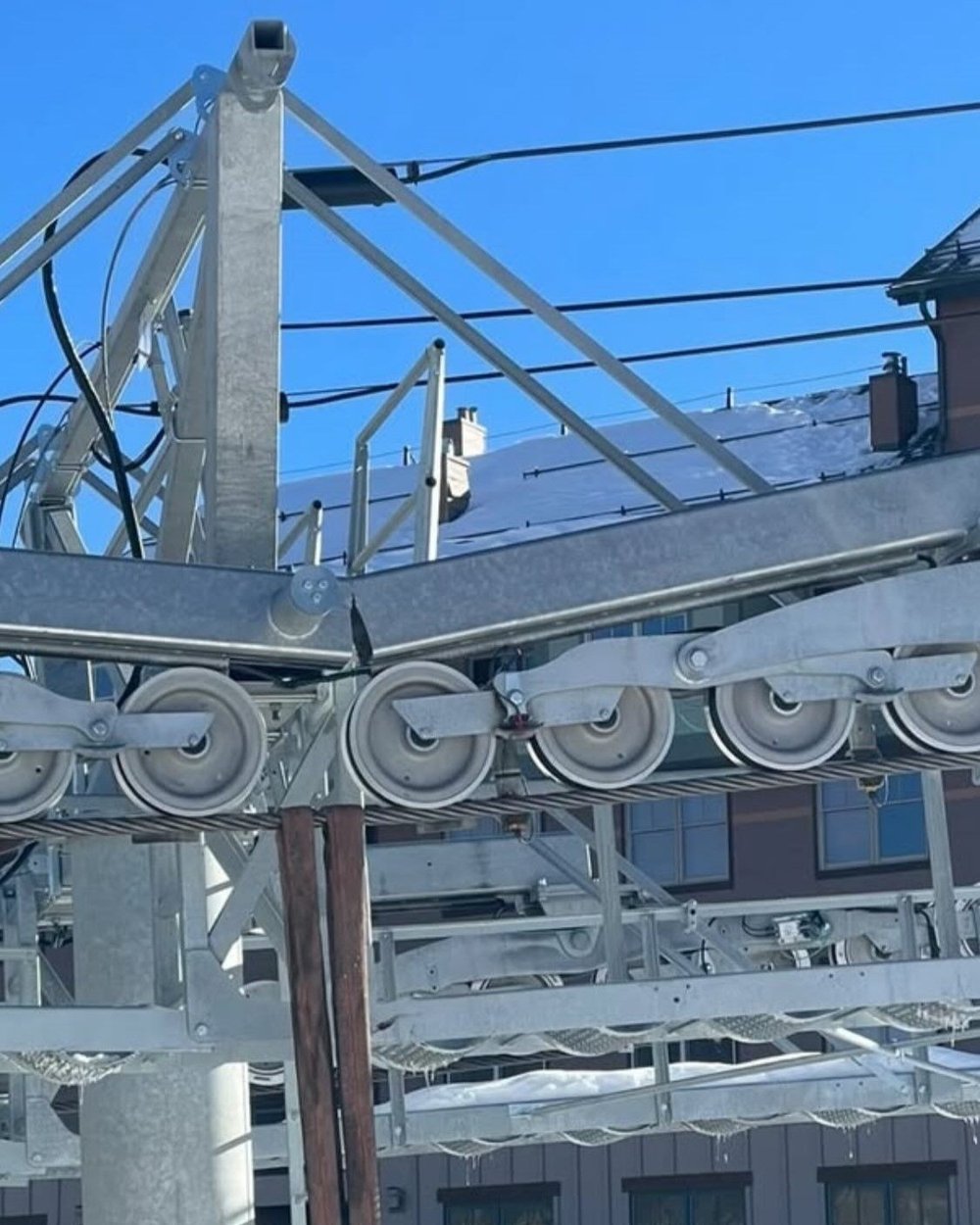
Incident #2: Winter Park Gondola
But if it were just the locally-oriented Montana Snowbowl that saw its chairs falling apart, this season would have continued with a very different narrative. Only six days after that incident, another catastrophic lift failure occurred at a much-better-known resort, Colorado’s Winter Park.
A critical mechanical failure occurred on The Gondola when a tower component broke, causing an immediate shutdown and leaving 174 skiers and riders stranded on the lift. The specific issue involved a cracked terminal sheave assembly, a critical part of the gondola system responsible for guiding and supporting the haul rope as it moves through the lift terminals. This crack likely developed due to metal fatigue, stress over repeated cycles, or undetected manufacturing defects.
Once the crack reached the point where it could no longer properly support the rope, the gondola system triggered an automatic safety shutdown—but thankfully, this shutdown also meant nobody was injured. That being said, given the situation of the failure, ski patrol had to conduct a complex rope evacuation, requiring each stranded passenger to be safely lowered to the ground using harnesses. The entire process took approximately five hours.
The resort conducted an internal review and replaced the failed sheave assembly before reopening the gondola before the busy Christmas holiday, and luckily, there have been no issues since. Given the relatively young age of the lift, it’s not out of the question that this part failed due to a manufacturing defect, but concerns remain about the load demand on this high-volume, out-of-base lift and whether other similar components could be at risk in other gondolas of the same design.
A chair on Heavenly’s Comet Express lift slid backward into another chair following a grip failure on December 23, 2024. Source: xamfed | Reddit
Incident #3: Heavenly Comet Express
But while neither of the first two incidents had anyone injured, a much more substantial failure occurred only two days later. At Lake Tahoe’s Heavenly resort, a serious chairlift collision occurred on December 23, 2024, when a chair on the Comet Express detachable quad lift slid backward into another chair. This circumstance resulted in a violent impact that sent multiple riders tumbling onto the snow below.
The failure at this Vail-owned mountain was traced to a detachable grip malfunction, a critical component that allows chairs to securely attach to and detach from the haul rope at the terminal. These grips rely on a precise clamping mechanism, and any failure—whether due to wear, improper tensioning, or a mechanical defect—can lead to a chair losing its grip and sliding uncontrolled. In this case, the grip failure caused the chair to slip down the cable at high speed, ultimately colliding with the chair behind it. The impact resulted in five skiers suffering injuries significant enough to require hospitalization, with some reportedly falling over 30 feet to the ground. Witnesses described a loud, jarring crash and chaotic moments as ski patrol rushed to secure the area and evacuate remaining riders.
This incident sent five people to the hospital, with some reportedly falling over 30 feet to the ground.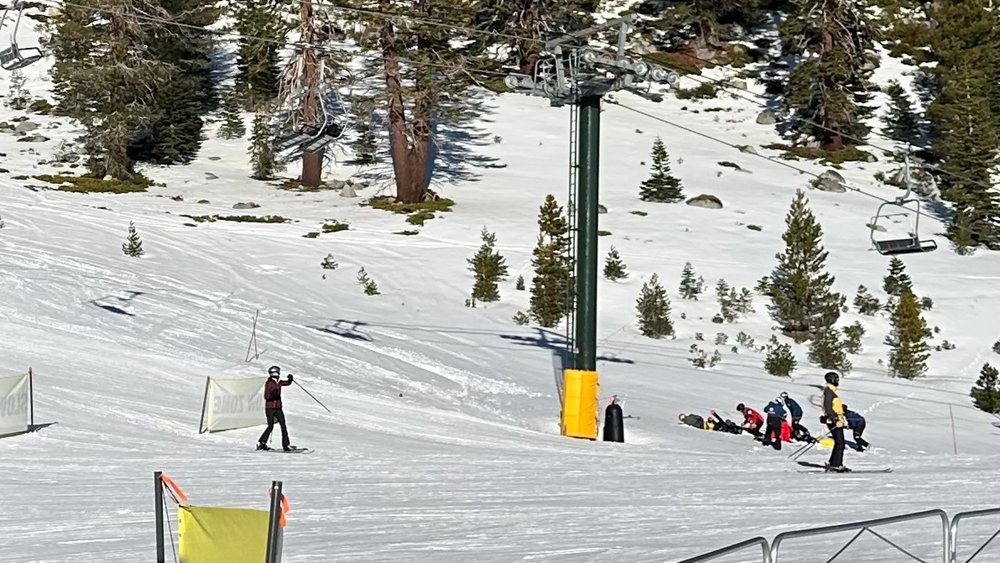
While the Comet Express is a detachable high-speed lift that might feel pretty modern on the surface, it was installed all the way back in 1988, making it one of the oldest detachable chairlifts still in operation in North America today. While the Comet lift has undergone modernizations over the years, its age meant that wear-related incidents could happen without proper maintenance. News of this accident was somewhat drowned out by a ski patrol strike going on at Vail-owned Park City, but the incident still raised public concerns about whether the detachable grips were nearing the end of their lifespan—and whether Heavenly’s owner, Vail Resorts, was doing enough to properly maintain other similar components across its aging lift fleet. As we’ll discuss later in this video, these concerns may have been well founded.
The snapped chairlift bail at Sun Valley on or around December 31, 2024. Source: Teton Gravity Research Forum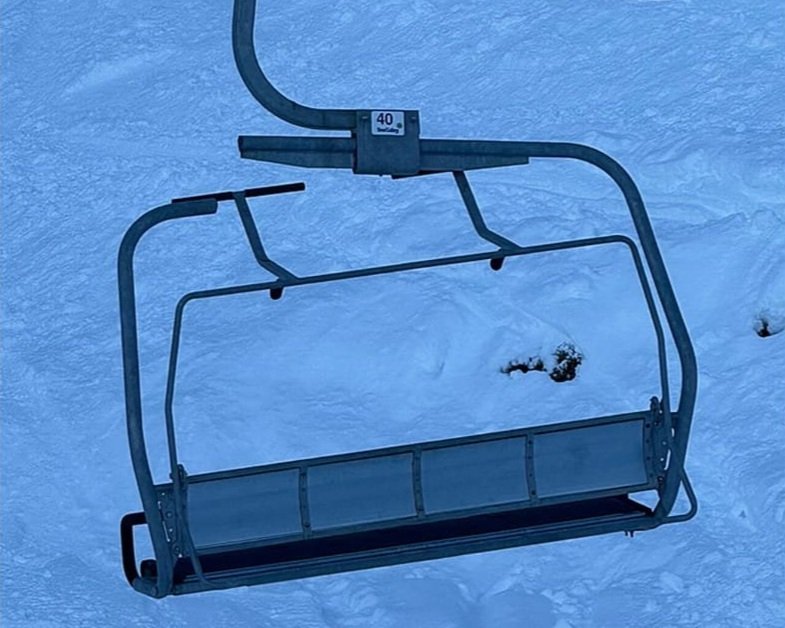
Incident #4: Sun Valley Lookout Express
But before we move out of 2024, we have to cover the fourth and final publicly-known chairlift failure of what was an objectively terrible December for U.S. ski lift incidents. At Idaho’s Sun Valley resort, the Lookout Express high-speed quad chairlift suffered a bail failure at the end of the Christmas holiday period, prompting an immediate shutdown of the lift. While the resort has not officially confirmed the date and details of the incident, an anecdotal forum discussion claims that the failure occurred on December 31 at the very beginning of the day—and that passengers were loading the lift at the time the bail snapped. Thankfully, there’s no evidence to suggest that anyone was injured.
That said, a fracture in a chairlift bail is highly unusual. These U-shaped bars are responsible for securing the chair that skiers and riders sit on to the haul rope, and accordingly, they’re designed to withstand repeated stress over thousands of cycles. However, given that Lookout Express was installed in 1994, it is now 30 years old, meaning that just like Heavenly’s Comet Express, it’s one of the older high-speed detachable lifts still in operation. Over time, metal fatigue, corrosion, or stress fractures can weaken the integrity of lift components, especially if they are not inspected or replaced at appropriate intervals. While Sun Valley has not publicly disclosed whether the broken bail was an original component or a replacement, the fact that it failed suggests that either the part was past its safe operational lifespan or that it had an undetected defect. Following the incident, the lift underwent a thorough inspection and necessary repairs before reopening only a few days later, though this failure raises broader concerns about the longevity of older detachable lifts and whether similar failures could occur at other resorts operating lifts of this vintage.
A chair detached from Mission Ridge’s Chair 4 lift (pictured above) on January 1, 2025.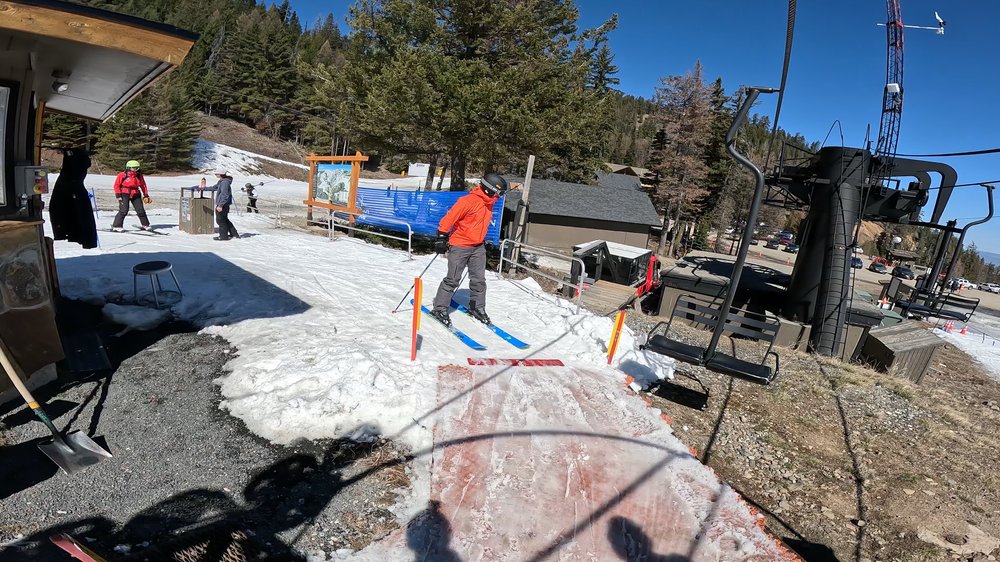
Incident #5: Mission Ridge Chair 4
Unfortunately for those hoping for better chairlift luck in 2025, the next major U.S. lift failure happened less than 24 hours after the new year started.
On January 1, 2025, Chair 4 at Washington’s Mission Ridge suffered a mechanical failure that caused the haul rope to come out of alignment at a tower, leading to two empty chairs detaching from the cable. The incident occurred on the “light side” of the lift (the side without passengers), meaning no skiers or snowboarders were directly in the affected chairs when they fell. However, the lift was at capacity at the time, and several riders were left stranded in the air as ski patrol initiated a rope evacuation. Notably, Chair 4 is a Riblet double, utilizing the same lift design as the Montana Snowbowl chairlift that failed just weeks earlier.
So what caused the failure at Mission Ridge? The haul rope misalignment suggests that excessive wear and tear may have played a role, and a situation like this likely could have been prevented with better maintenance protocols. However, the pattern of failures on Riblet double chairlifts raises a larger question. Could there be inherent design flaws in these older chairs that make them more prone to detachment in high-stress situations? In this case, the force of the haul rope displacement was enough to shake these carriers loose—but a different chairlift design might have maintained its grip under the same circumstances.
Chair 4 reopened the following day after maintenance crews confirmed it was safe to operate—but as we’ll discuss later in this piece, perhaps they should have been keeping a closer eye on it.
A chair on Attitash’s Flying Bear lift detached from the cable on February 2, 2025, plummeting 20 feet to the ground and sending an occupant to the hospital. Source: Fluffhead_Phan | Reddit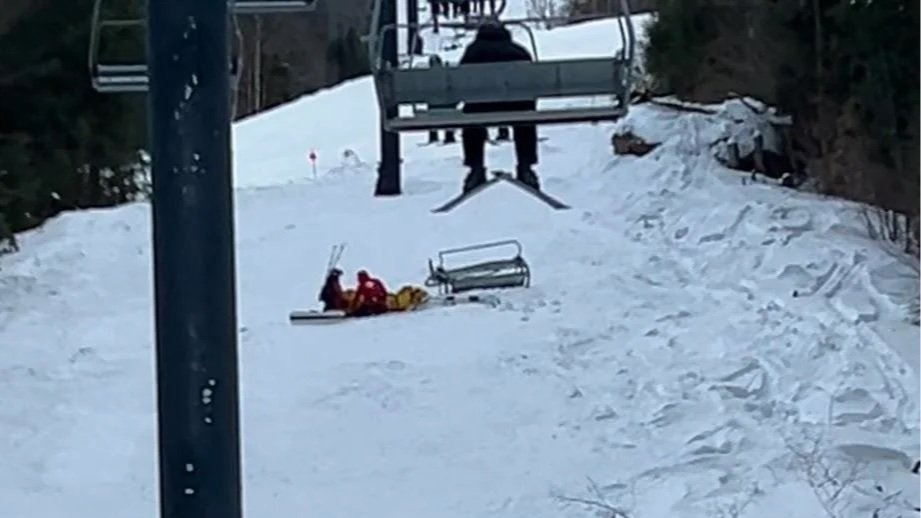
Incident #6: Attitash Flying Bear Lift
After five incidents over the course of less than three weeks, the North American ski world went nearly a month without another catastrophic accident. Unfortunately, some of the concerns that arose from the December Heavenly incident would come to fruition on February 2, 2025, when a catastrophic incident occurred at another Vail-owned resort, Attitash. On this date, a chair on the resort’s Flying Bear detachable quad lift detached from the haul rope and plummeted 20 feet to the snow below, with a skier still seated. The skier who fell was injured but survived, later being hospitalized with non-life-threatening injuries.
The incident was traced to a severely worn grip assembly, the critical mechanism responsible for securely attaching the chair to the moving haul rope—and a very similar component to the one that failed earlier that year at Heavenly. Unlike fixed-grip chairs, which are permanently attached to a haul rope, detachable grips rely on spring-loaded clamps that repeatedly engage and disengage as the chair enters and exits terminals. Over time, constant tension and metal fatigue can wear down these components, reducing their ability to maintain a firm grip on the rope. Investigators later revealed that the grips on Flying Bear were found to be heavily worn, suggesting they had not been replaced at appropriate intervals.
A closeup of the detached chair carrier and broken grip following the accident. Source: Fluffhead_Phan | Reddit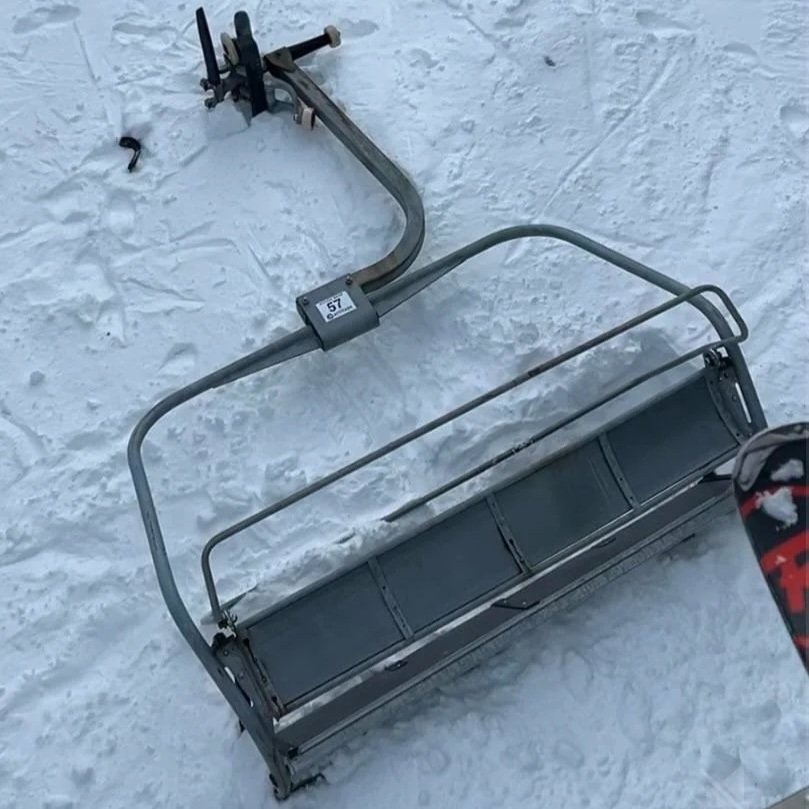
The Flying Bear incident could not have come at a worse time for Attitash’s owner. Vail Resorts was already under fire for aggressive cost-cutting measures across its portfolio, with reports of stagnant revenue growth, corporate layoffs, and wage disputes with employees that culminated in the high-profile December ski patrol strike at Park City. Some industry insiders have speculated that budget constraints could be leading to deferred maintenance at Vail-owned resorts, though the company has vehemently denied any connection between financial challenges and lift safety. Still, with multiple serious lift failures this season, it’s becoming harder for Vail to avoid scrutiny over whether its cost-cutting measures have come at the expense of mountain operations and skier safety.
A chair detached from the Honey Pot Hoist double chairlift at Mount Bohemia on February 7, 2025; this was the third Riblet double chairlift to experience such an incident this season. Source: Conor Smith | Facebook
Incident #7: Mount Bohemia Honey Pot Hoist Double Chair
The next two incidents weren’t as high profile, but notably, they were the third and fourth to involve Riblet double chairs this season. Just five days after the Attitash incident on February 7, 2025, a chair fell from the double lift at Mount Bohemia, Michigan. The chair detached from the rope at the end of the line following what was apparently a “bad unload” by snowboarders, causing the chair to swing and hit a lift tower. Nobody was riding the specific chair when it fell, and after the lift was stopped for approximately 20 minutes, it resumed operation for the remainder of the day.
Incident #8: Mission Ridge Chair 4 (Again)
Just a day later on February 8, 2025, a chair fell from the Chair 4 lift at Mission Ridge again. This time, the circumstances were quite similar to both the Mount Bohemia and Montana Snowbowl incidents: an empty chair detached from the haul rope after excessive swinging caused it to hit a lift tower. Luckily, there were no guests or staff in the vicinity, and no injuries were reported. Following a thorough inspection by the lift maintenance team that confirmed there was no damage to the haul rope, Chair 4 remained operational for the rest of the day.
Fortunately, all of this season’s Riblet double chair detachments have involved empty chairs, avoiding any injuries so far. However, the sheer number of these failures raises serious concerns about their safety—or, at the very least, the operational protocols used to maintain and operate them. As we discussed in the Montana Snowbowl section, similar incidents in past seasons have resulted in injuries when fully loaded chairs detached, proving that this isn’t just a theoretical risk. If excessive chair swing can cause these chairs to fall off the cable, resorts need to be taking proactive steps to prevent these situations from occurring in the first place—especially when passengers are on board.
On February 10, 2025, a gondola cabin detached from the cable at Kicking Horse after a hanger arm failure. Source: Brandon Shaw
Incident #9: Kicking Horse Golden Eagle Gondola
But just a few days ago, the ski world was reminded that catastrophic lift failures were not exclusive to Vail Resorts, Riblet double chairs, or the United States. On March 10, 2025, a gondola cabin fell off the line at Western Canada’s Kicking Horse resort. The Golden Eagle Express, a 25-year-old gondola and the only lift providing access to over two-thirds of the resort’s terrain, suffered a catastrophic hanger arm failure, causing a cabin with eight passengers to detach and fall to the ground. Fortunately, the cabin was only a few feet from the ground, and there were no serious injuries reported among the occupants. However, the resort did have to spend hours rope evacuating other guests on the lift, and they ordered a full mountain closure following the incident to clean up the debris.
It’s hard to understate the importance of the Golden Eagle gondola in Kicking Horse’s lift fleet; this is a year-round, day-and-night lift and one of the longest and tallest gondolas in North America. Apparently, the lift was especially heavily loaded on the morning powder day of the incident. This is not the first time Kicking Horse’s gondola has had mechanical issues—prolonged stoppages and electrical problems have occurred in the past, with one incident in 2016 requiring helicopter-assisted evacuations.
This Kicking Horse gondola hanger arm pictured above failed, plummeting the rest of the cabin to the ground. Source: Liftblog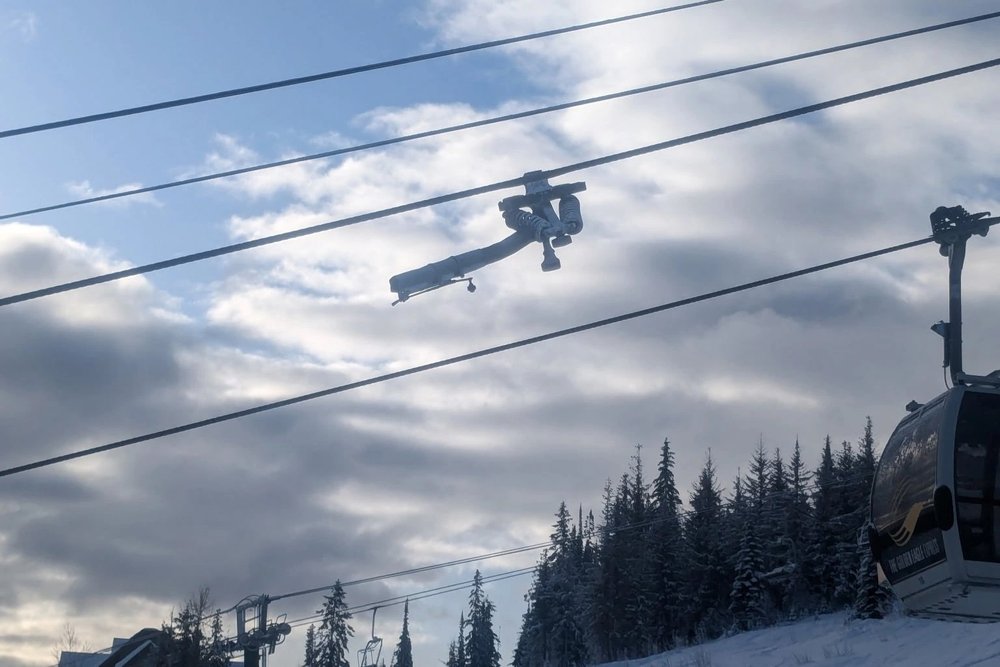
While Resorts of the Canadian Rockies (RCR), Kicking Horse’s parent company, is not a publicly traded entity like Vail, it has a reputation for reinvesting very little into lift infrastructure. Over the past decade, RCR has replaced almost no lifts at its resorts, despite many of them aging beyond their expected lifespan. Its most infamous lift failure occurred at Mont-Sainte-Anne, where the L’Étoile Filante gondola experienced three significant failures between 2020 and 2022. After the third failure, the Quebec provincial government ordered the closure of the gondola for what was essentially the entire 2022-23 winter season. Now that catastrophic component failures have occurred on both of the gondolas RCR owns, several concerns have resurfaced about whether the company is deferring critical lift maintenance to cut costs, even as these incidents continue to happen and put skiers and riders at risk.
Given that the Golden Eagle Express is the only lift providing access to Kicking Horse’s upper terrain, this failure raises the real possibility that the resort will be forced to close the majority of its terrain for the rest of the season. This is much like what happened at Mont-Sainte-Anne a few years back—but to an even greater extent because of the sheer importance of this singular lift. If the hanger arm issue is found to be systemic, RCR may have no choice but to conduct an extensive inspection or full component replacement before the lift can safely reopen—something that could take weeks or even months. Given RCR’s history, it’s unclear whether the resort will be able to get the gondola operational again before the season ends, potentially leaving skiers and riders with only the lower-mountain terrain—which, at the time of this recording, is all that’s open today.
On February 10, 2025, a tragic wind-related incident occurred at Red Lodge, Montana when a rider was fatally ejected from the Triple Chair (pictured).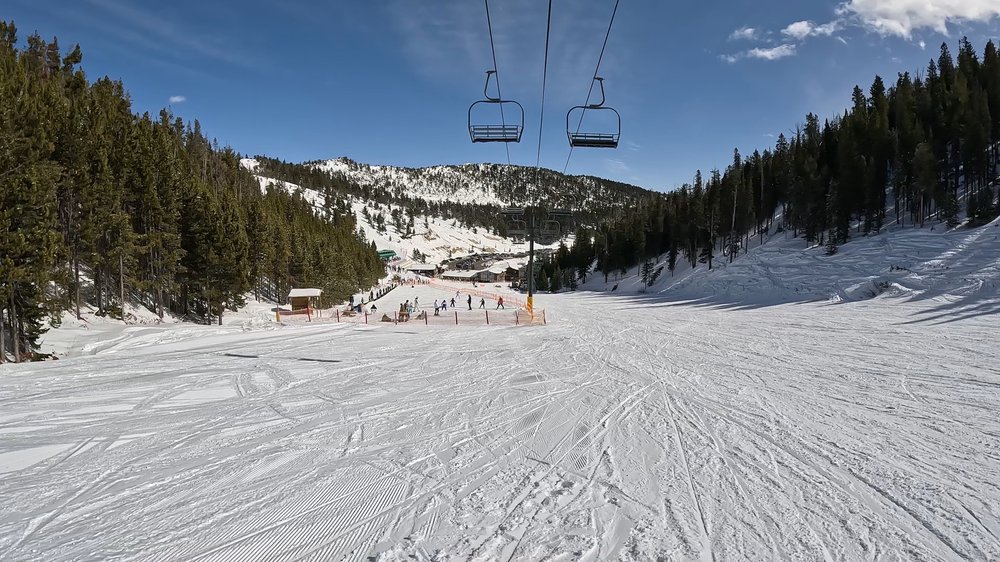
Incident #10: Red Lodge Triple Chair
But while the Kicking Horse incident happened mere days ago, it unfortunately wasn’t the last serious lift malfunction of the season so far. Just a few hours later also on March 10, a tragic accident occurred at Red Lodge Mountain in Montana, when 37-year-old snowboarder Jeff Zinne fell from the resort’s Triple Chair lift. Zinne was later airlifted to a hospital in Billings for treatment, but sadly, he passed away from his injuries on Wednesday morning.
This time around, it doesn’t seem that there was any sort of mechanical issue with the lift. According to Liftblog, the incident may have been wind related, though the exact cause remains unclear. An internal investigation is still underway, and full details have yet to be released. However, one glaring concern is that this 40-year-old lift lacks safety bars, raising questions about passenger security in high winds—and whether the resort should have been operating the lift in such extreme conditions in the first place. Especially with a fatality now involved, this incident calls into serious question whether chairlift safety laws are out of date.
Comparing this season to the two before it, the evidence suggests that this year has indeed been especially bad for major North American lift incidents.
Has the 2024-25 Season Been A Lift Safety Outlier?
All these incidents raise an important question: has the 2024-25 season been an outlier for serious chairlift failures, or are we just experiencing a case of recency bias? Comparing this season to the two before it, the evidence suggests that this year has indeed been especially bad.
To play devil’s advocate, lift failures happen nearly every season, and many of the incidents in 2022-23 and 2023-24 occurred at smaller, locally-oriented resorts that received less national attention. This could mean that the increase in awareness this year is partially due to greater media coverage rather than a surge in actual failures.


That said, media attention alone doesn’t explain the sharp rise in both the number of people affected and the severity of casualties this season. On top of the Red Lodge fatality, the Heavenly chair collision on Comet Express hospitalized five skiers, while the Flying Bear detachment at Attitash incident hospitalized another—far exceeding the injury counts of previous years. In fact, before the Heavenly incident, the last major mechanical failure to cause hospitalization-level injuries was at Camelback, Pennsylvania in March 2021—and following that incident, the resort decided to fully replace the chairlift rather than ever operating it again. The last widely reported wind-related operational failure of this magnitude arguably took place at Willamette Pass, Oregon, in early 2023. And the last fatality to come from a mechanical or operational failure in North America occurred in 2016, at Granby Ranch, Colorado.
Final Thoughts
So make no mistake about it, lift accidents remain relatively rare in the grand scheme of skiing and riding. However, the sheer number of catastrophic lift failures this year calls into serious question the state of maintenance and investment in North America’s aging ski infrastructure. While some of these incidents could be categorized as freak accidents, the majority of this year’s failures show clear signs of deferred maintenance, aging infrastructure, or outright mechanical neglect.
The pattern of failure also points to a deeper issue—many of this year’s failures have occurred at older lifts or at resorts owned by companies with a history of delaying lift investments. The Flying Bear lift at Attitash was later found to have worn-down grips, the Golden Eagle Express at Kicking Horse is perennially overworked and has had previous issues, the Comet Express at Heavenly is over 35 years old at this point, and the Riblet double chairlifts have widely-known issues with excess force. These incidents suggest that many resorts, particularly those owned by large corporations like Vail Resorts and Resorts of Canadian Rockies (RCR), are pushing the limits on how long they can operate aging infrastructure without making significant investments in safety upgrades—and perhaps even more disappointingly, routine maintenance.
While lift accidents remain relatively rare in the grand scheme of skiing, the escalating number of serious failures this season should be a wake-up call for the industry. Without proactive maintenance and timely lift replacements, we could be heading toward even more dangerous incidents in the coming years. It’s clear that resorts can no longer afford to defer maintenance on aging infrastructure—otherwise, more skiers and riders will find themselves victims of increasingly unreliable and hazardous lift systems across the continent.
If you’d like to support Jeff Zinne’s family in this difficult time, consider donating to their GoFundMe here.



